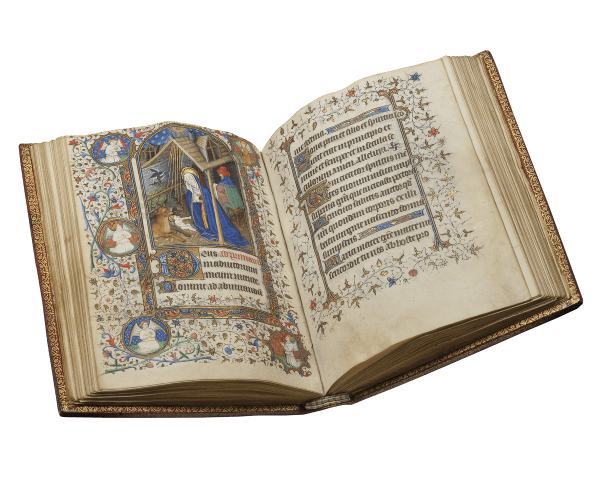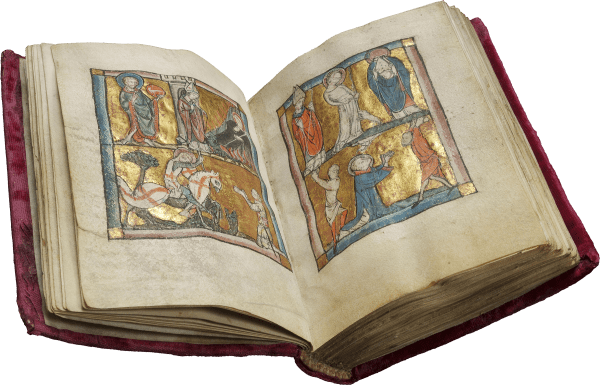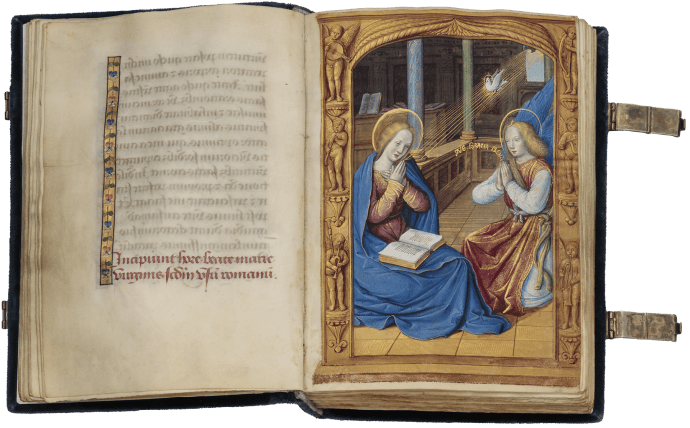


The “Signed Hours” (Use of Rome)
, France, Tours, c. 1490-1500








The “Signed Hours” (Use of Rome)

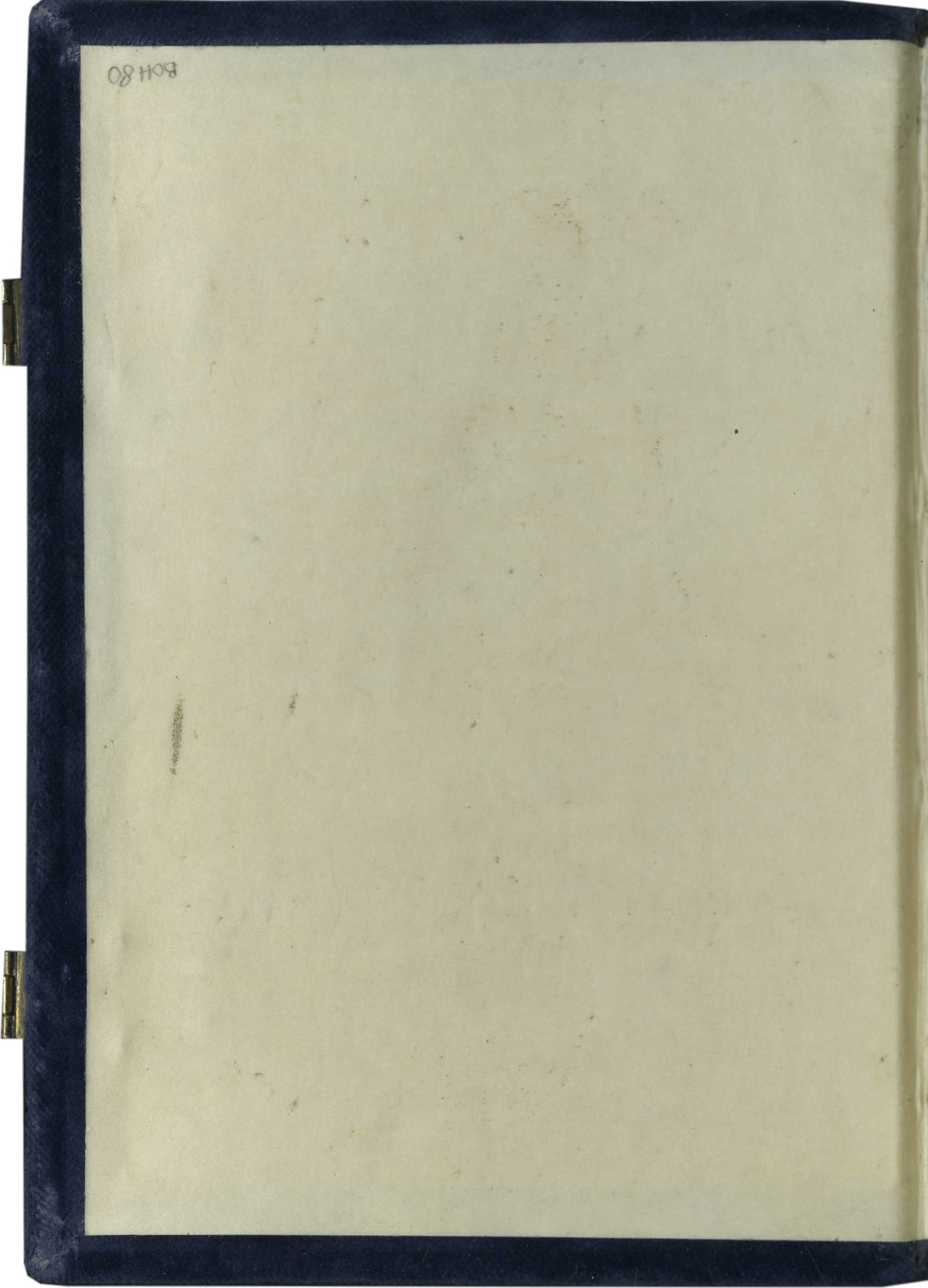
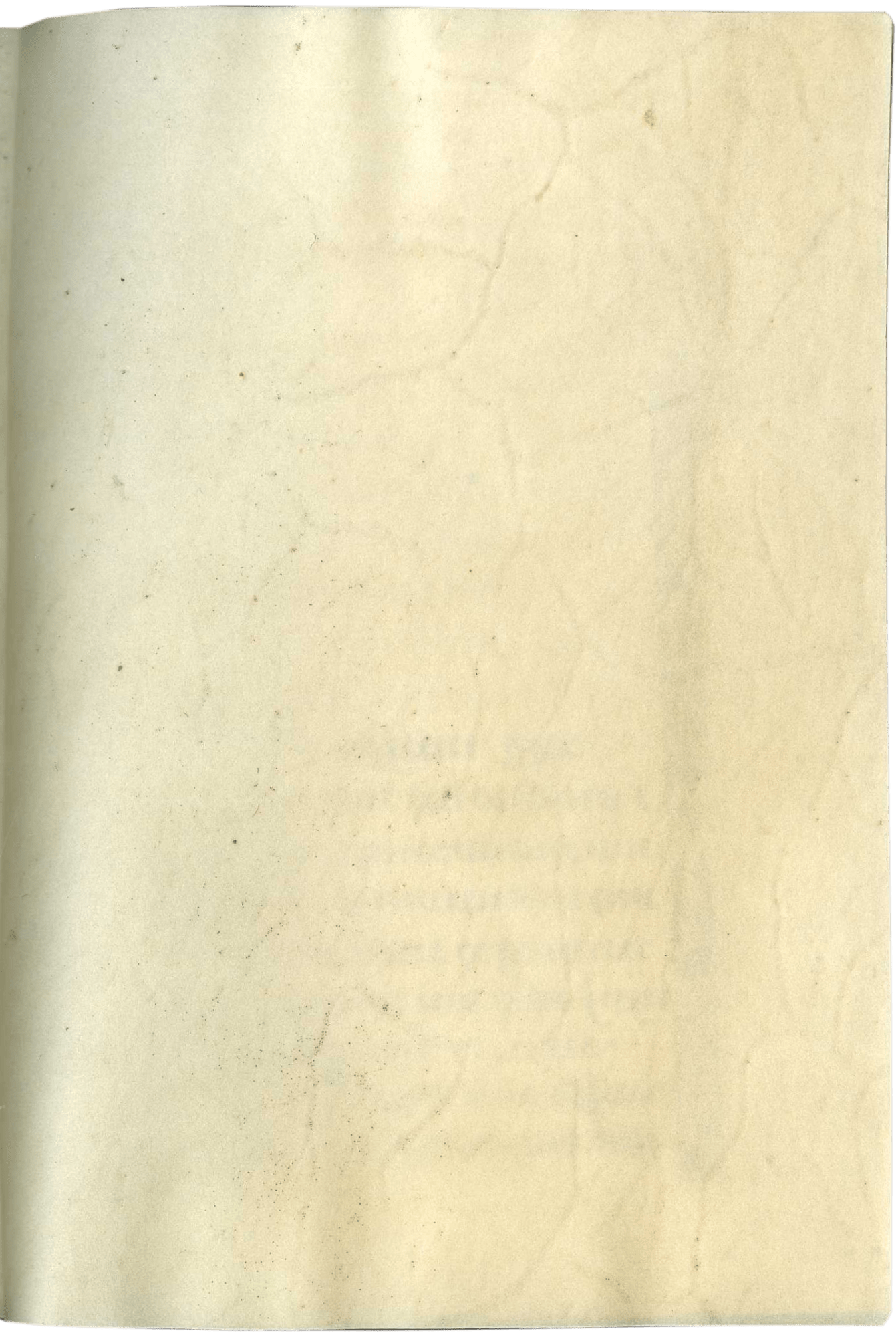

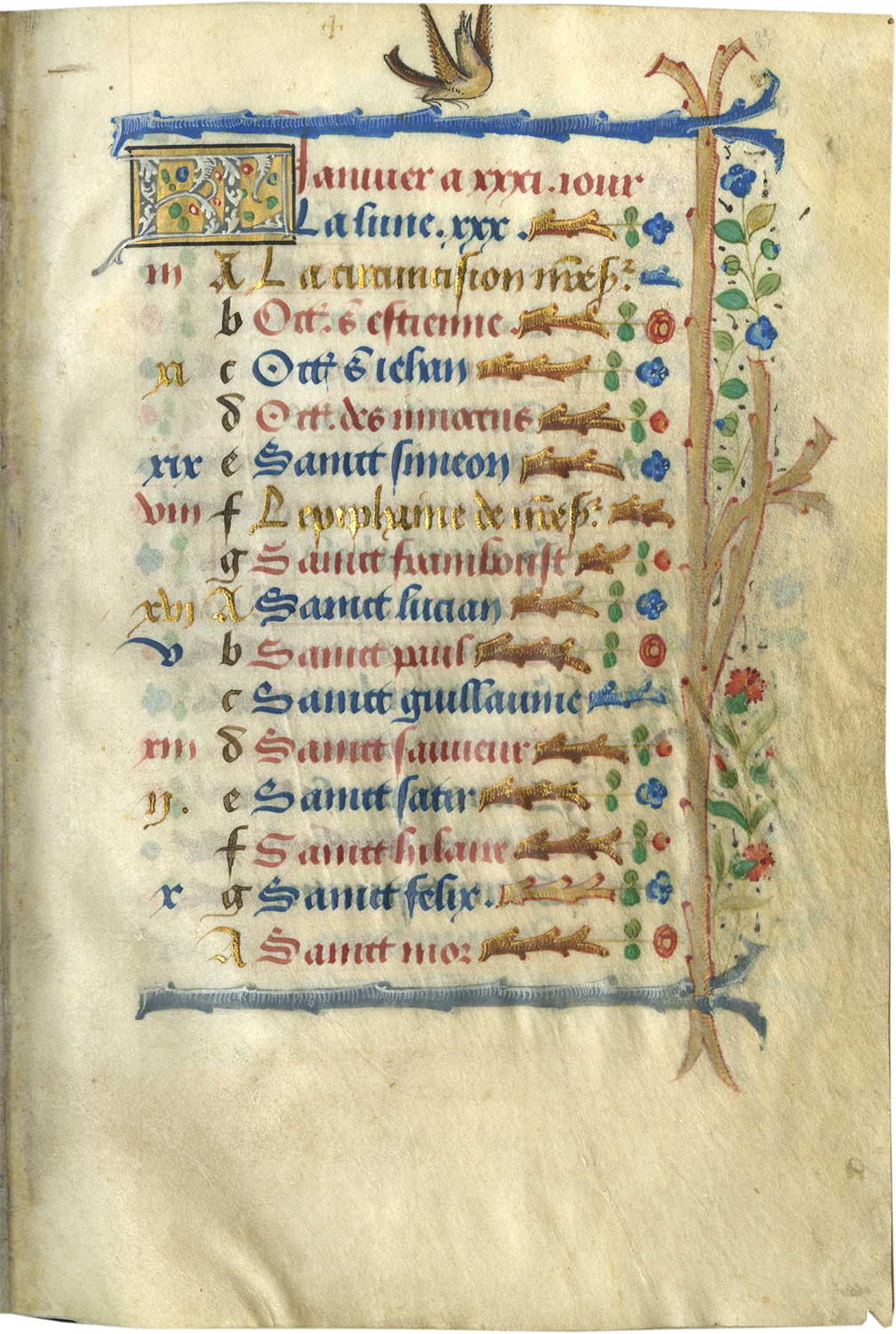

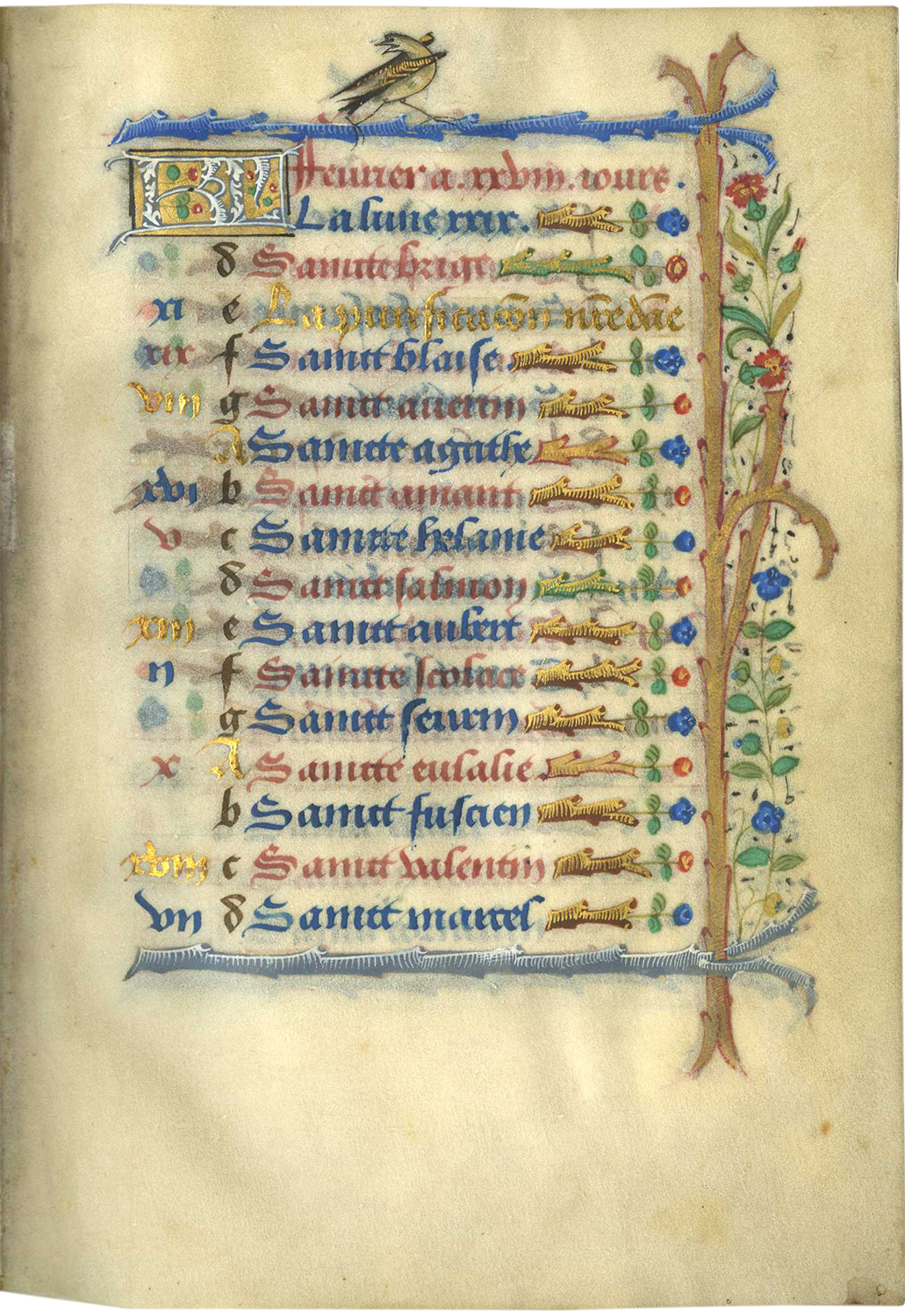

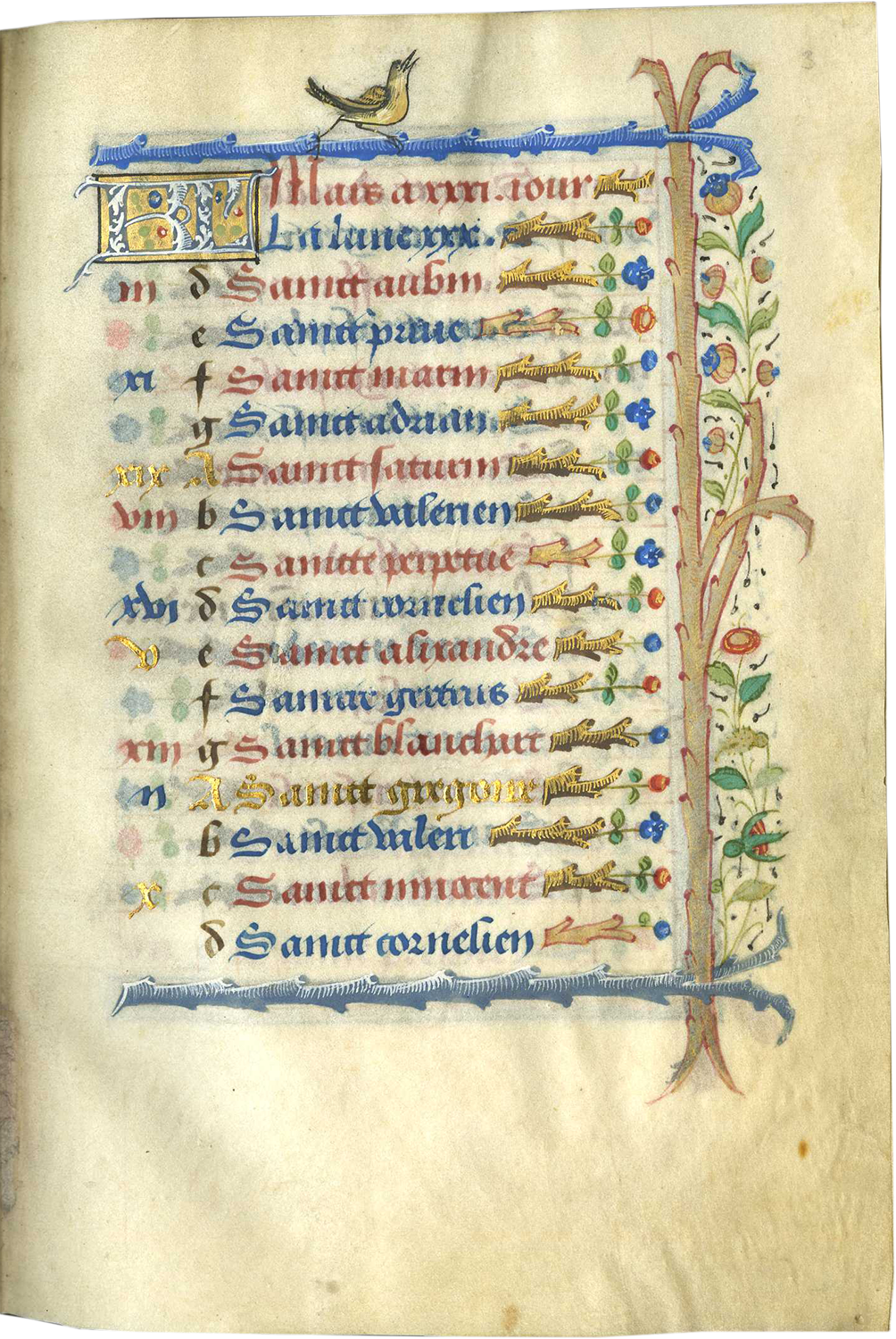

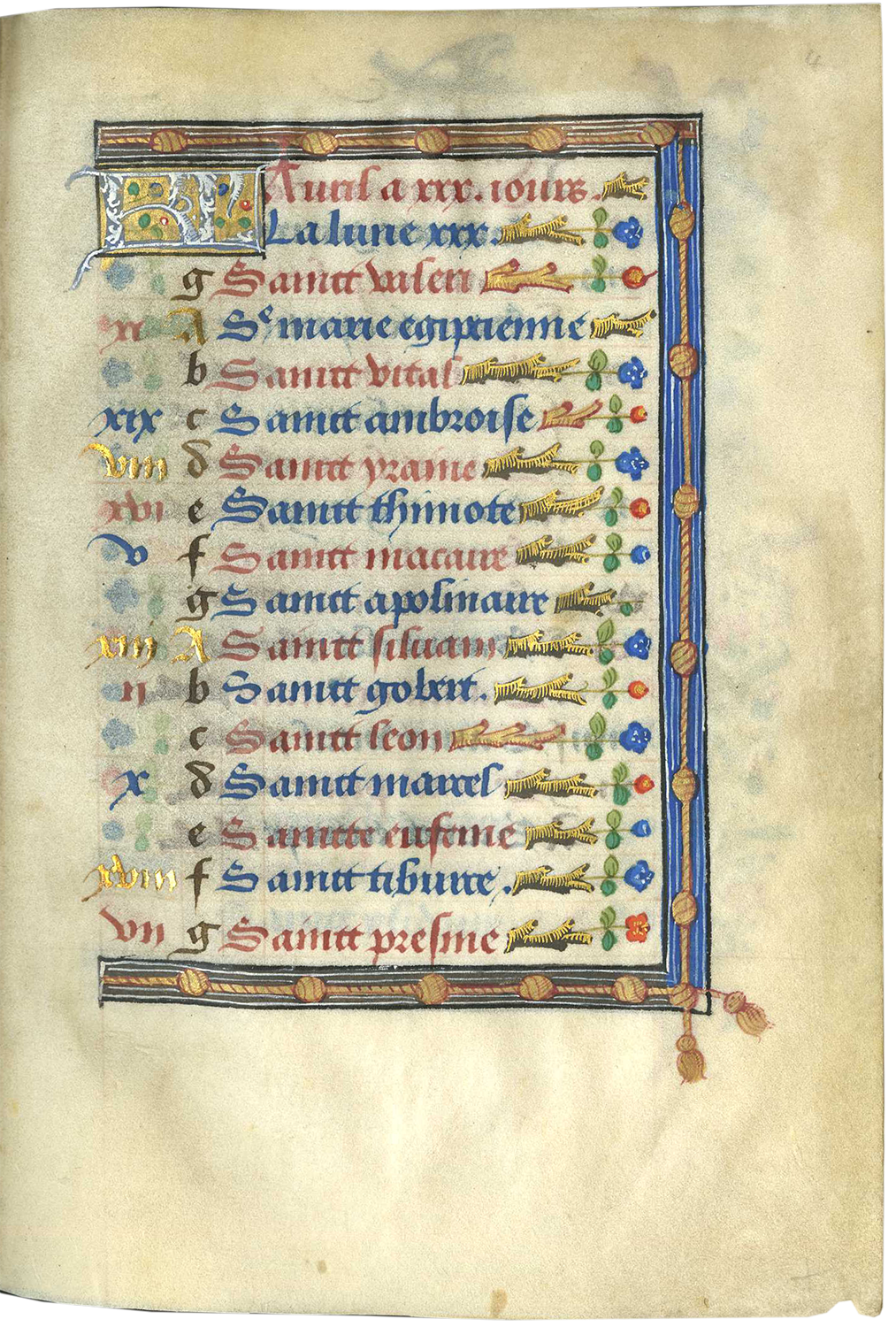

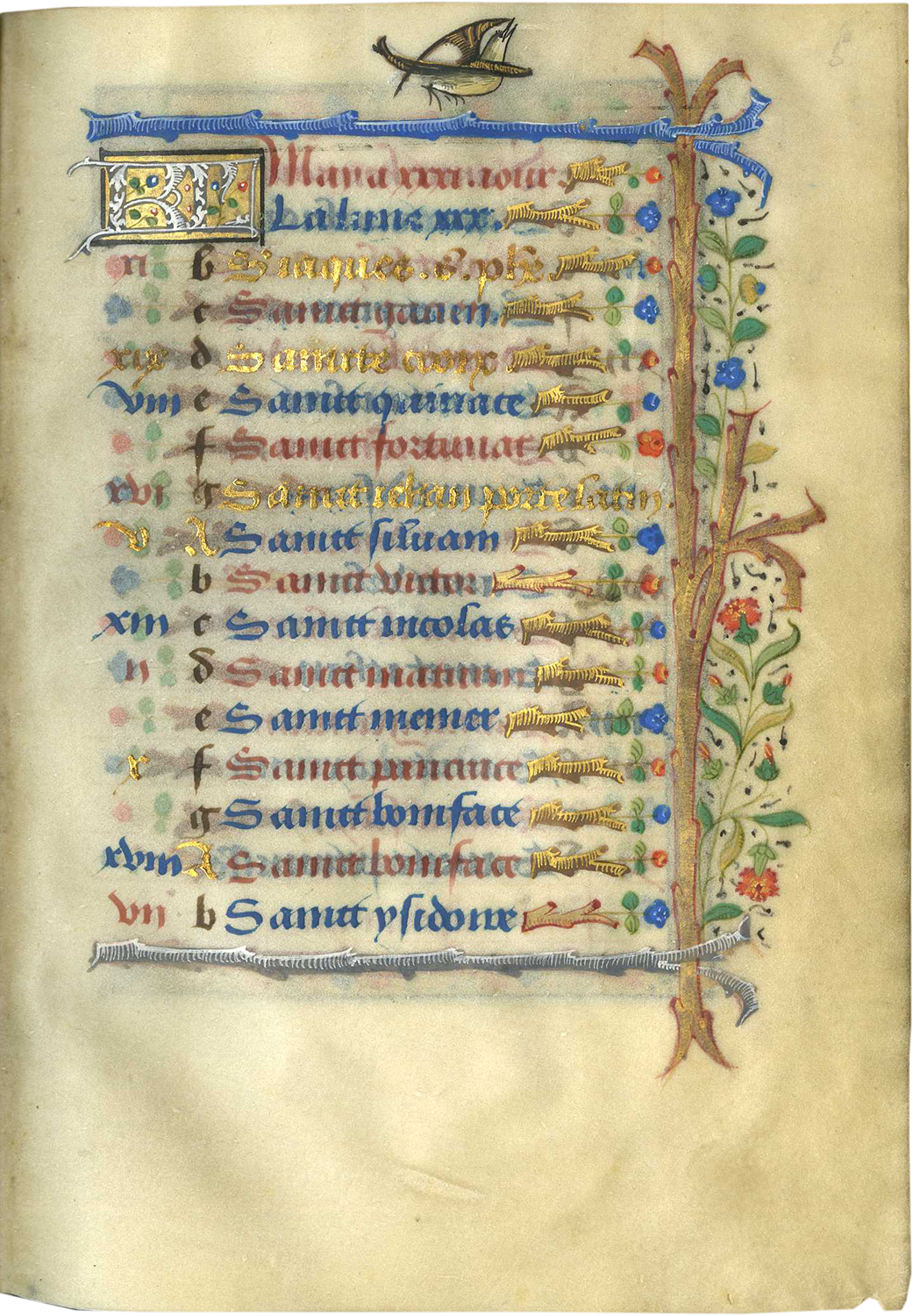
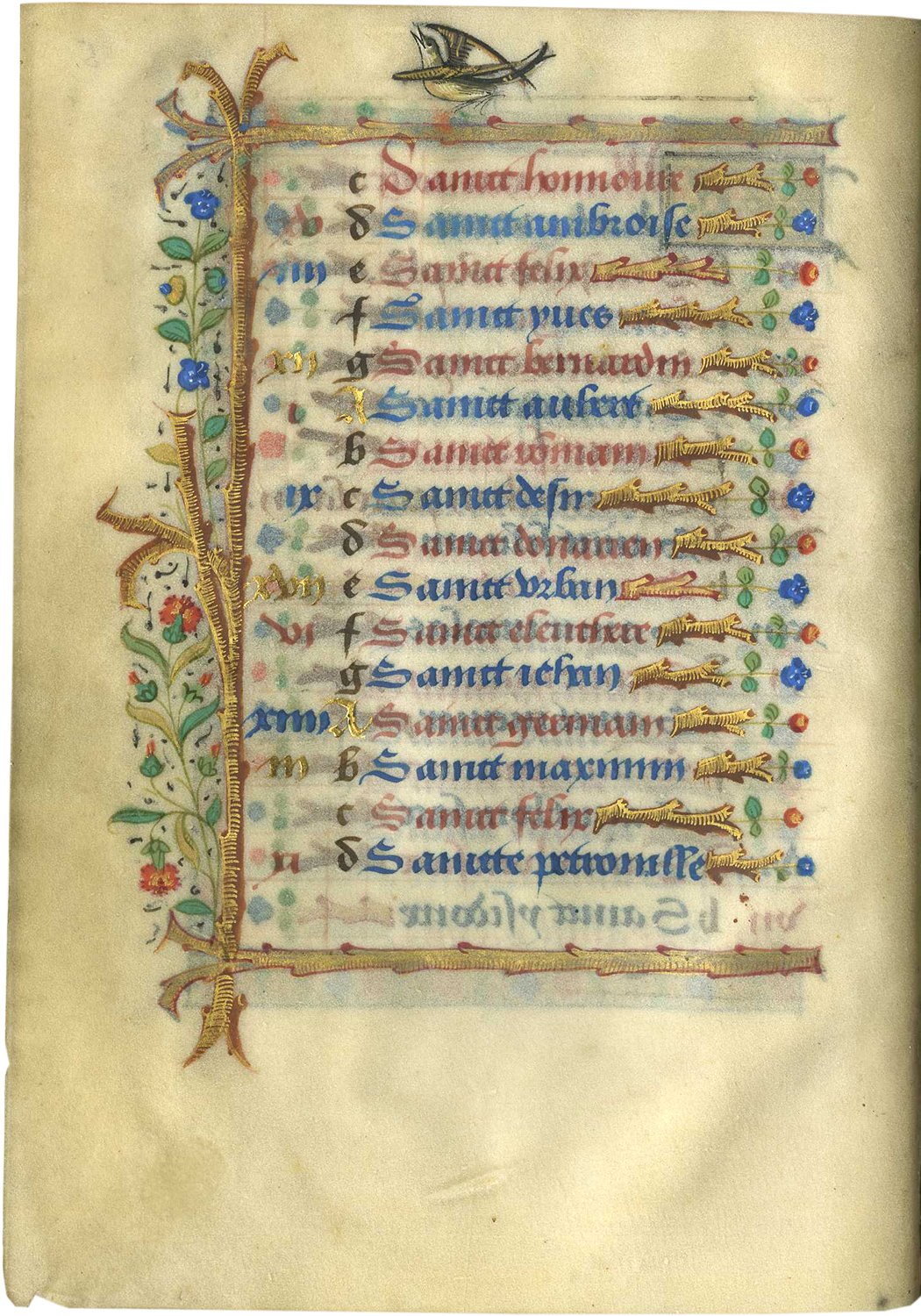
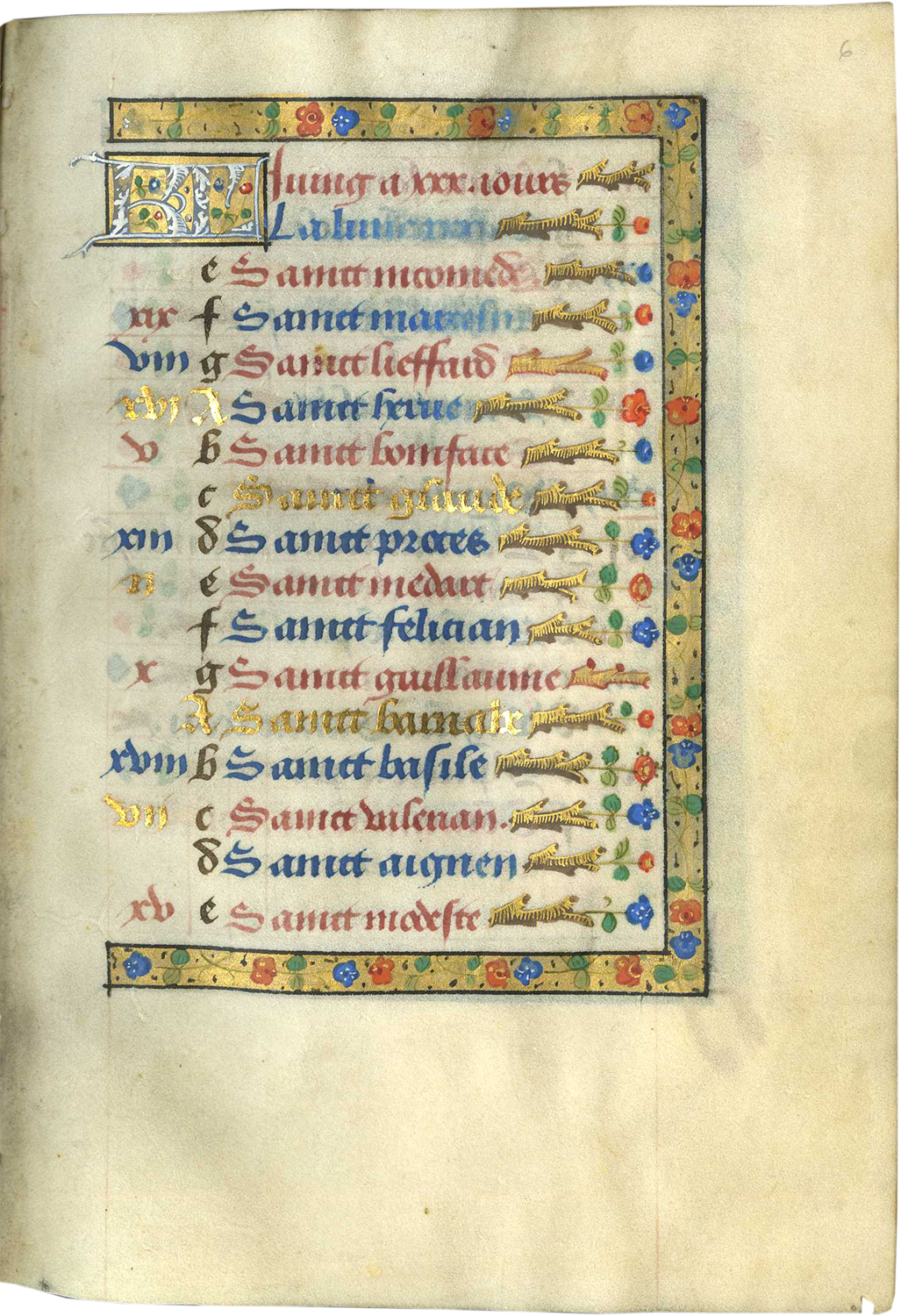
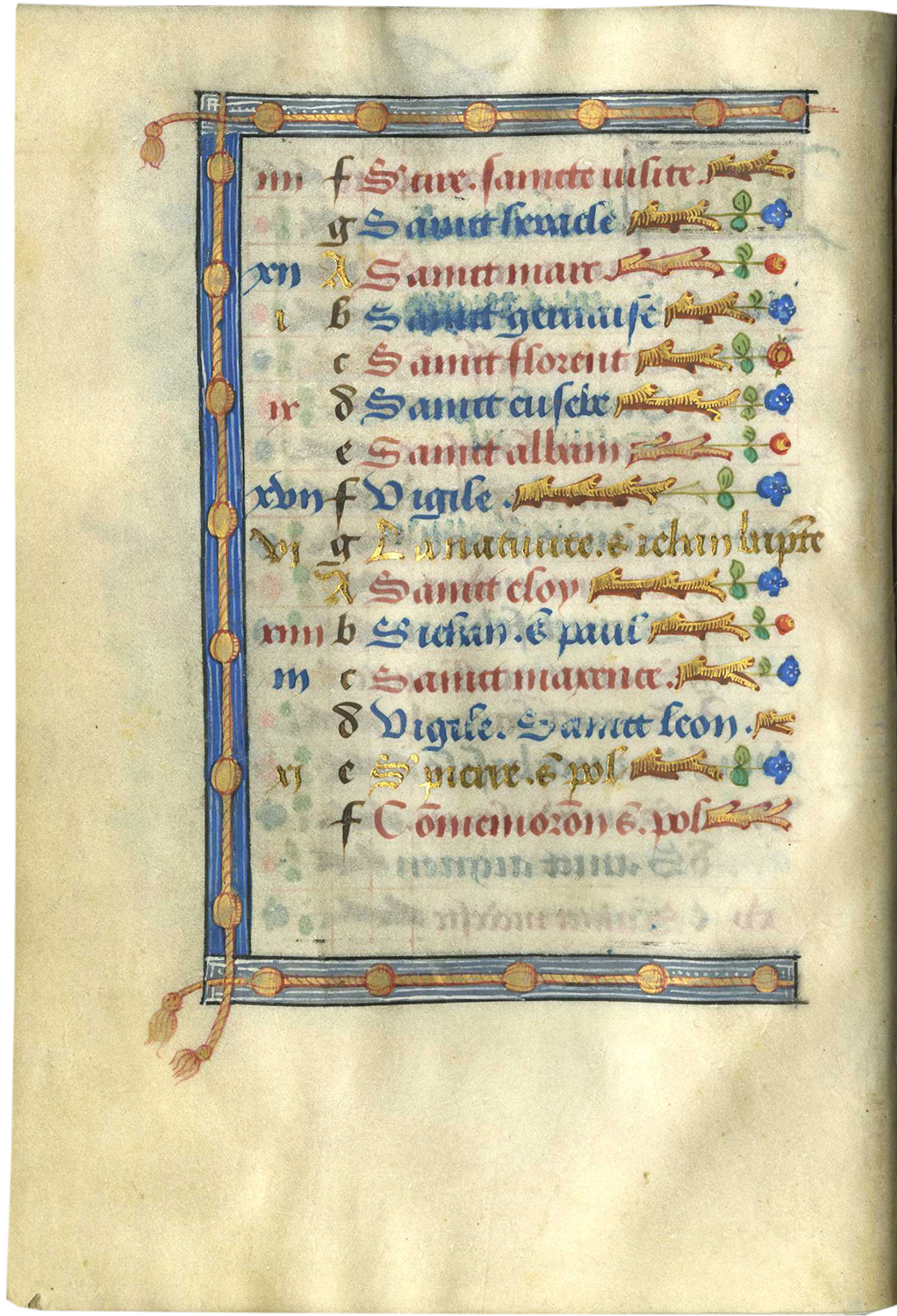
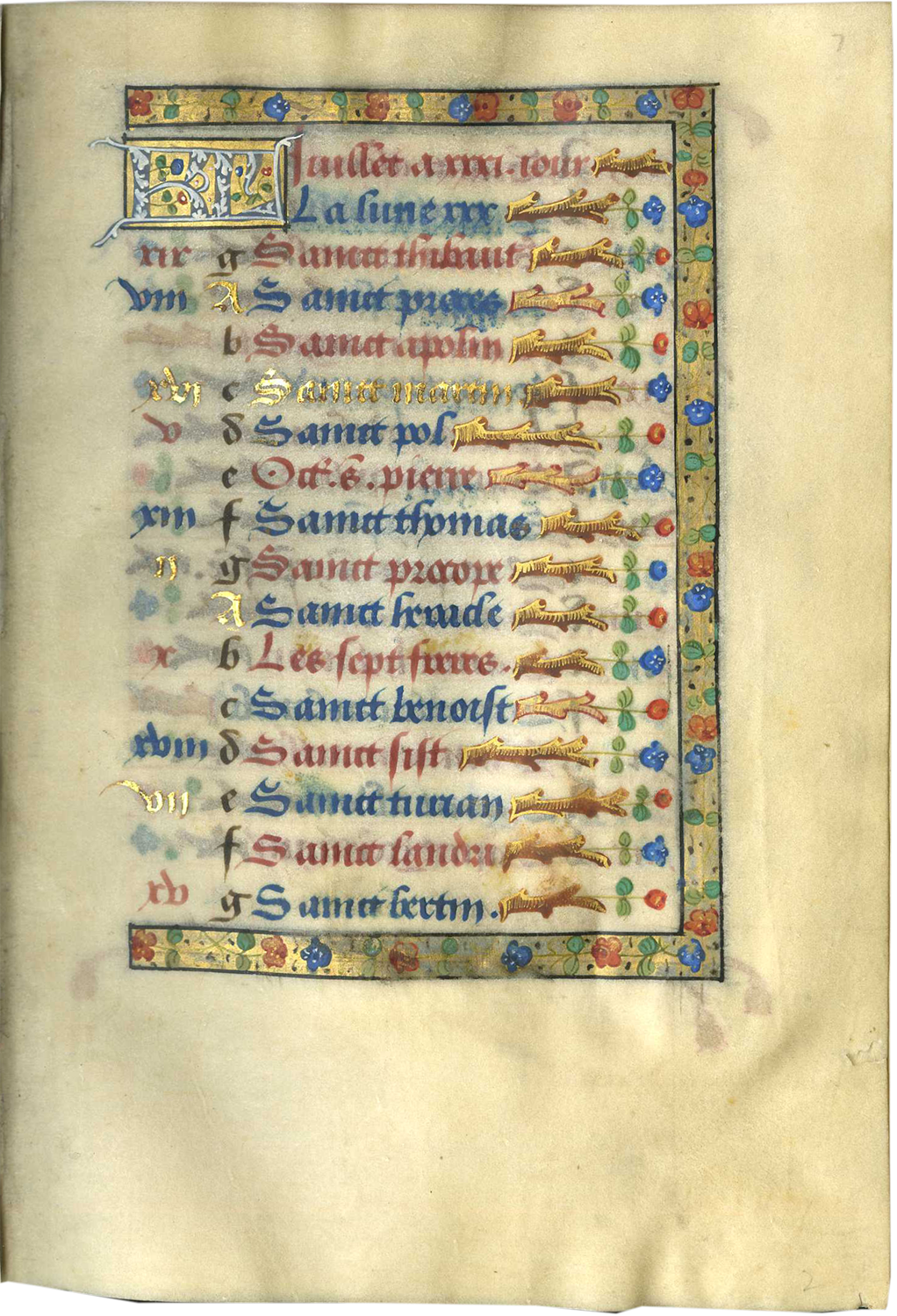
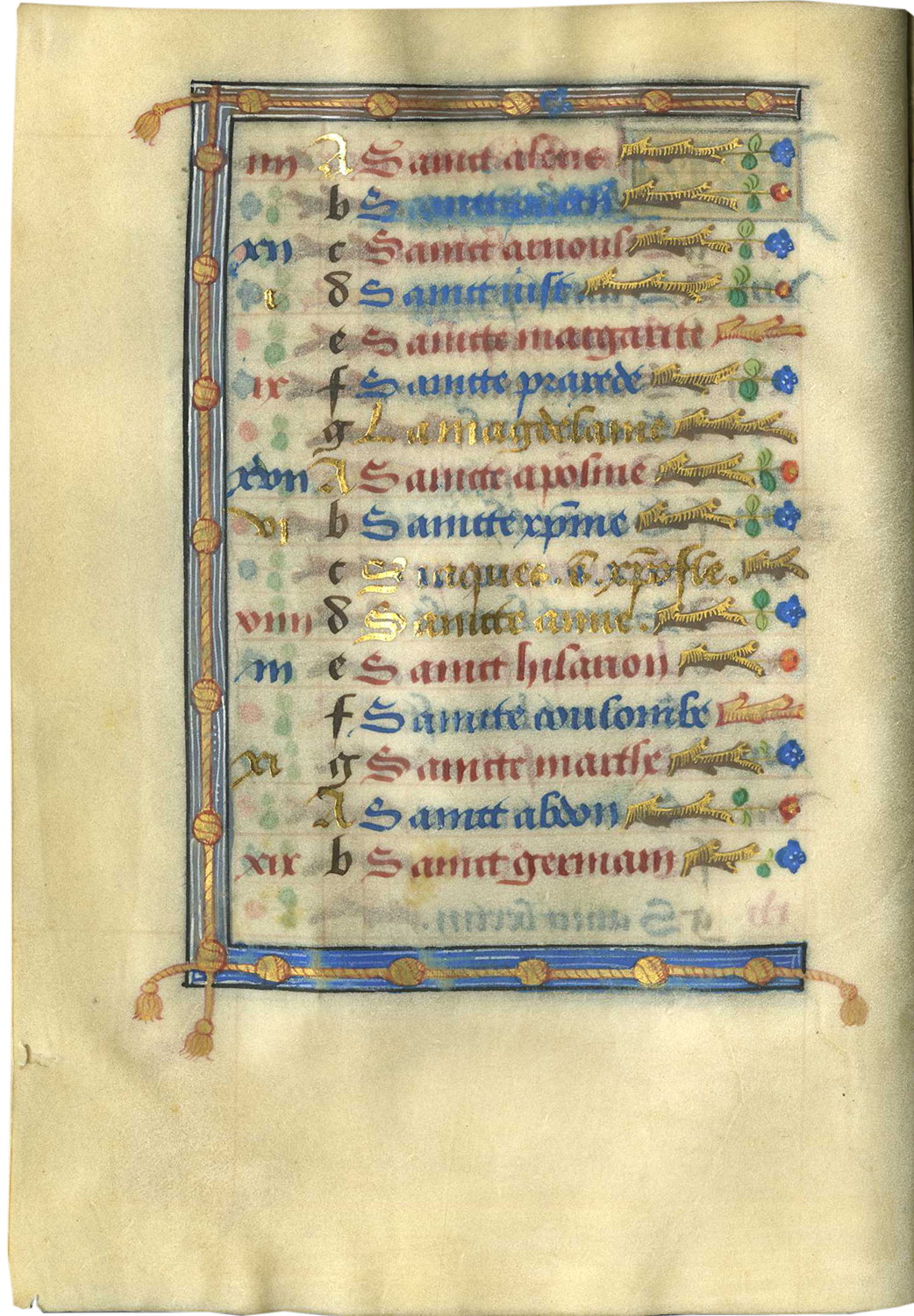
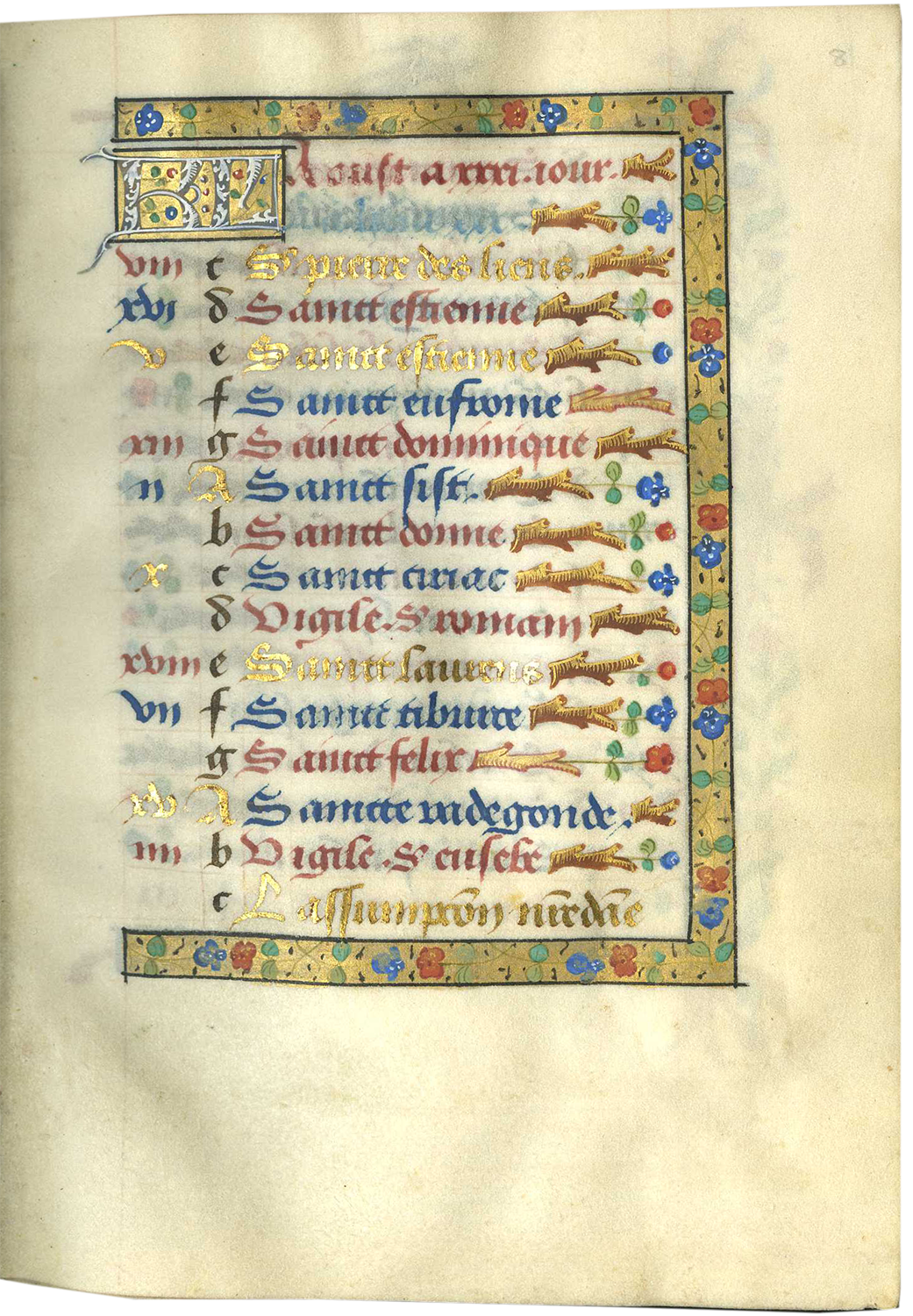

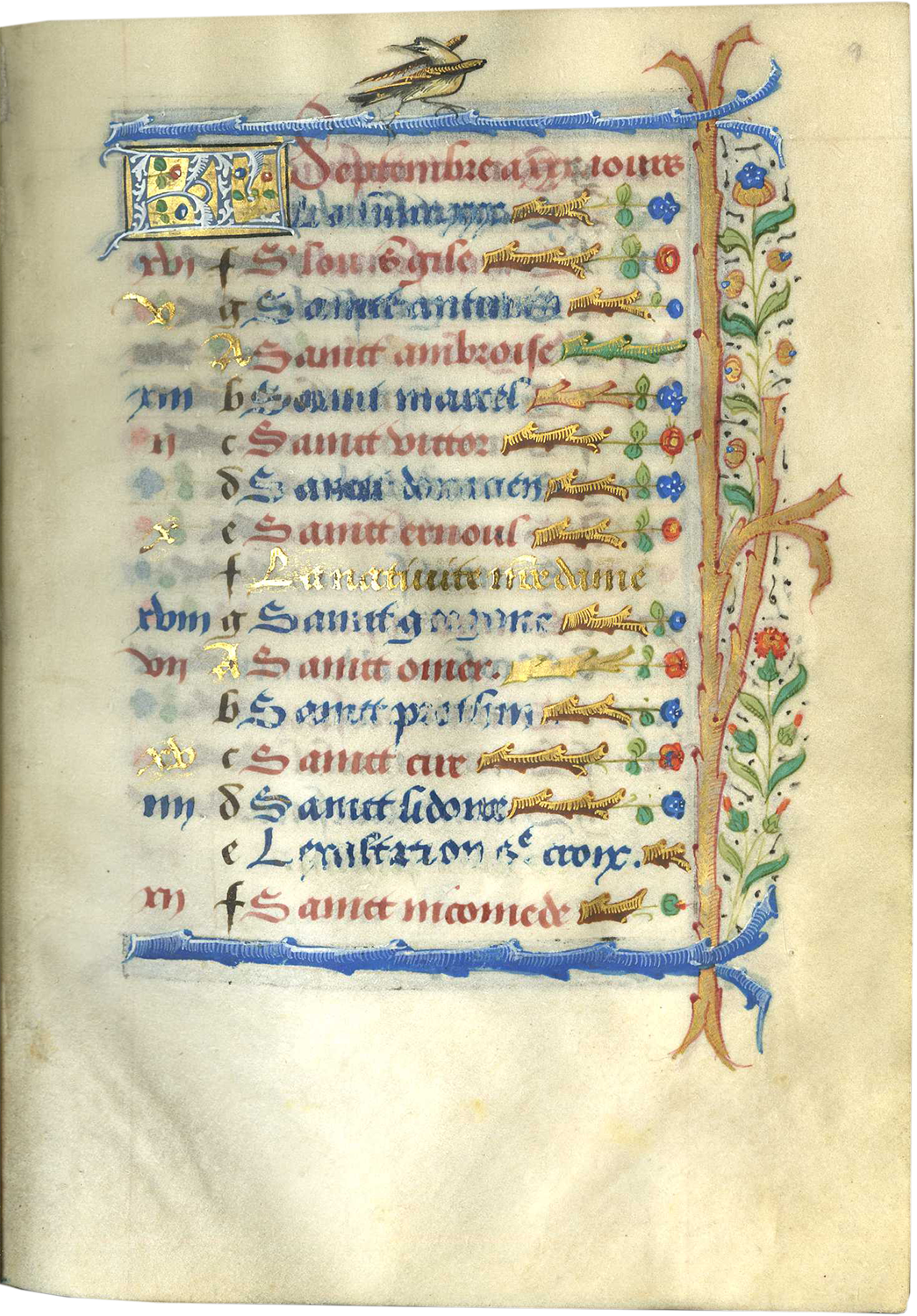




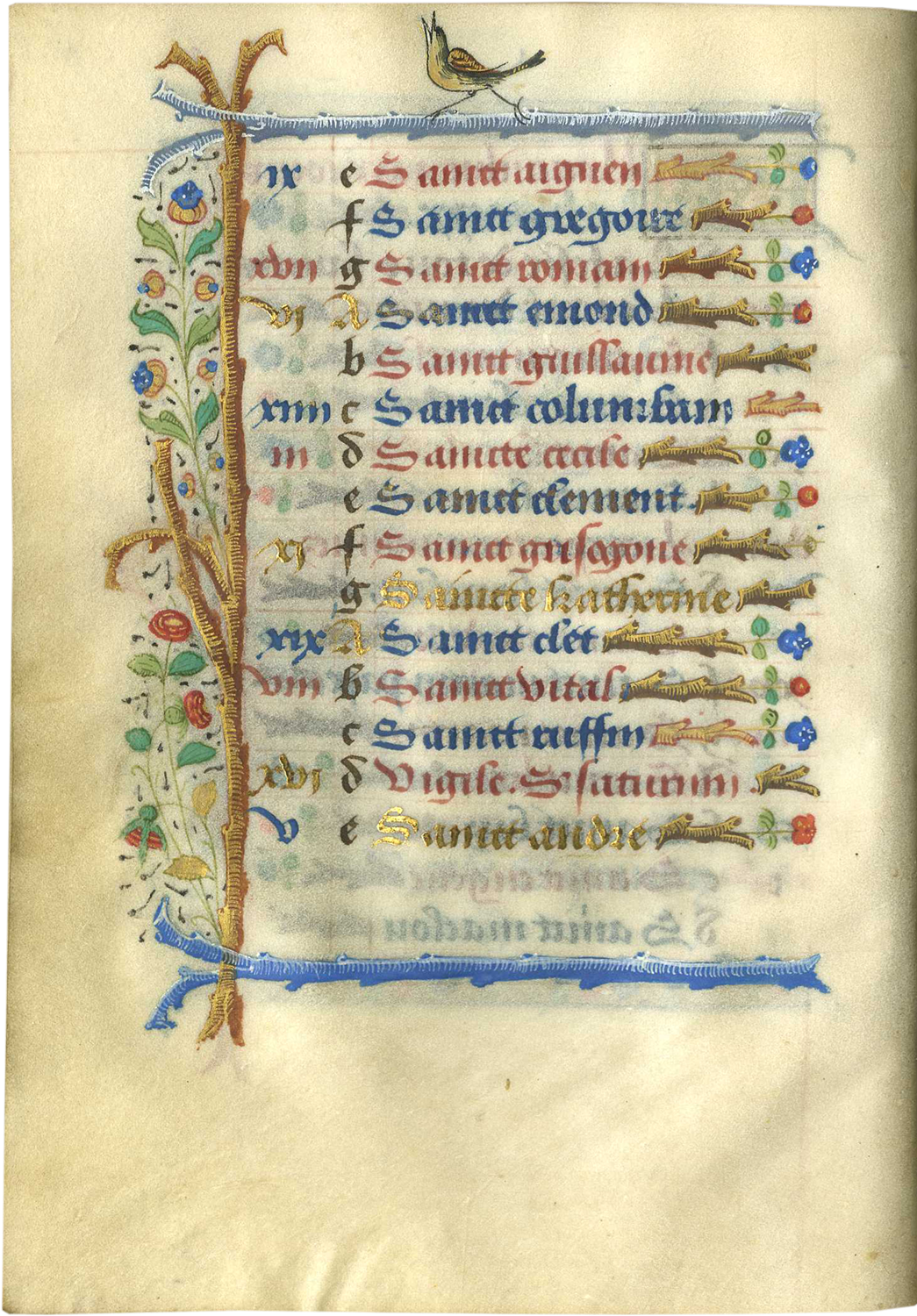


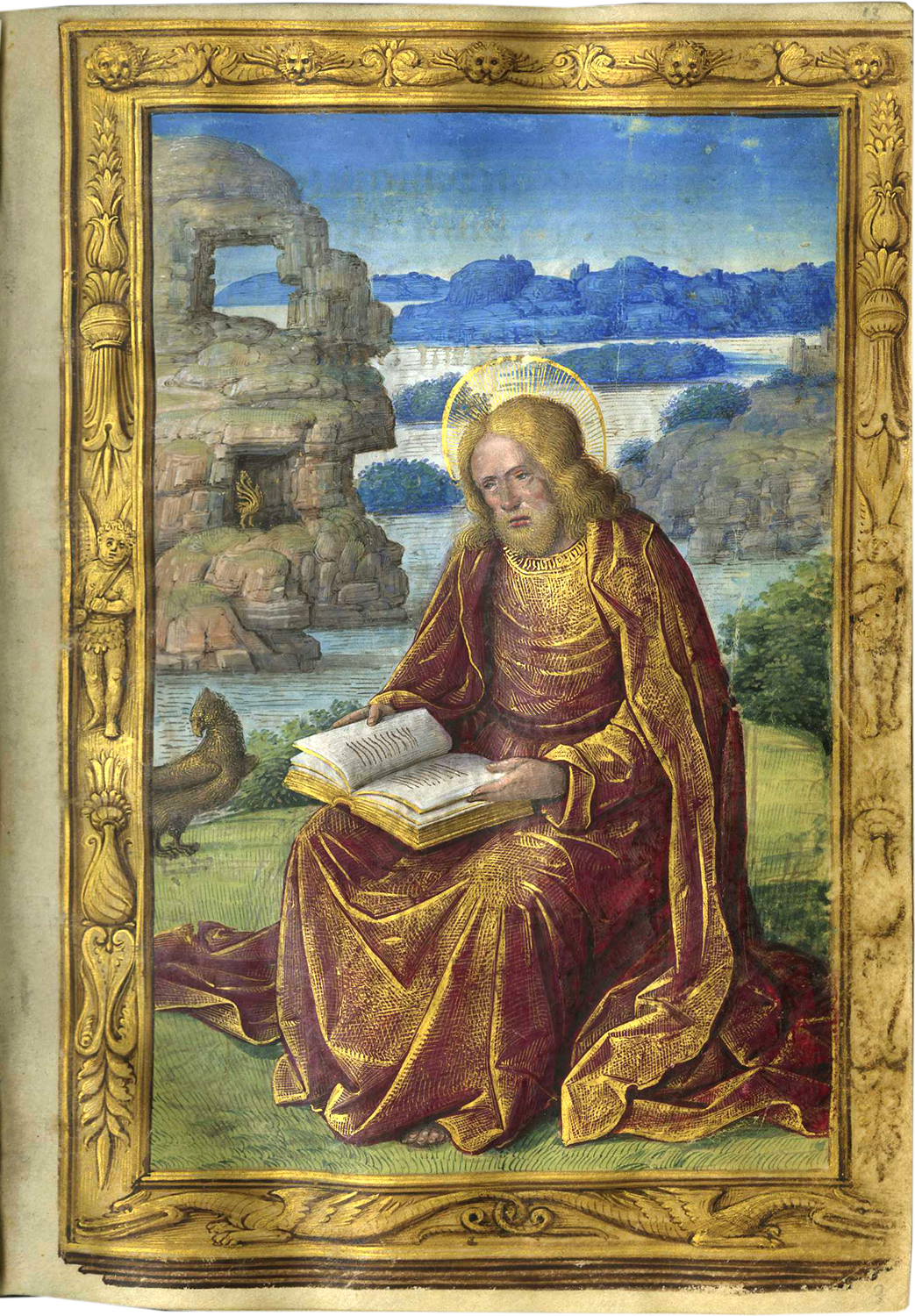

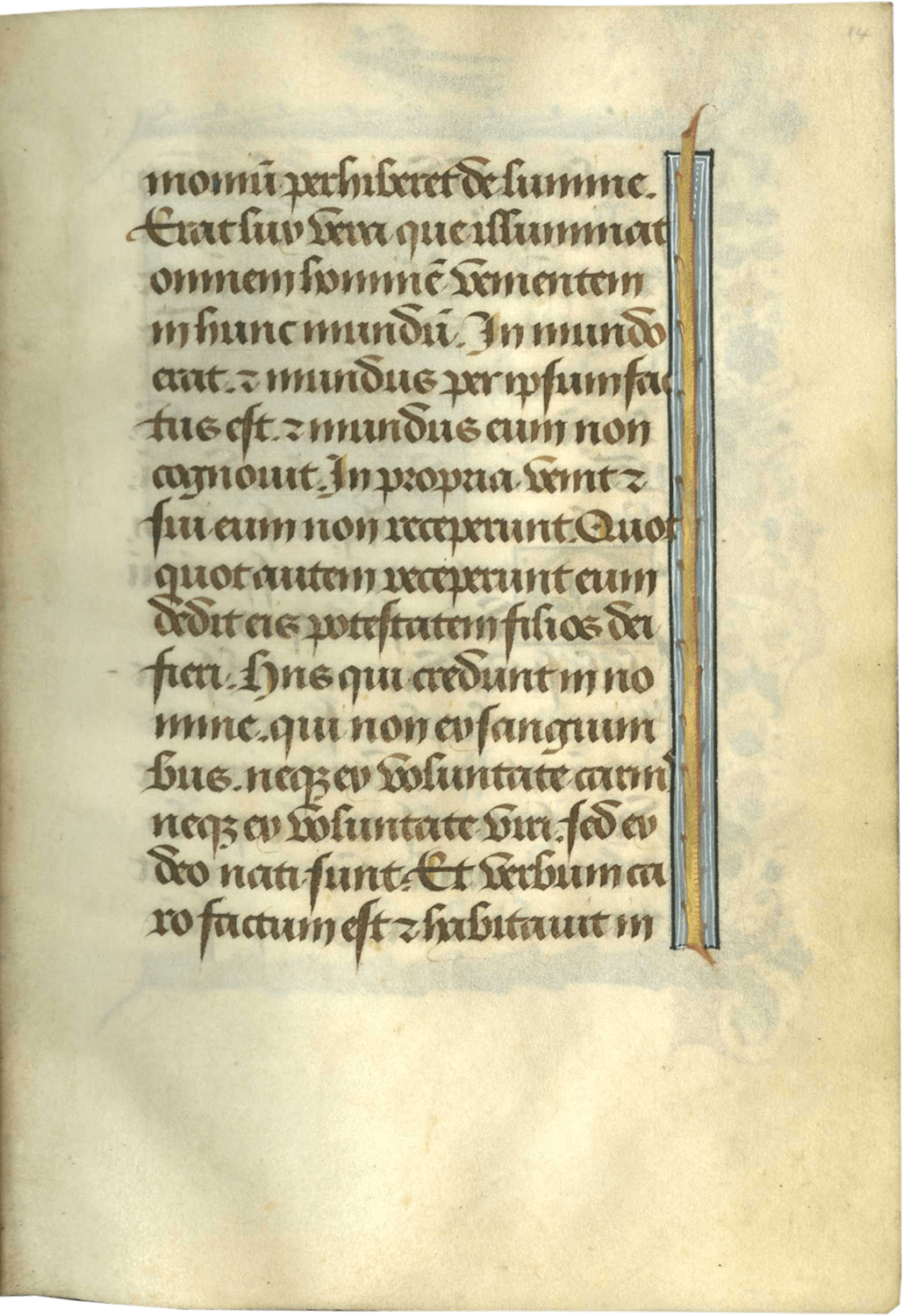
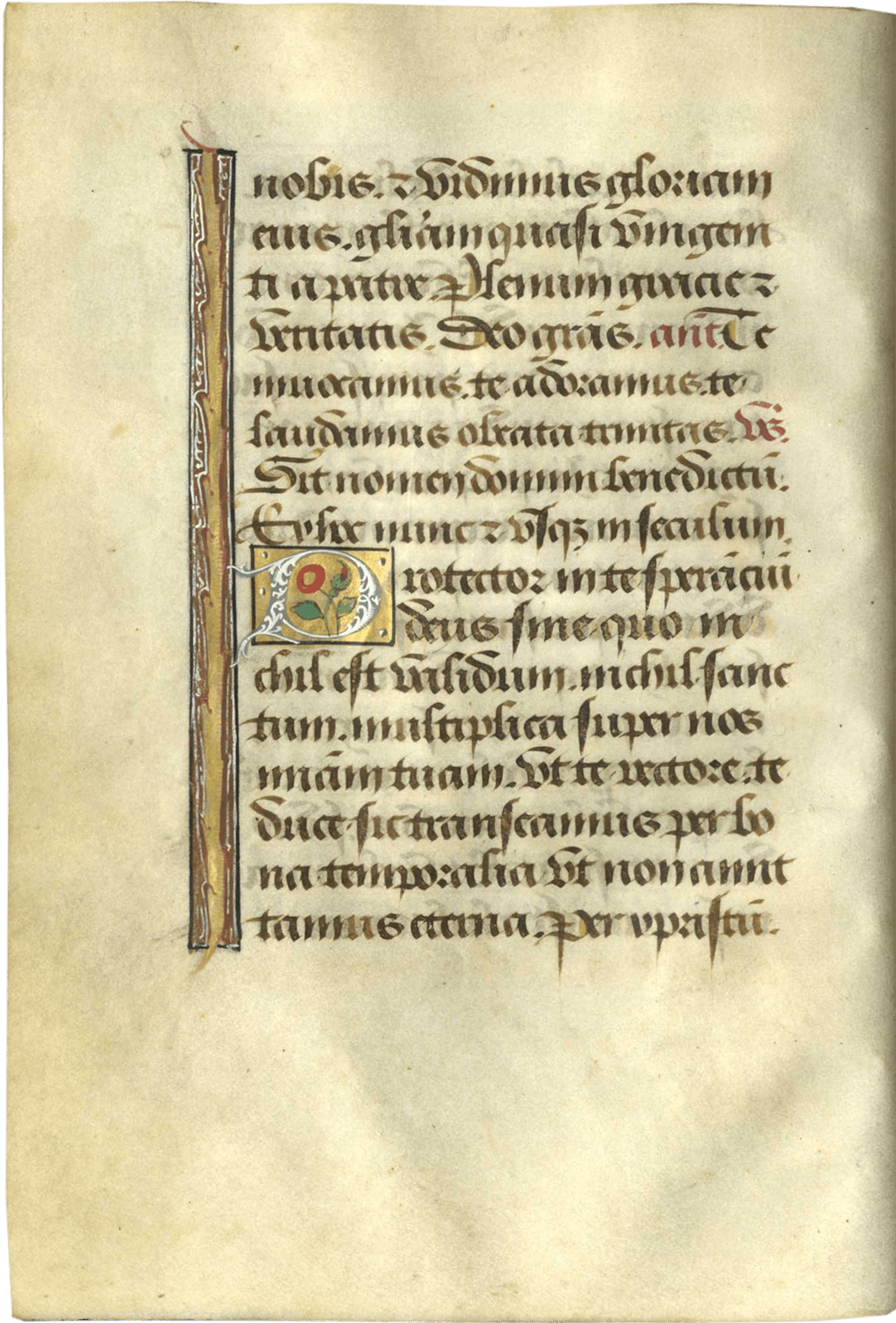
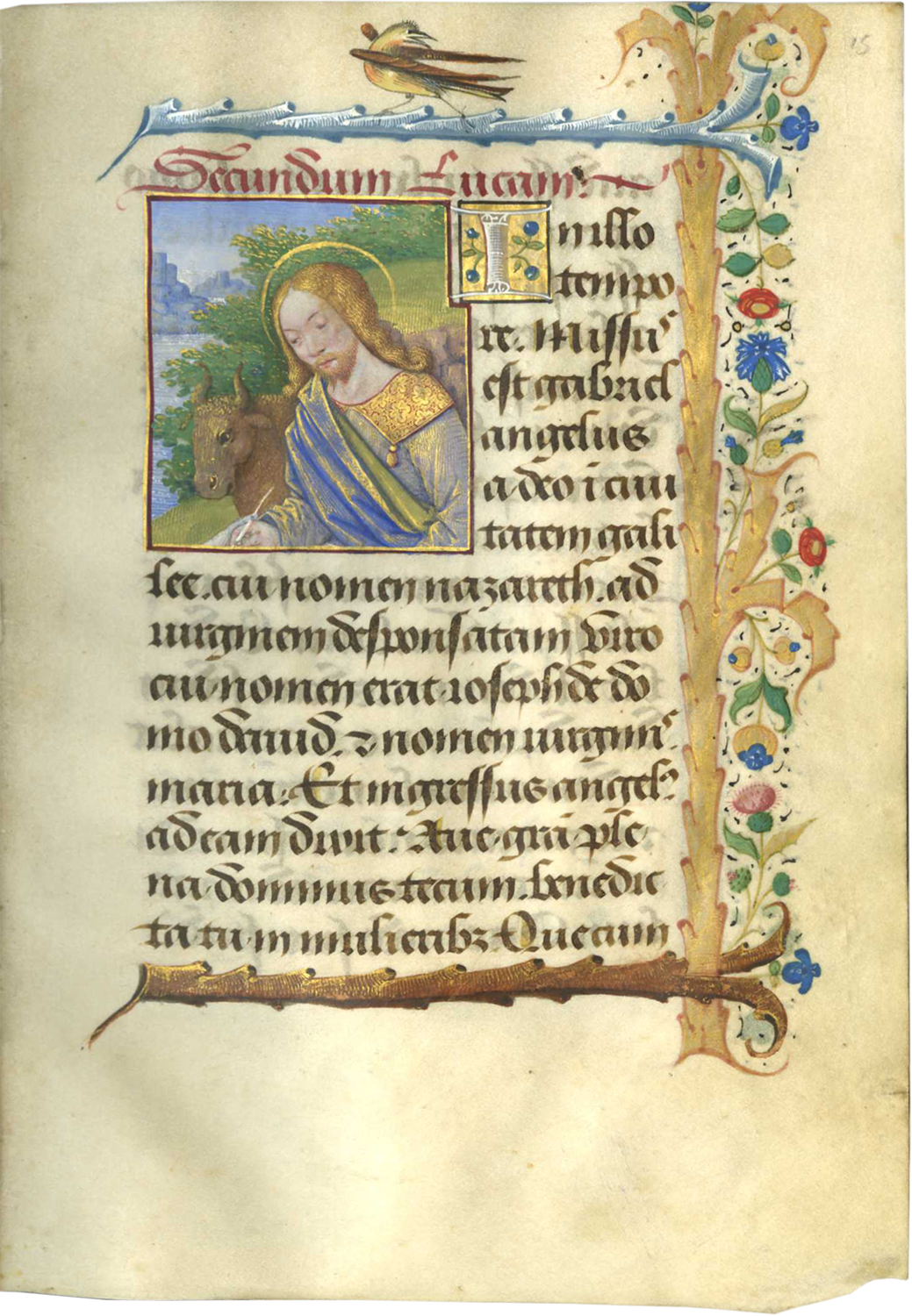

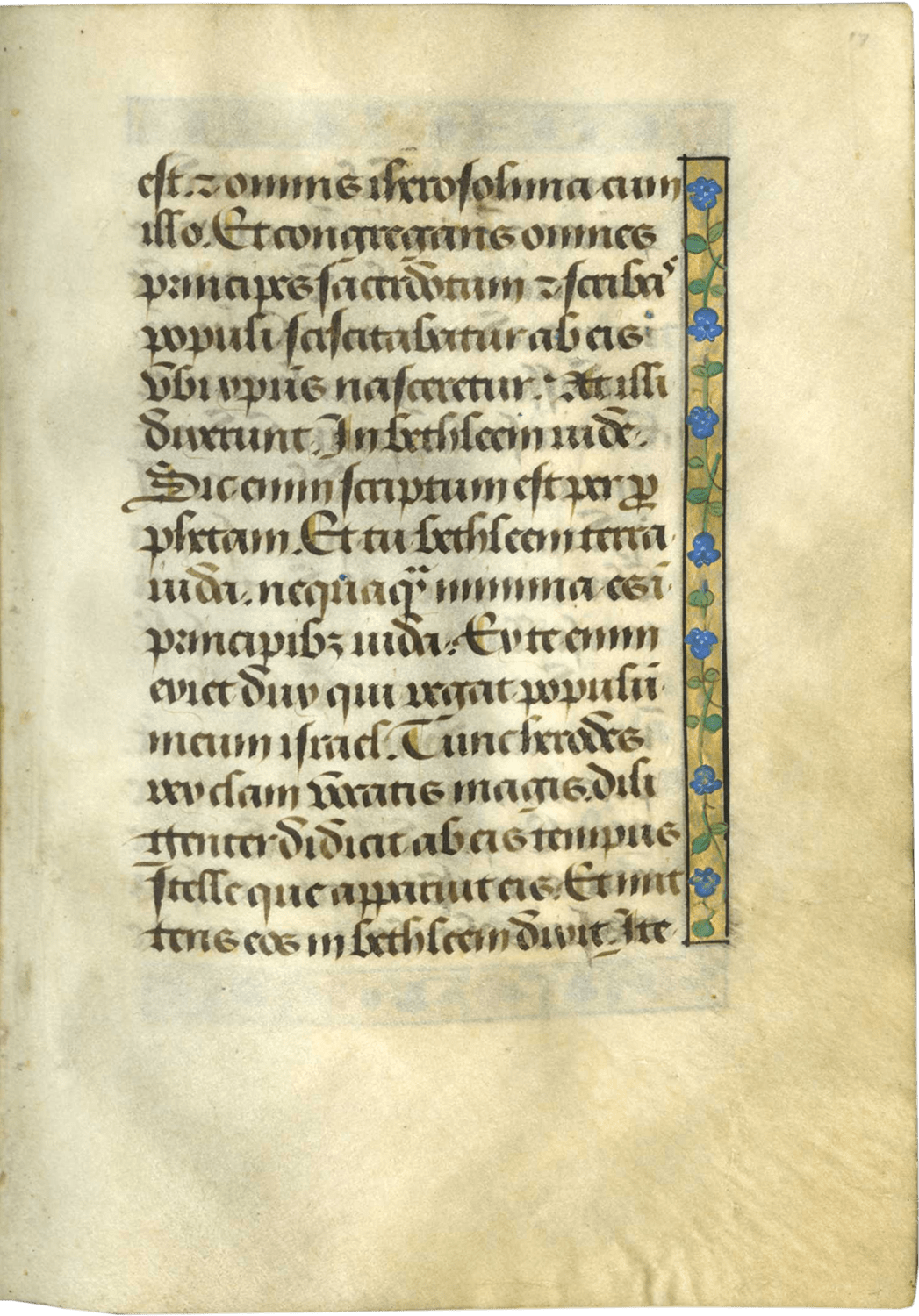
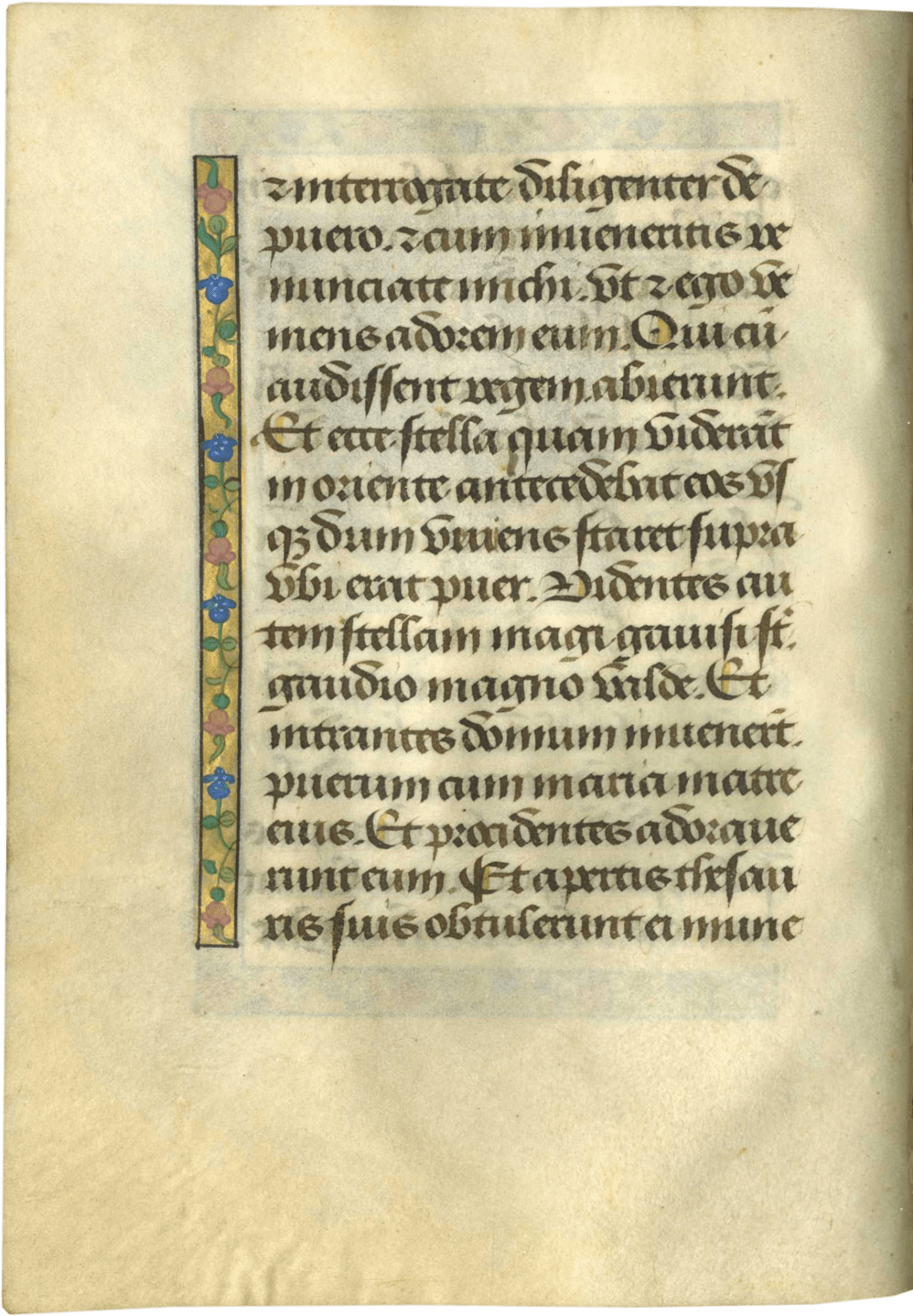
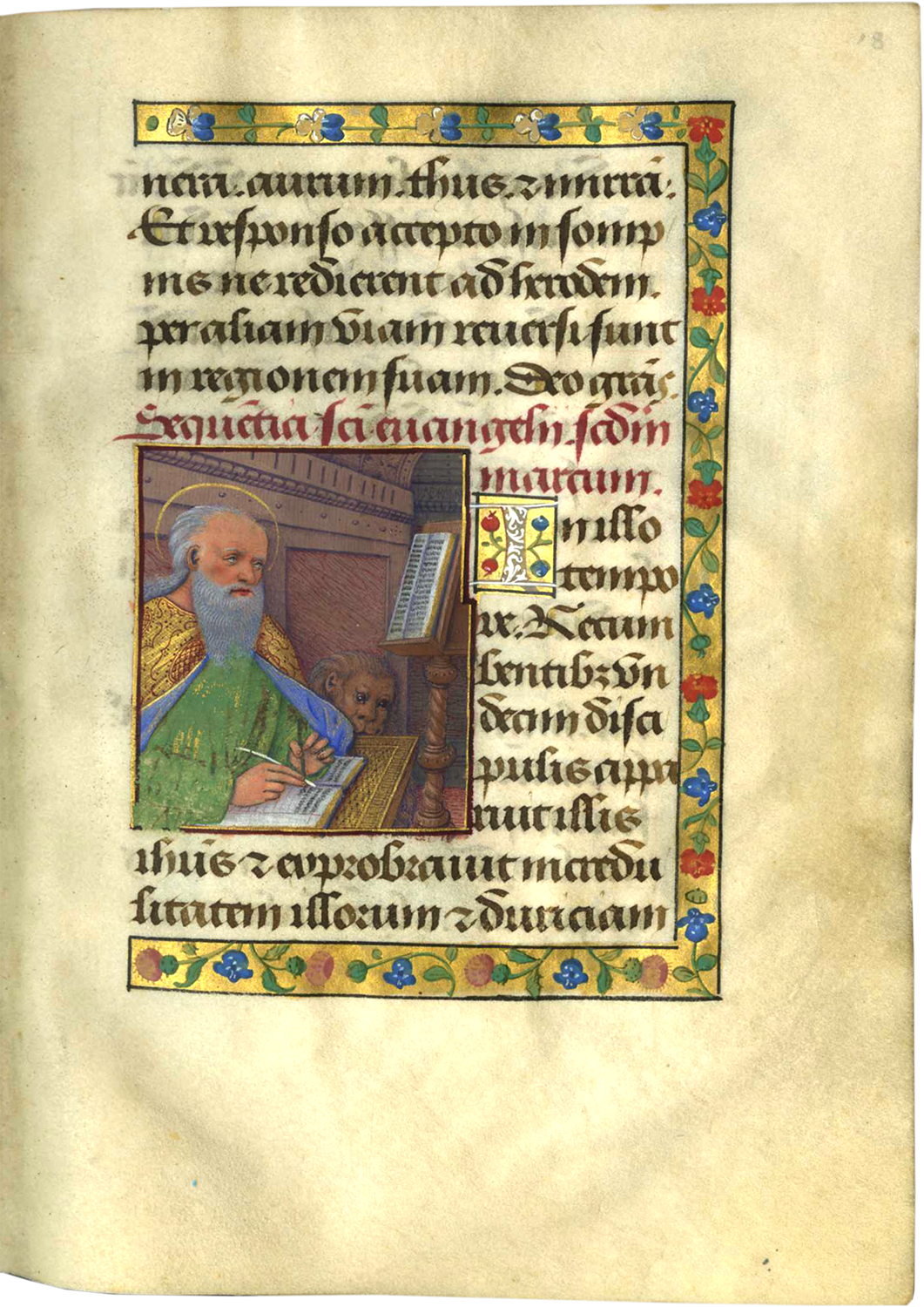

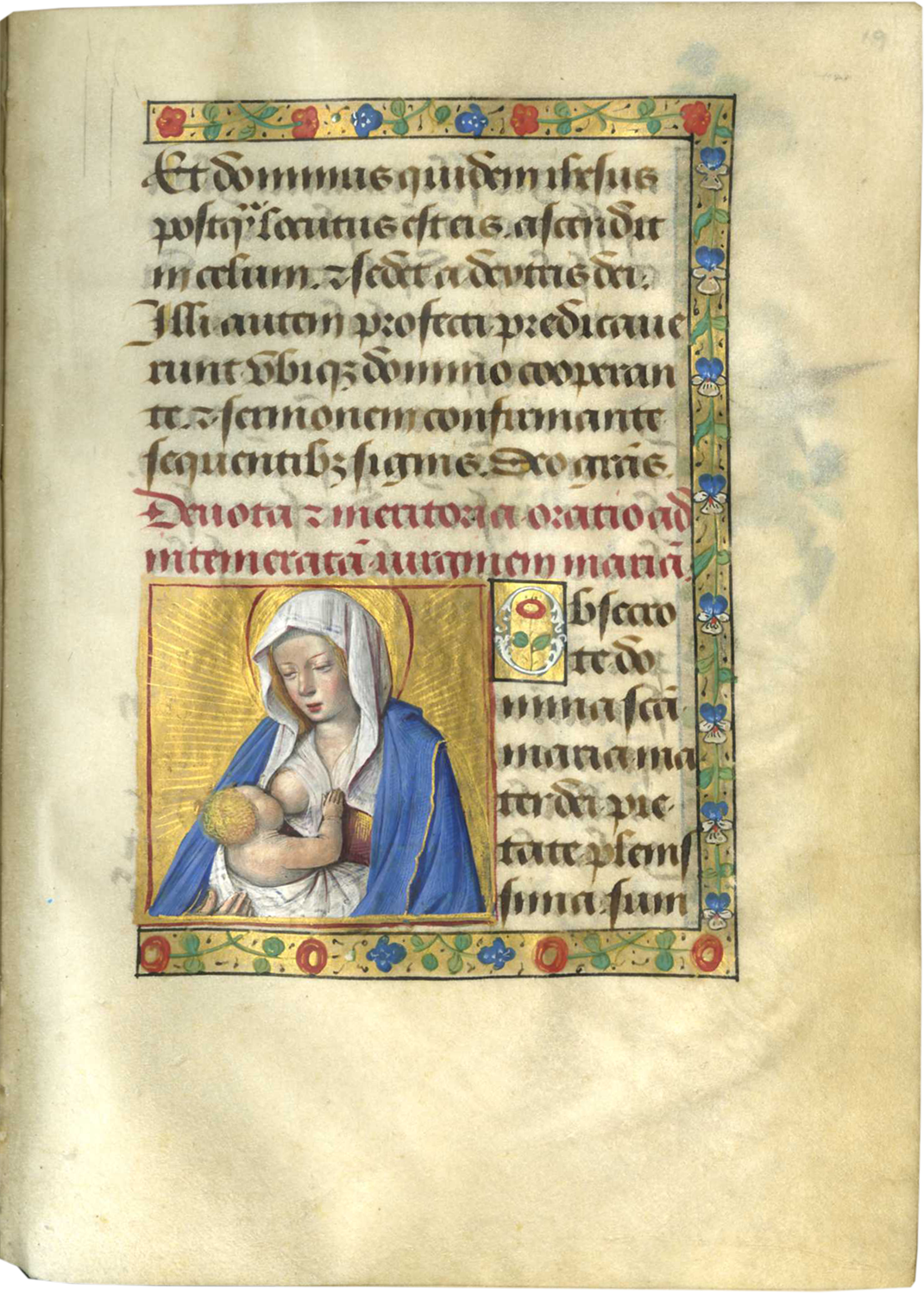
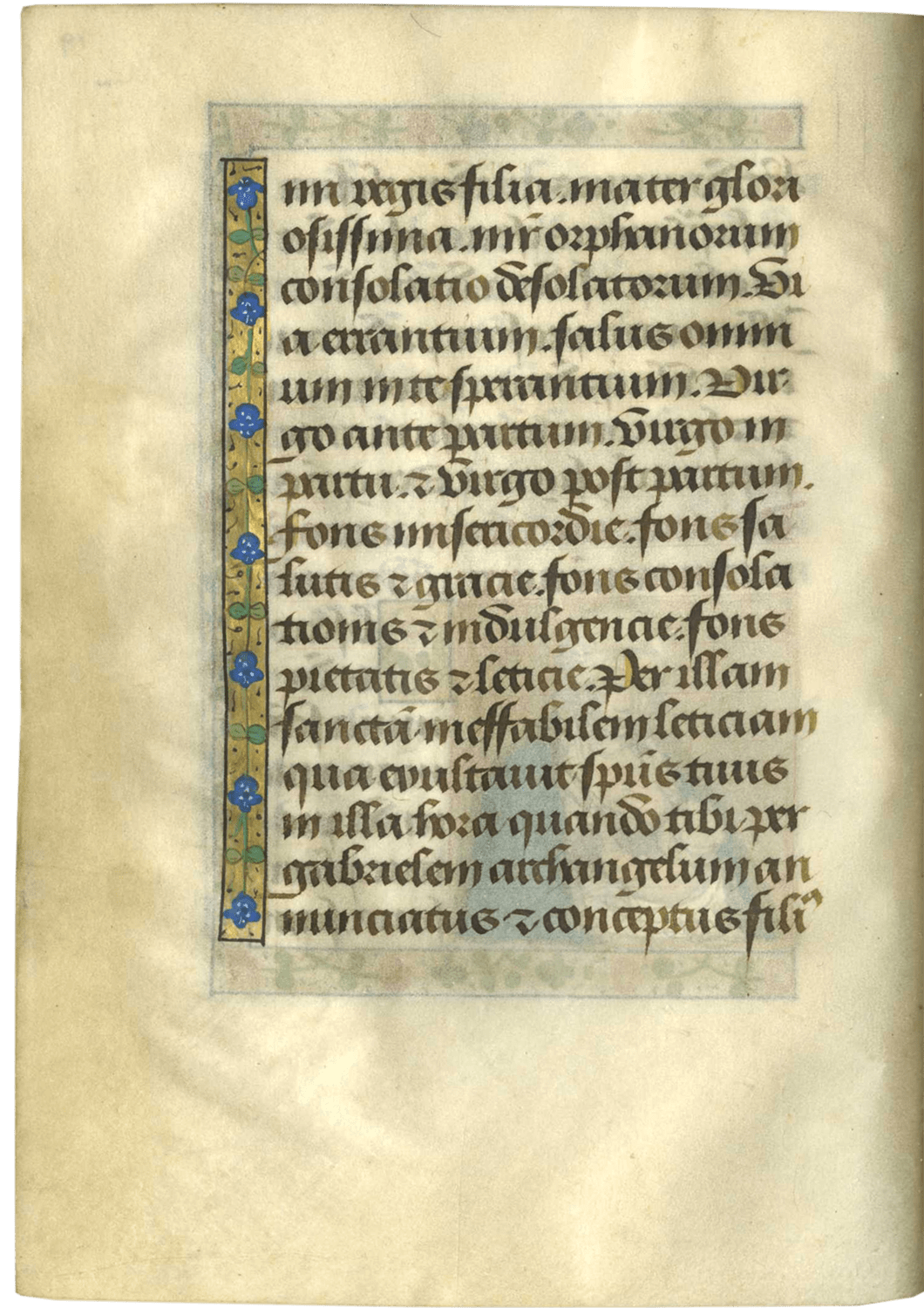
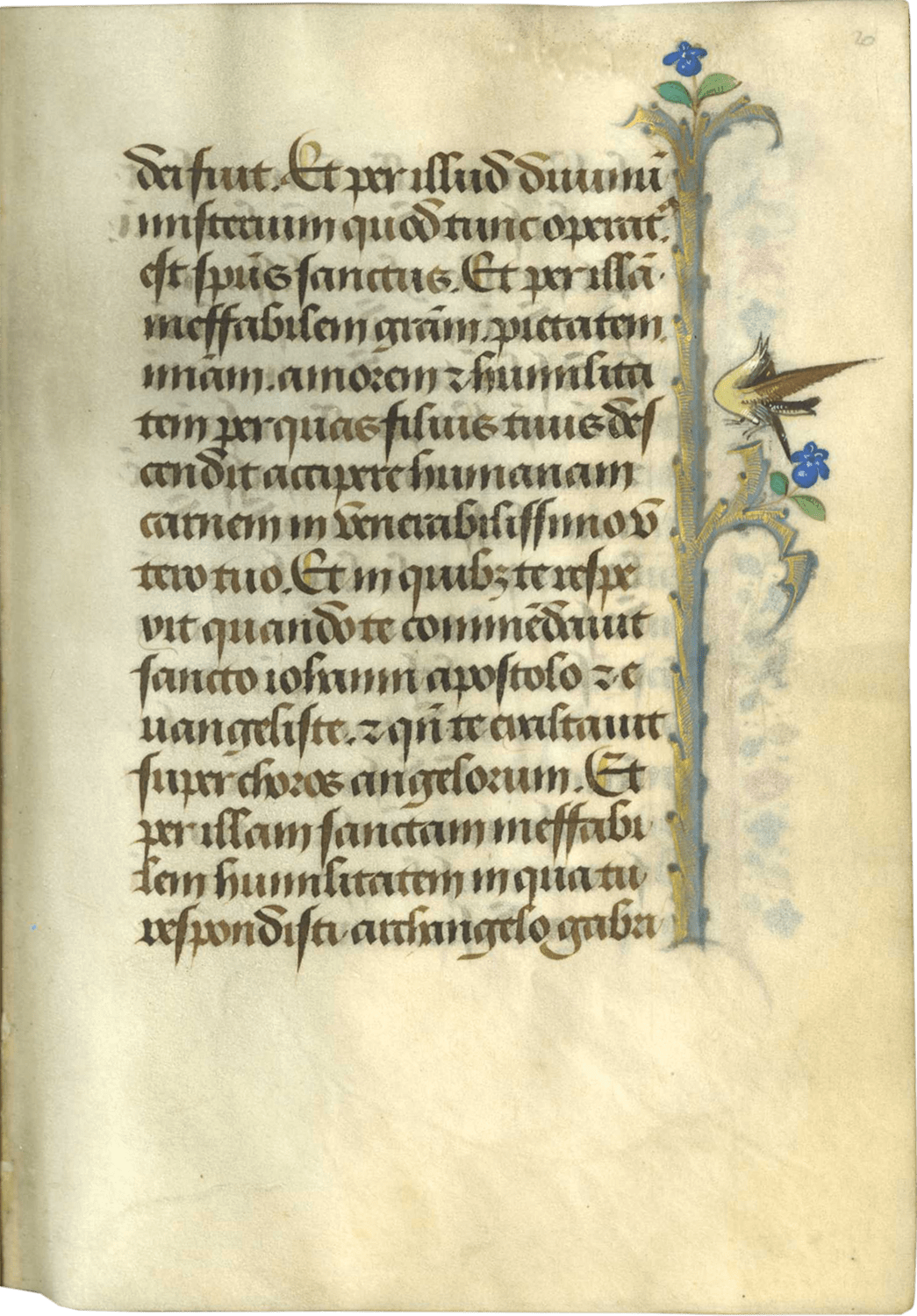

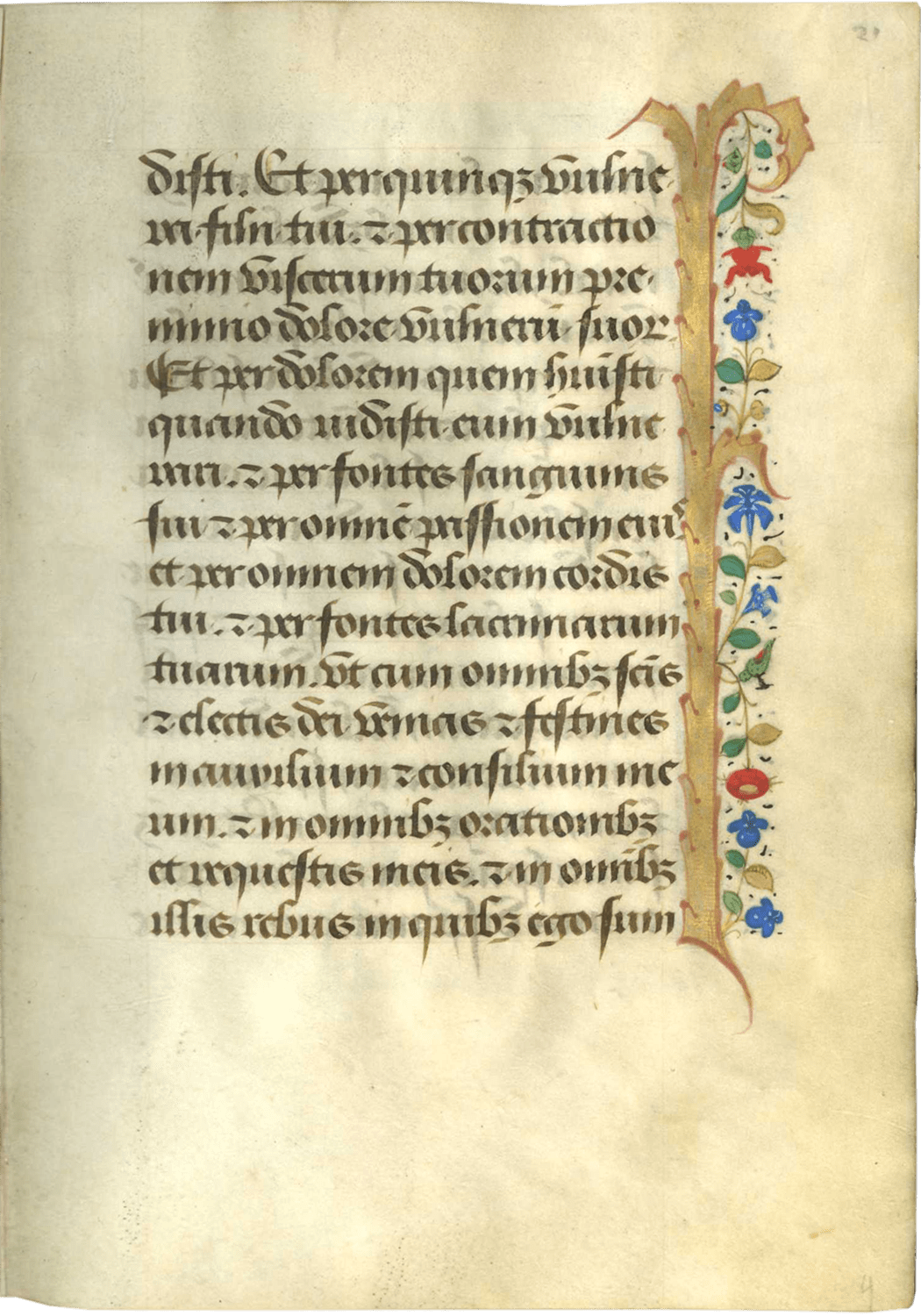
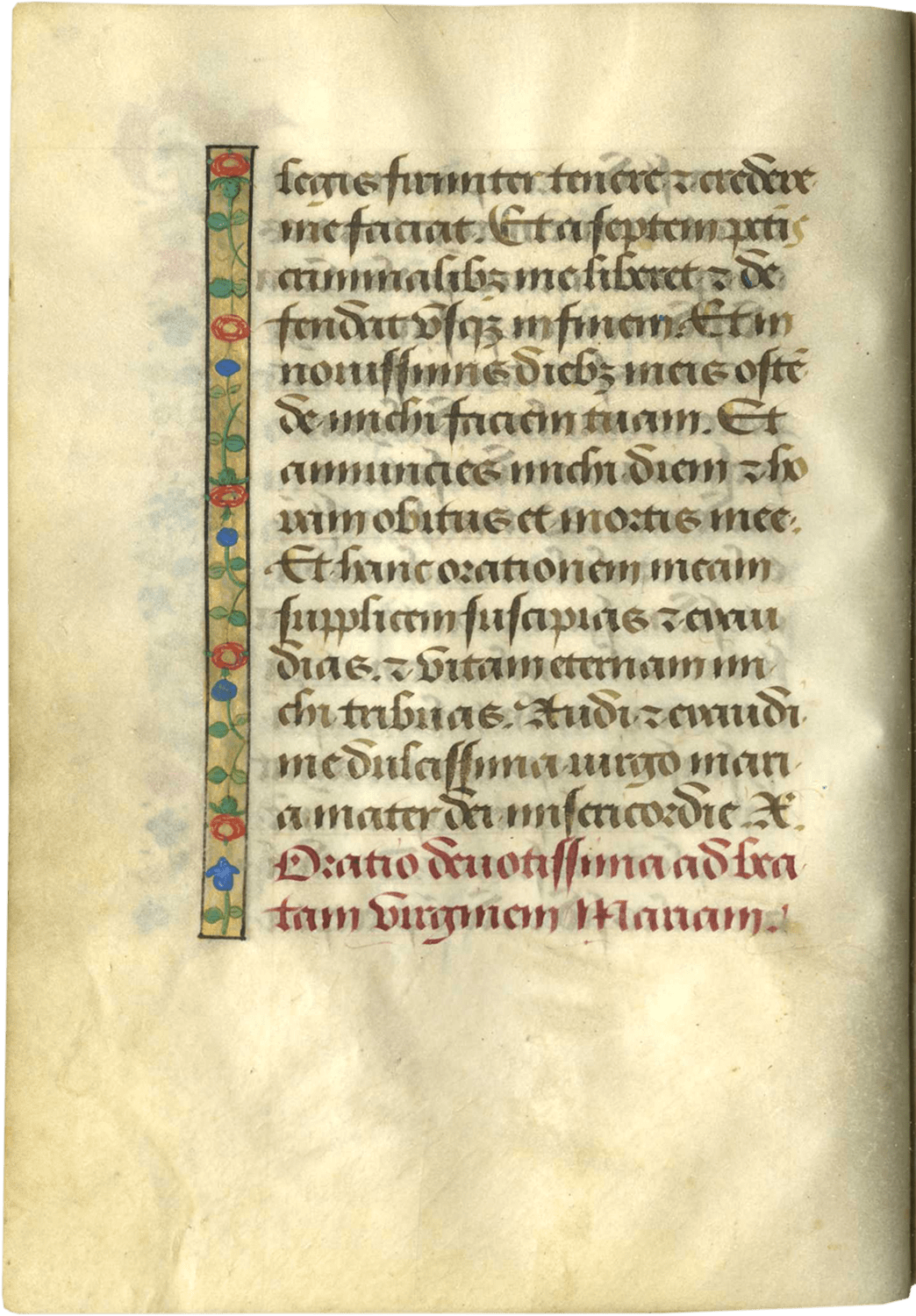

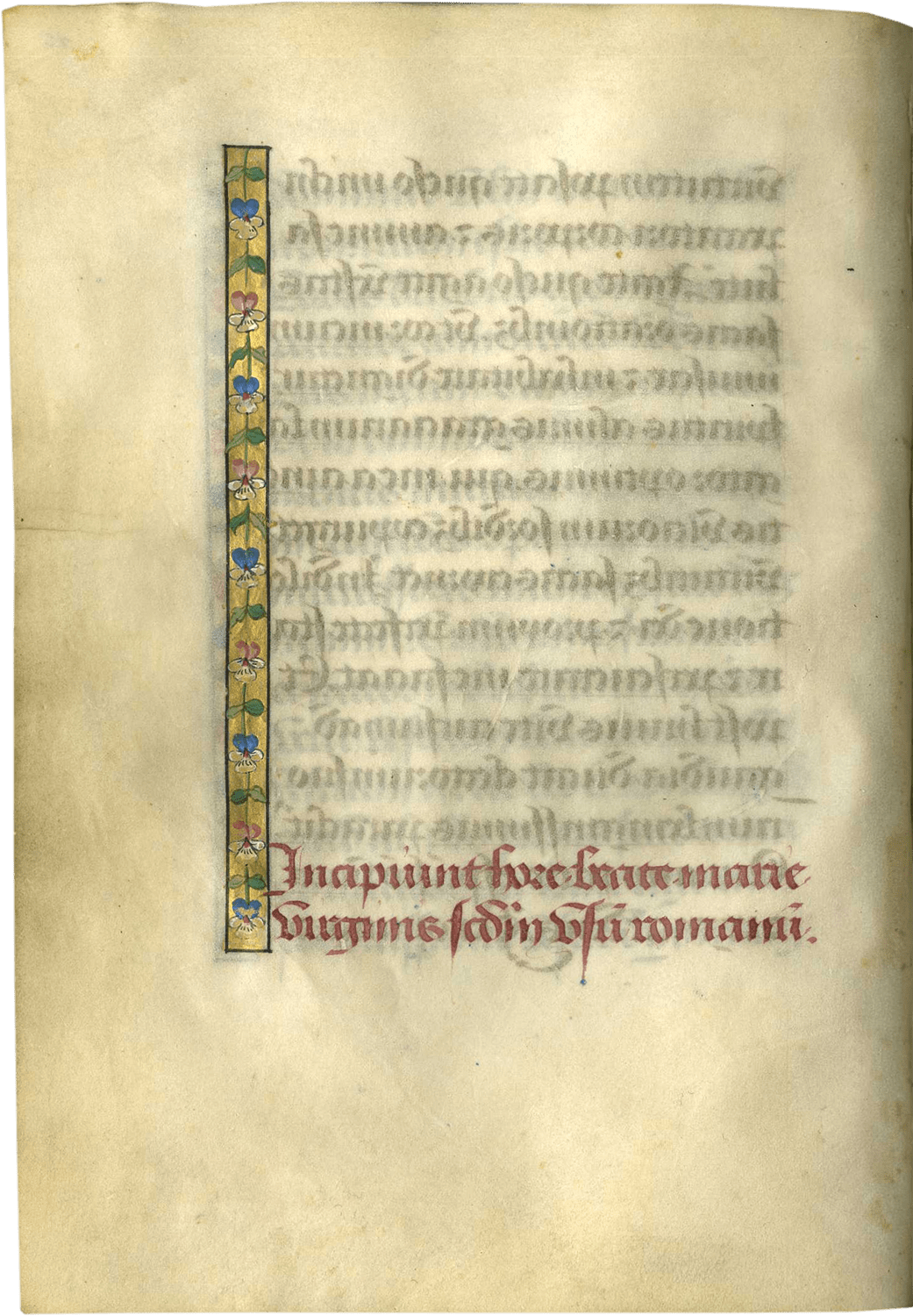
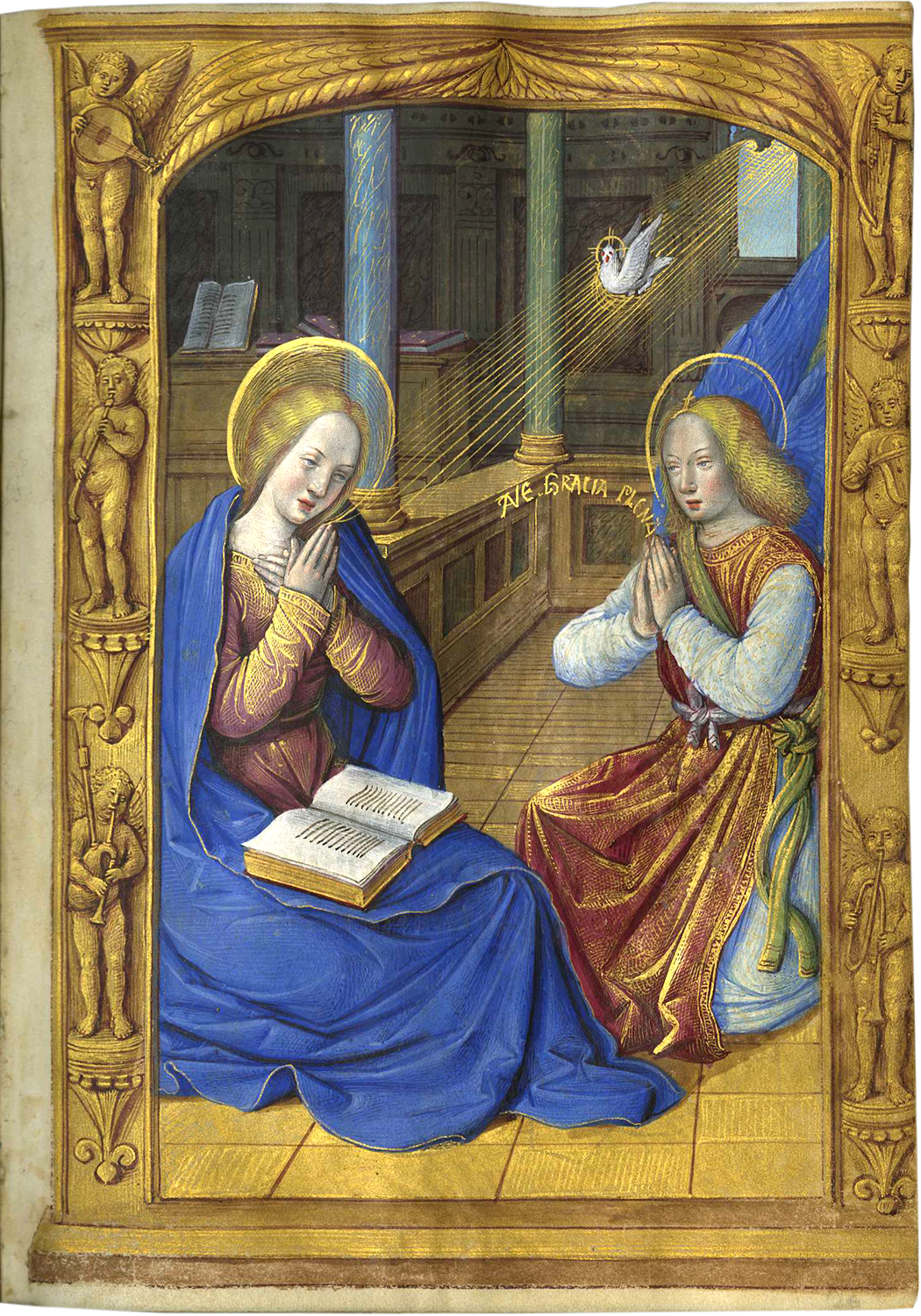


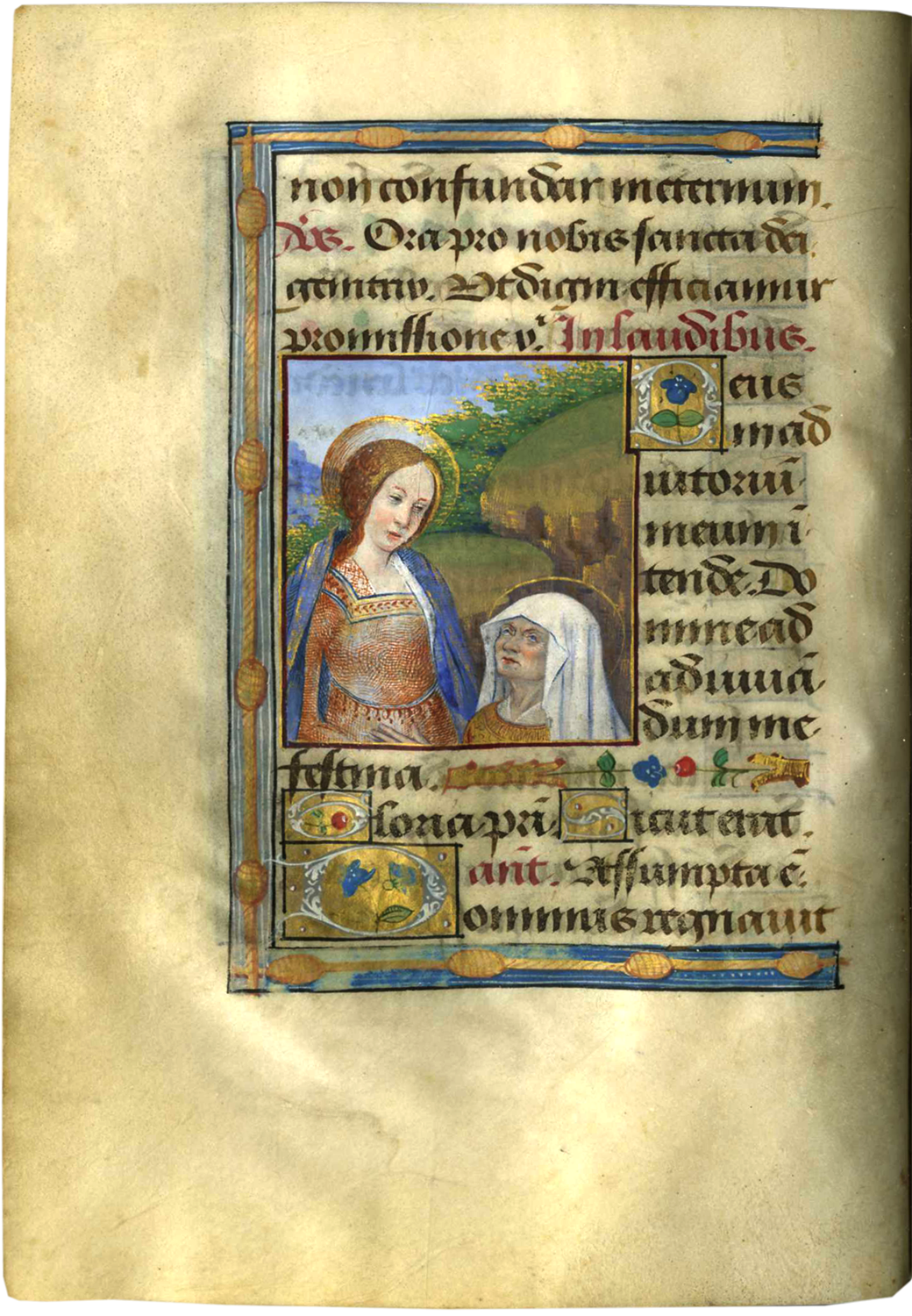
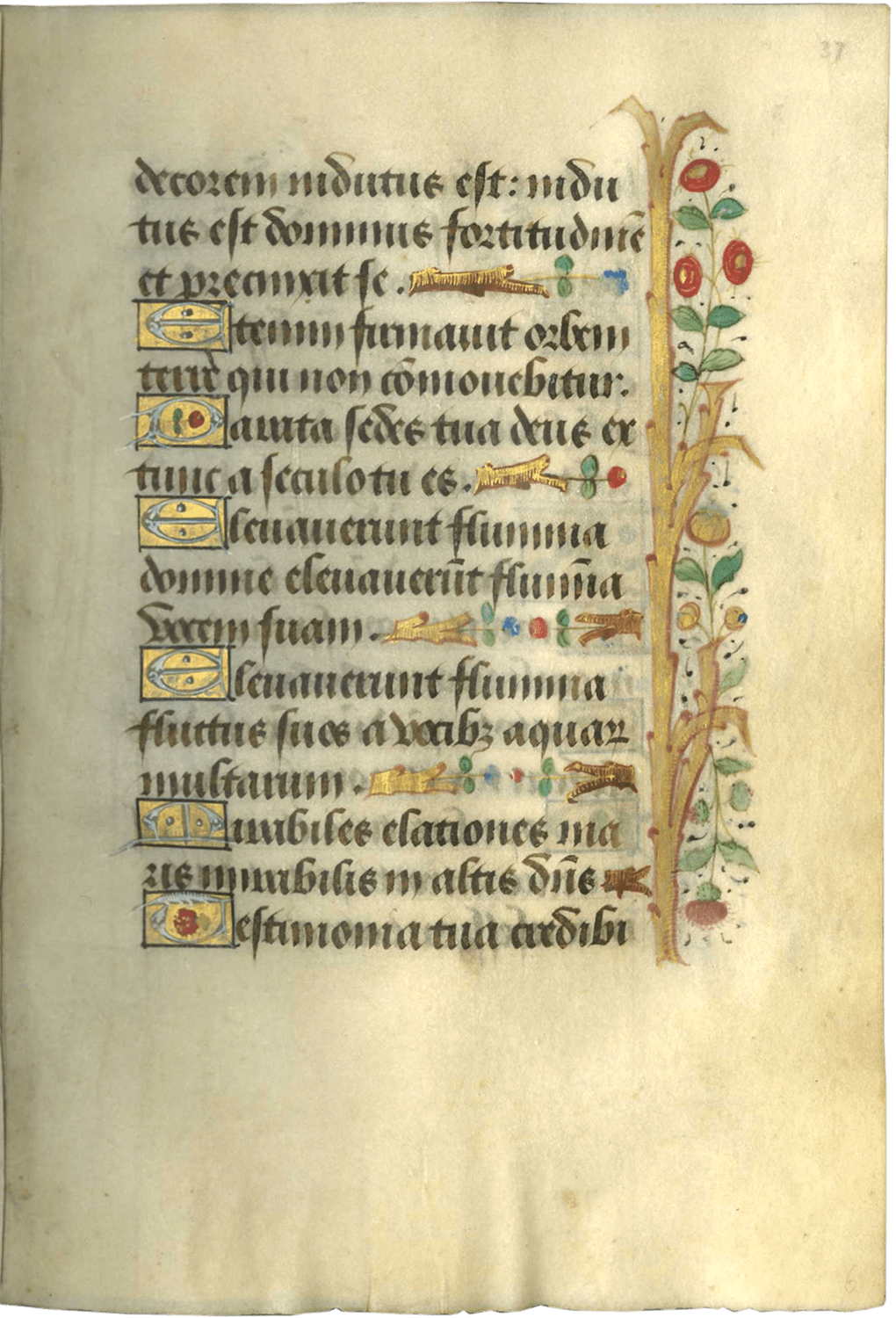


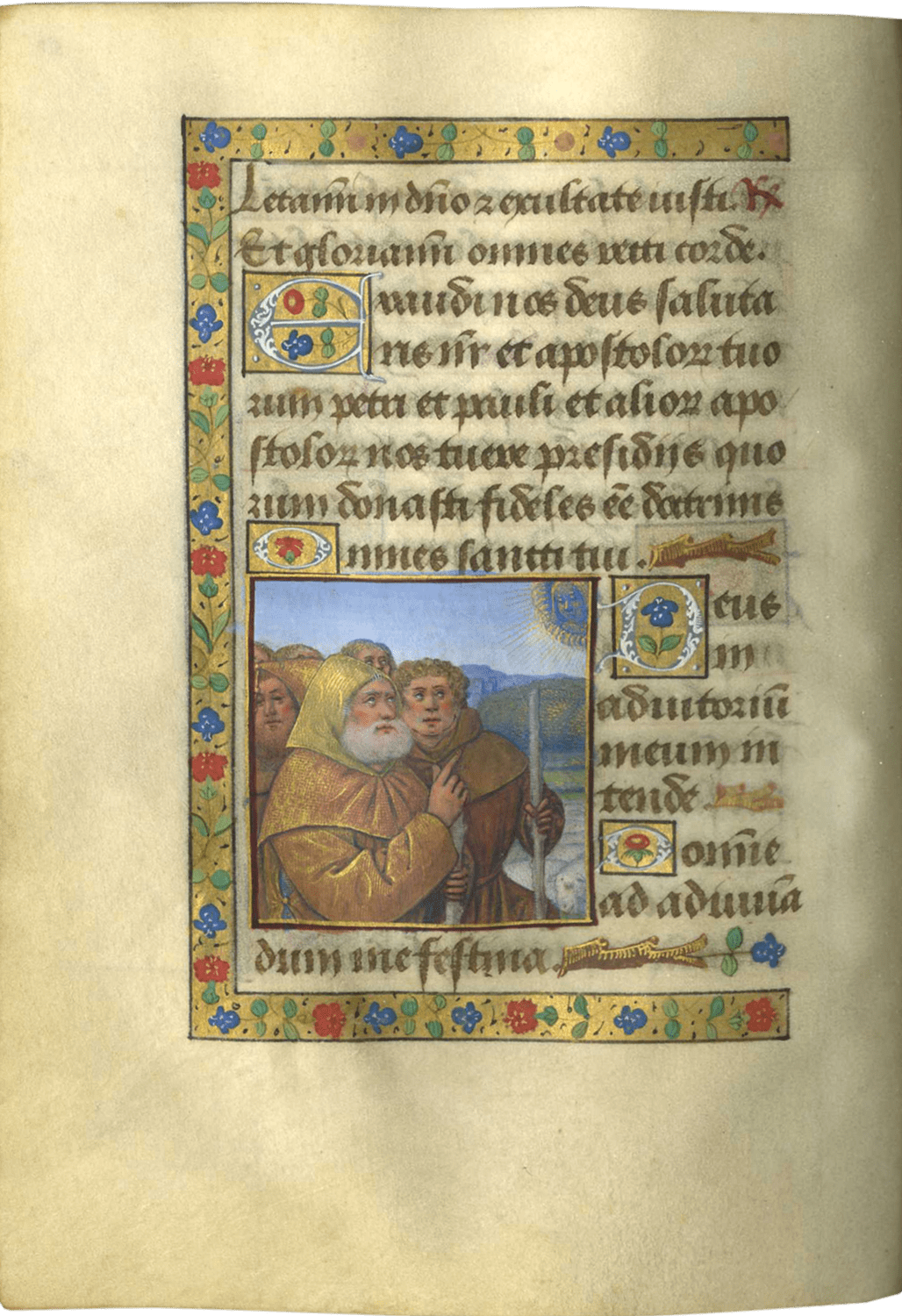

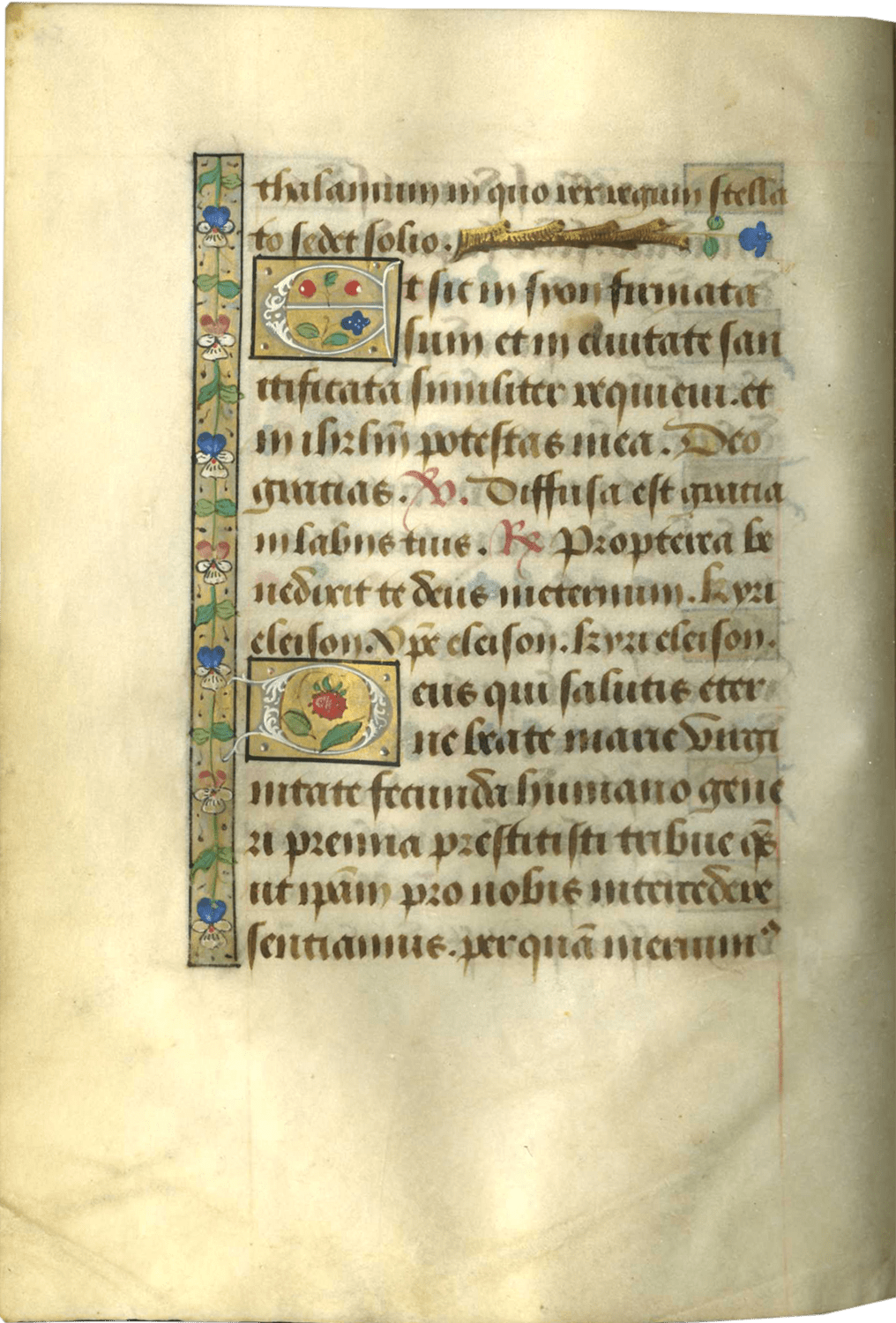
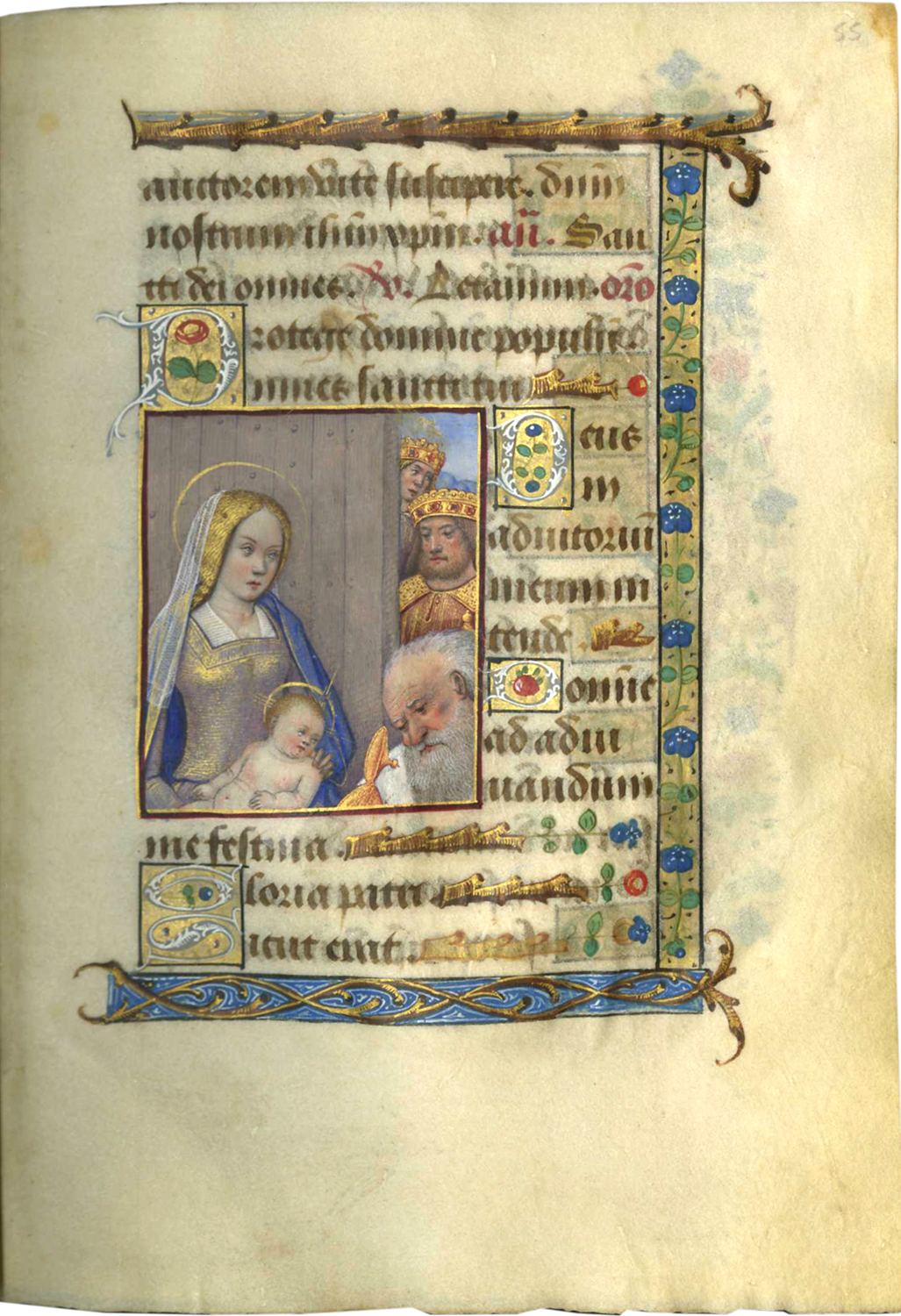
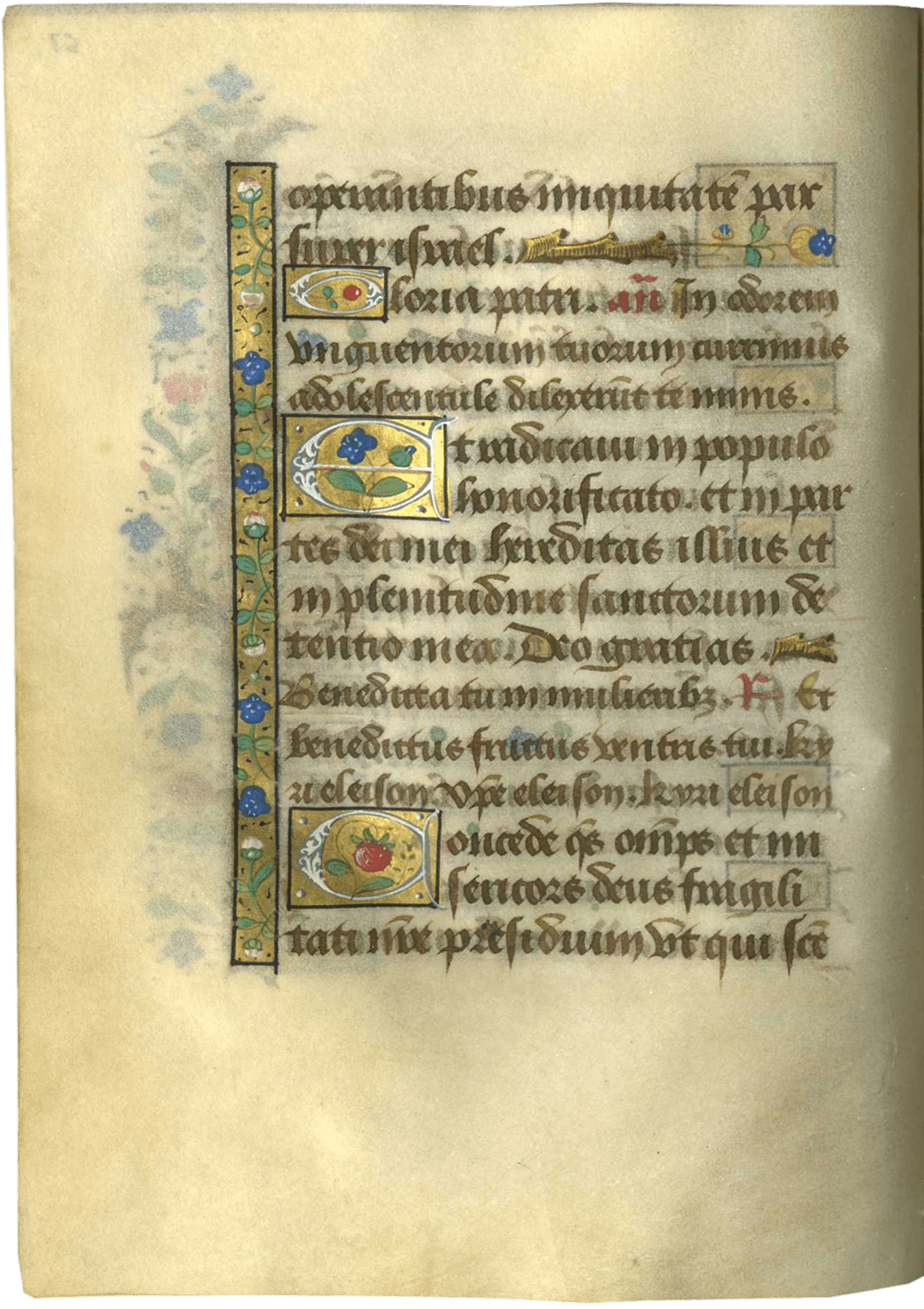
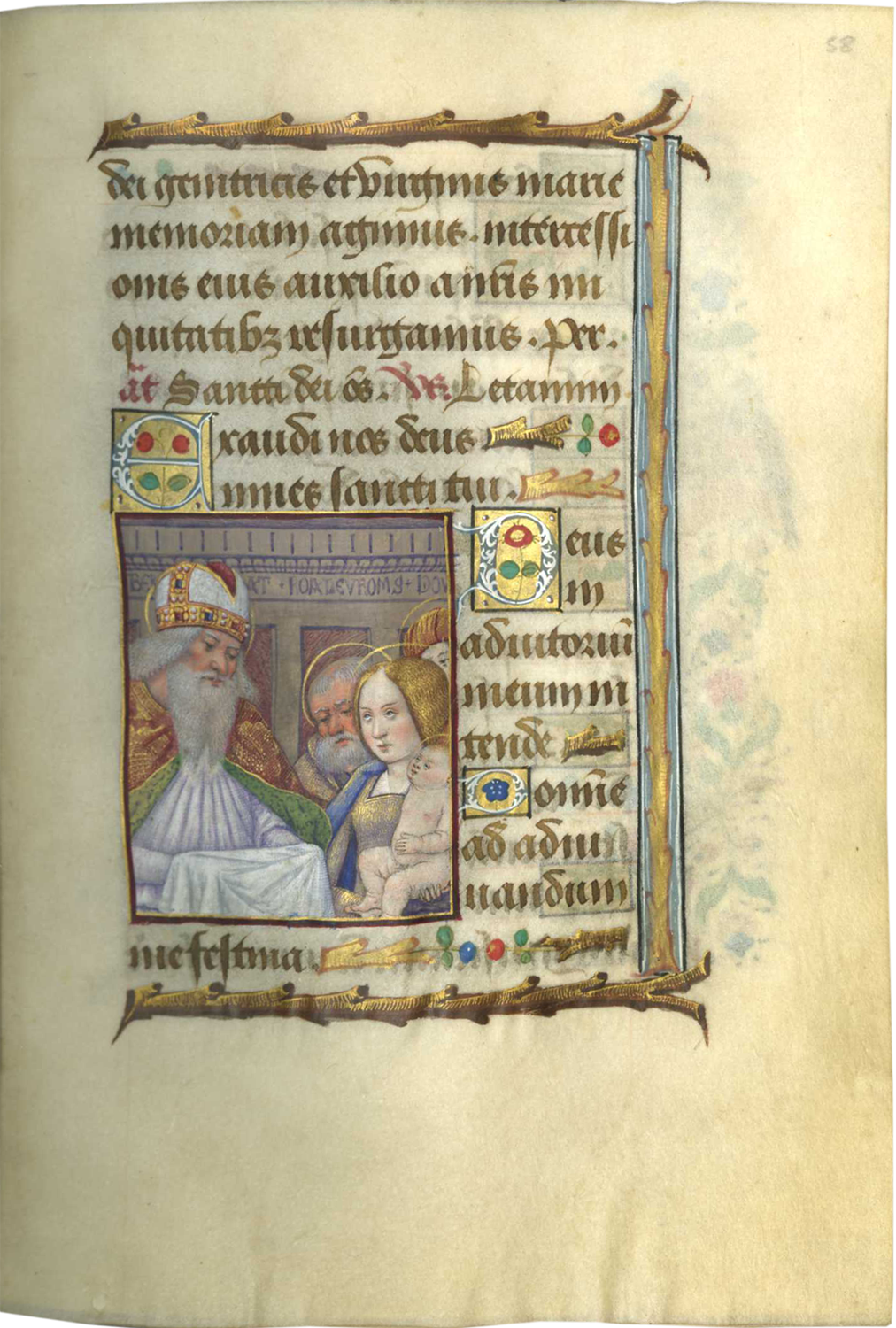



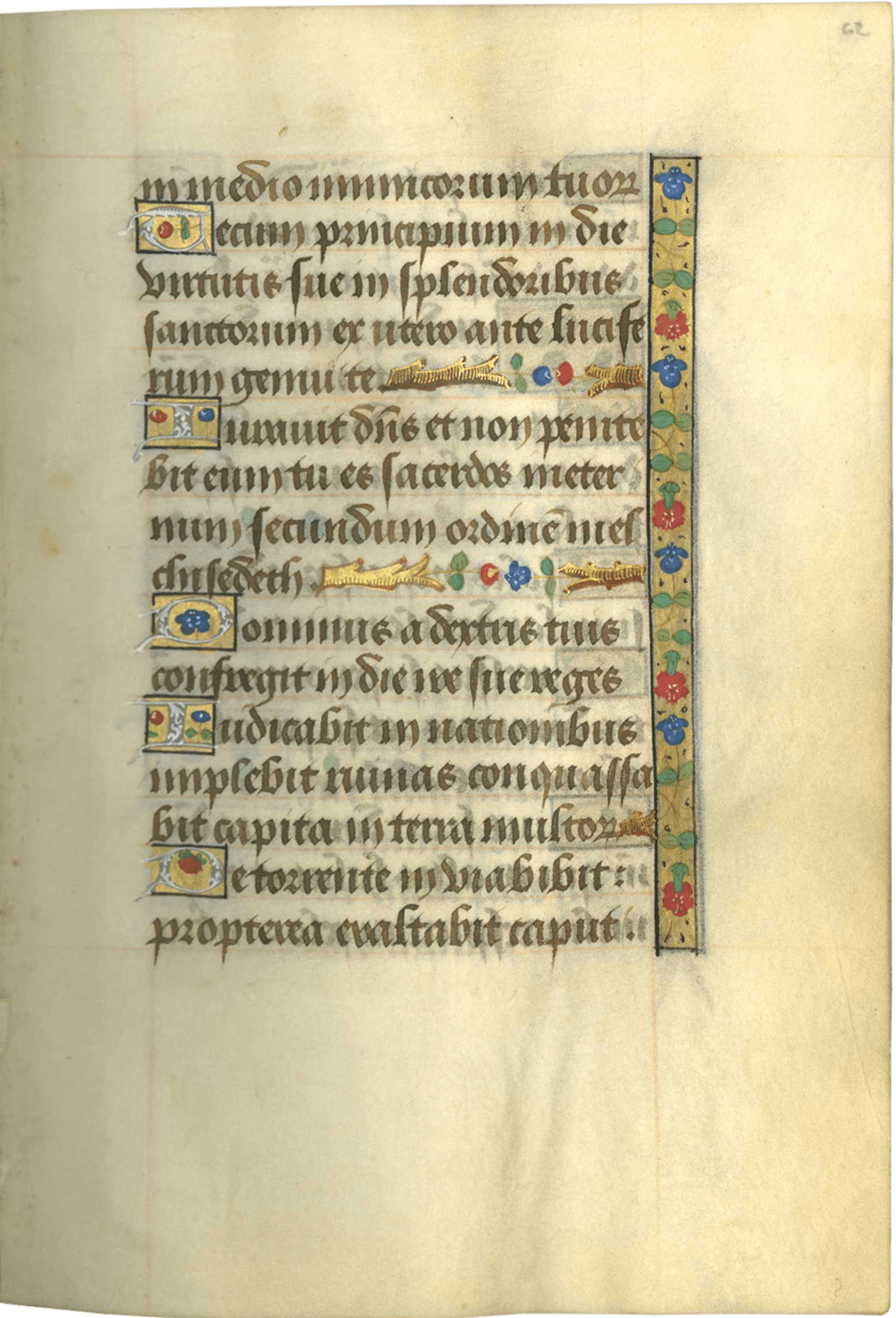

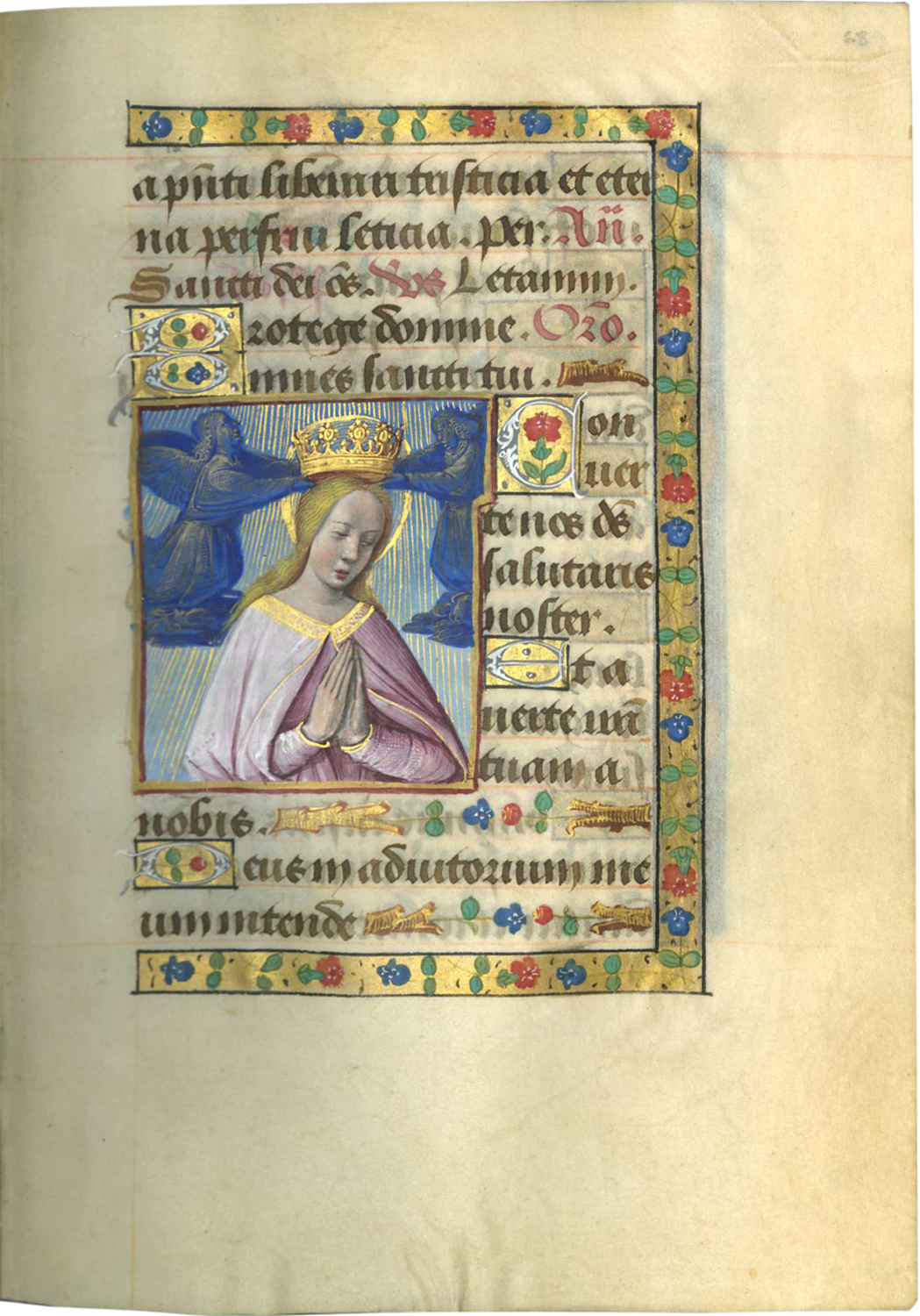
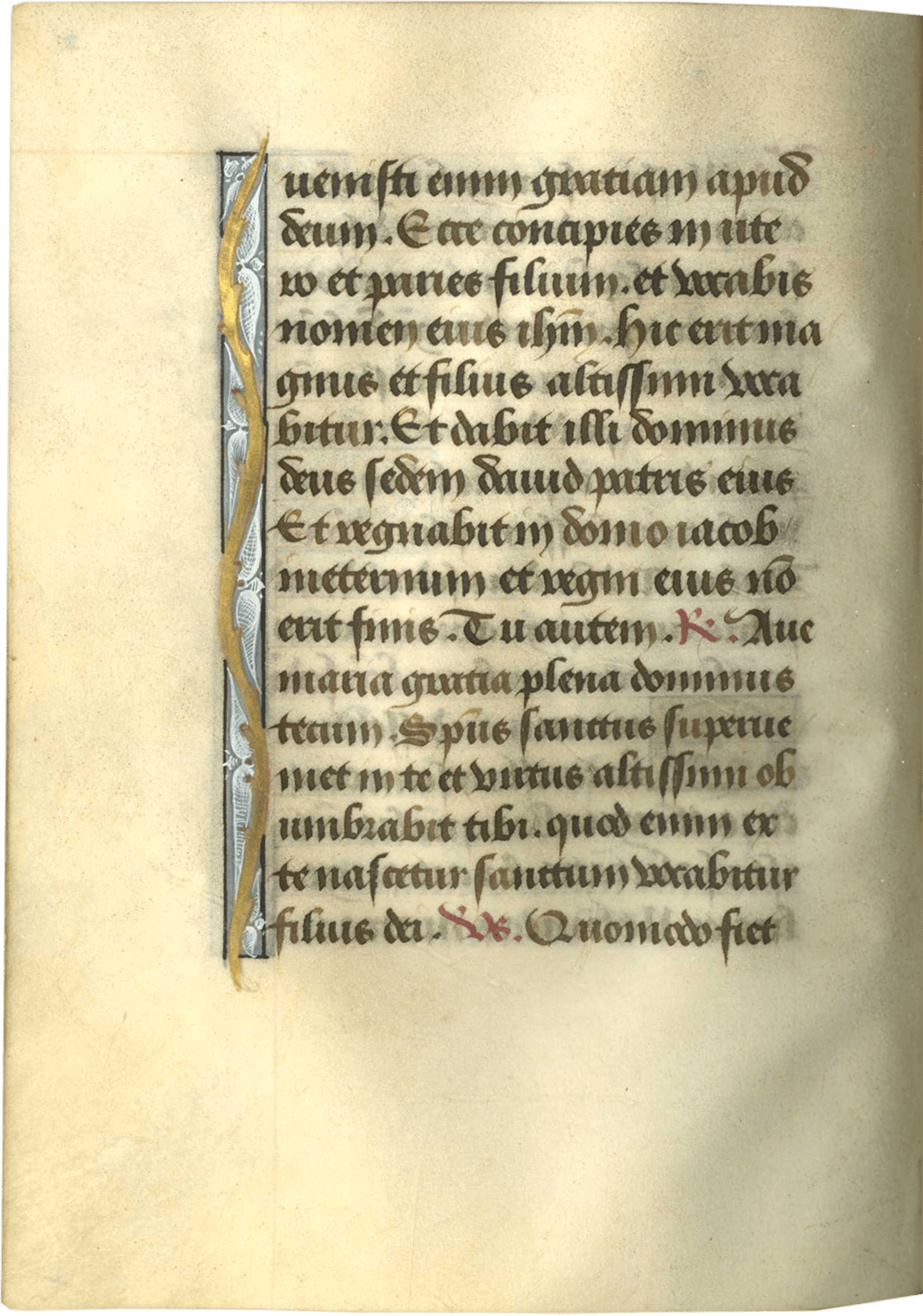
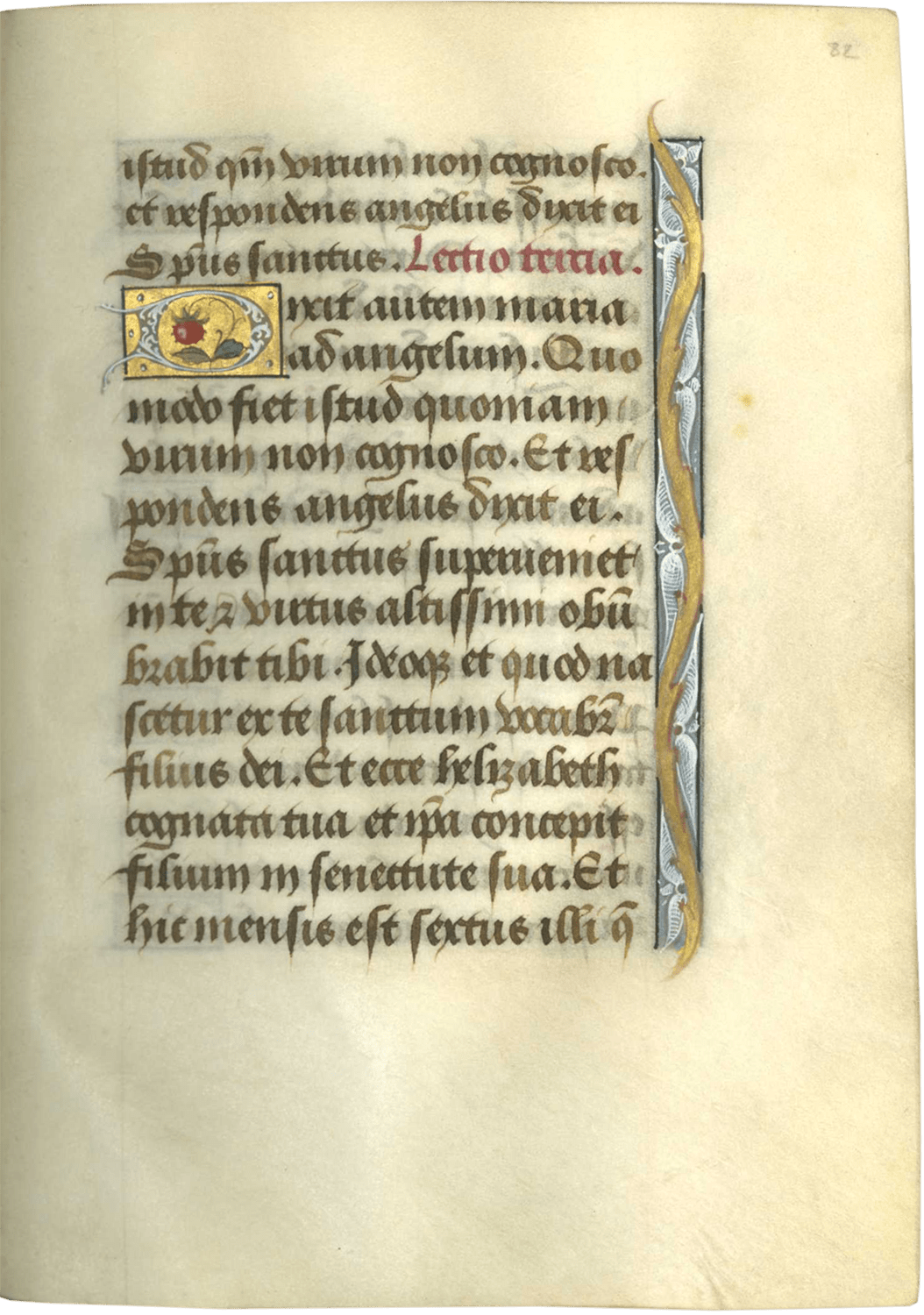
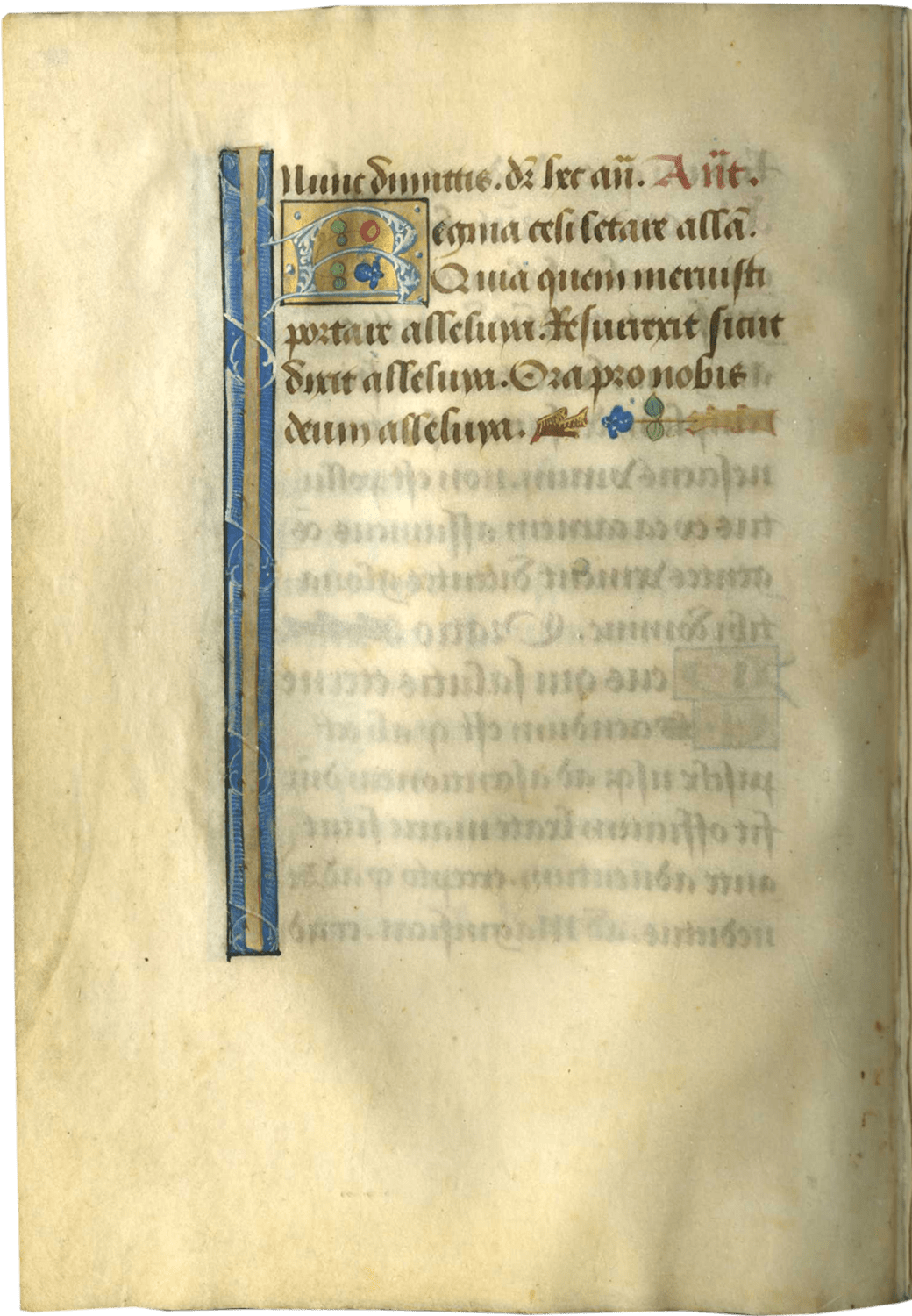
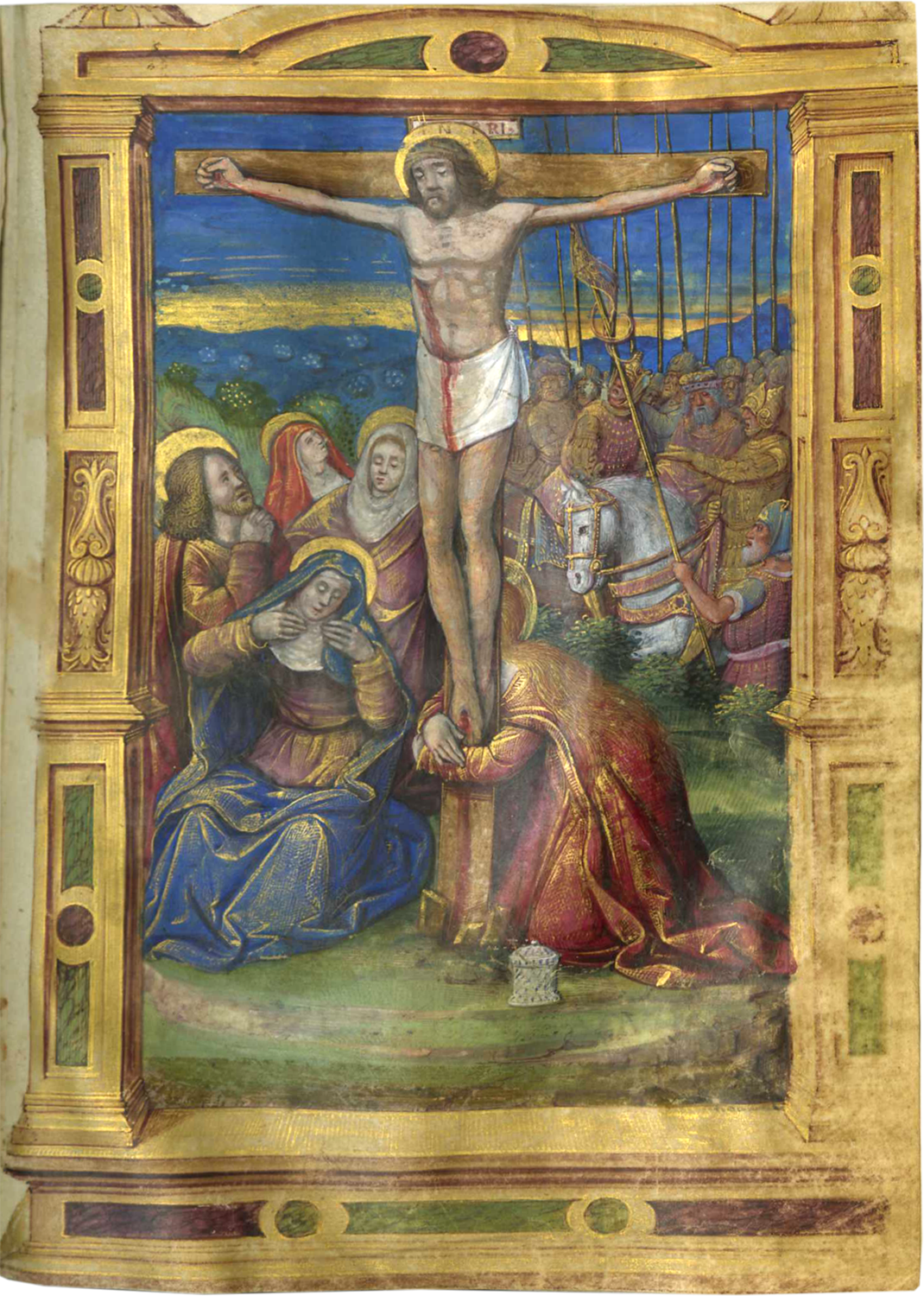

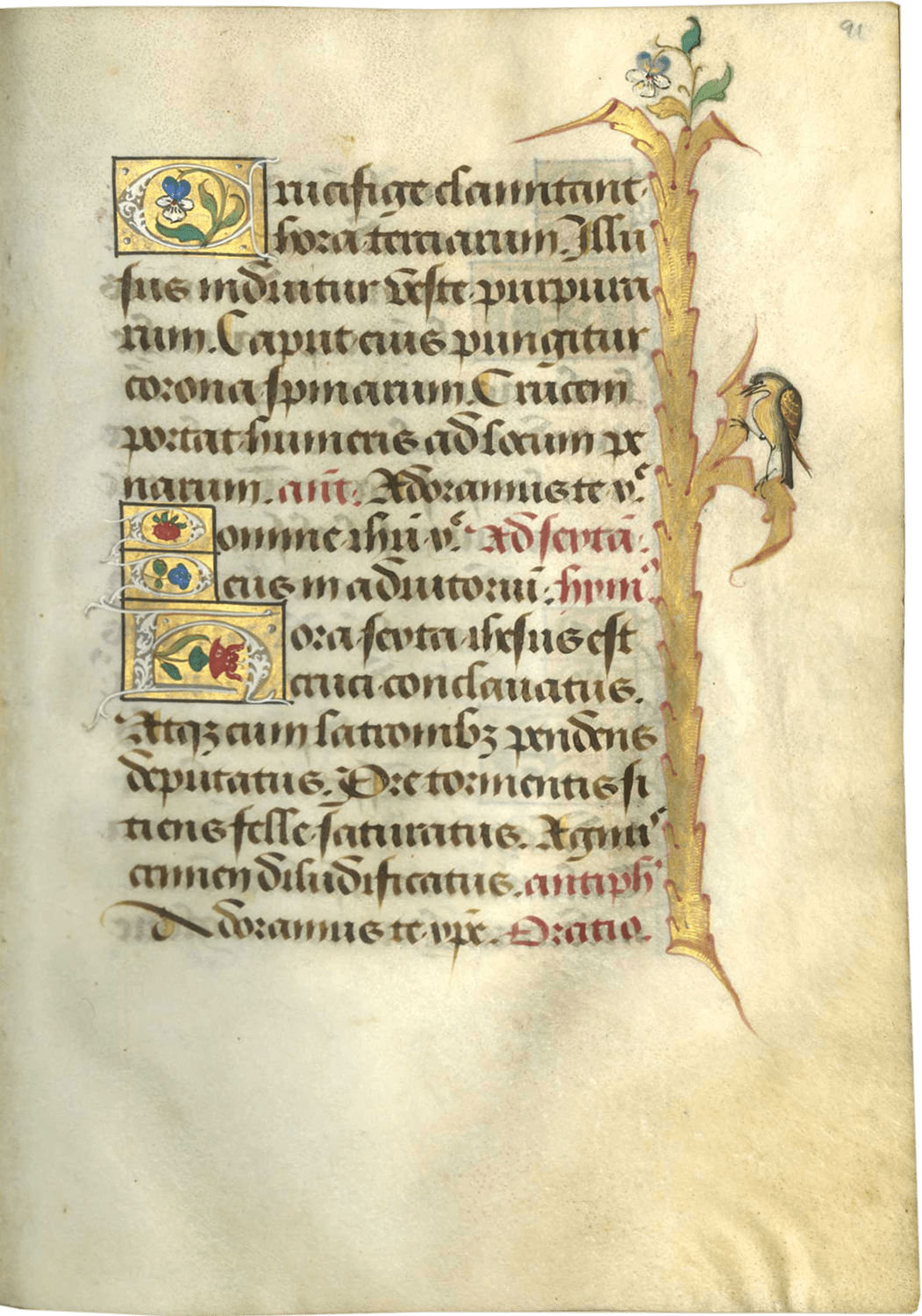

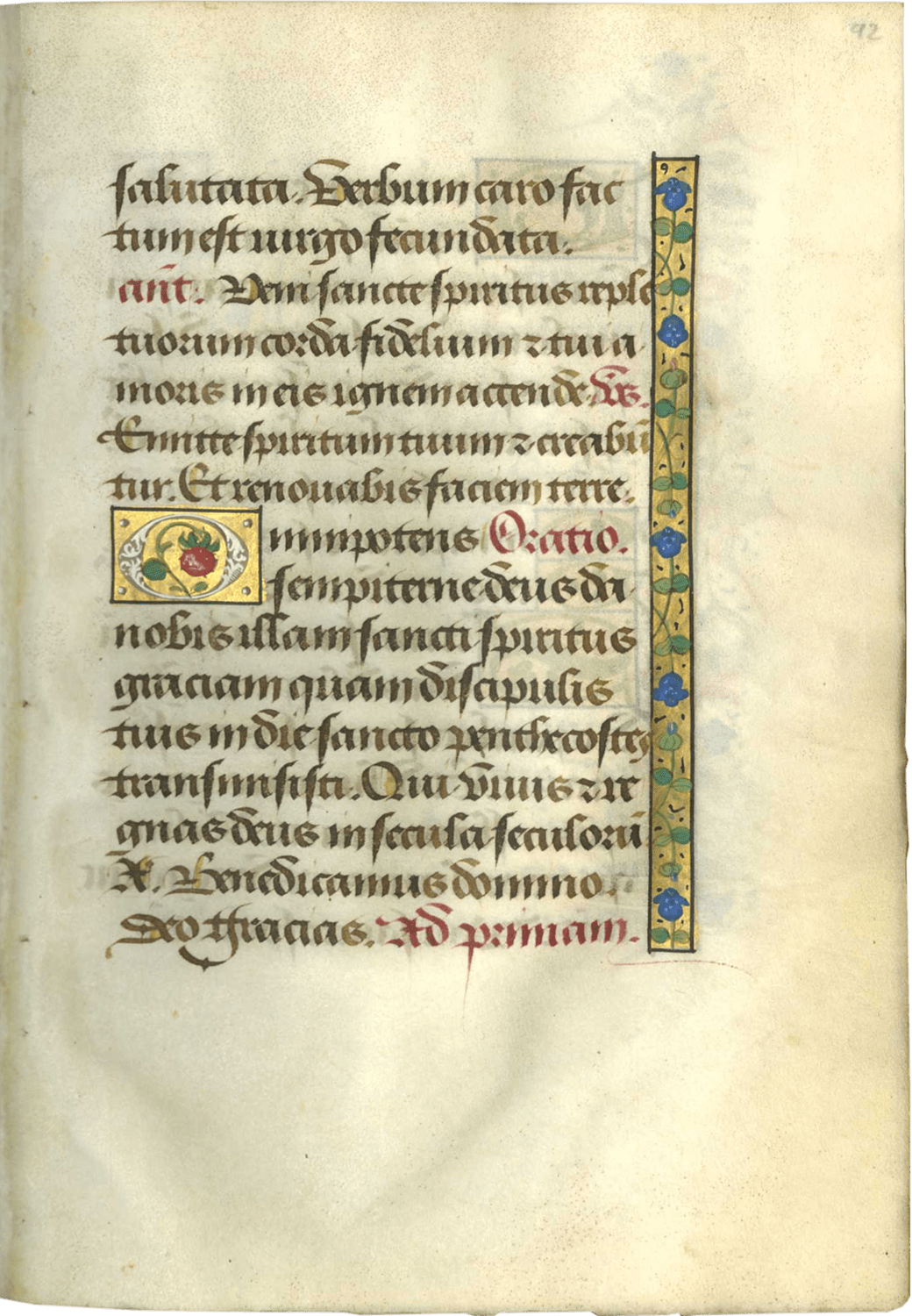
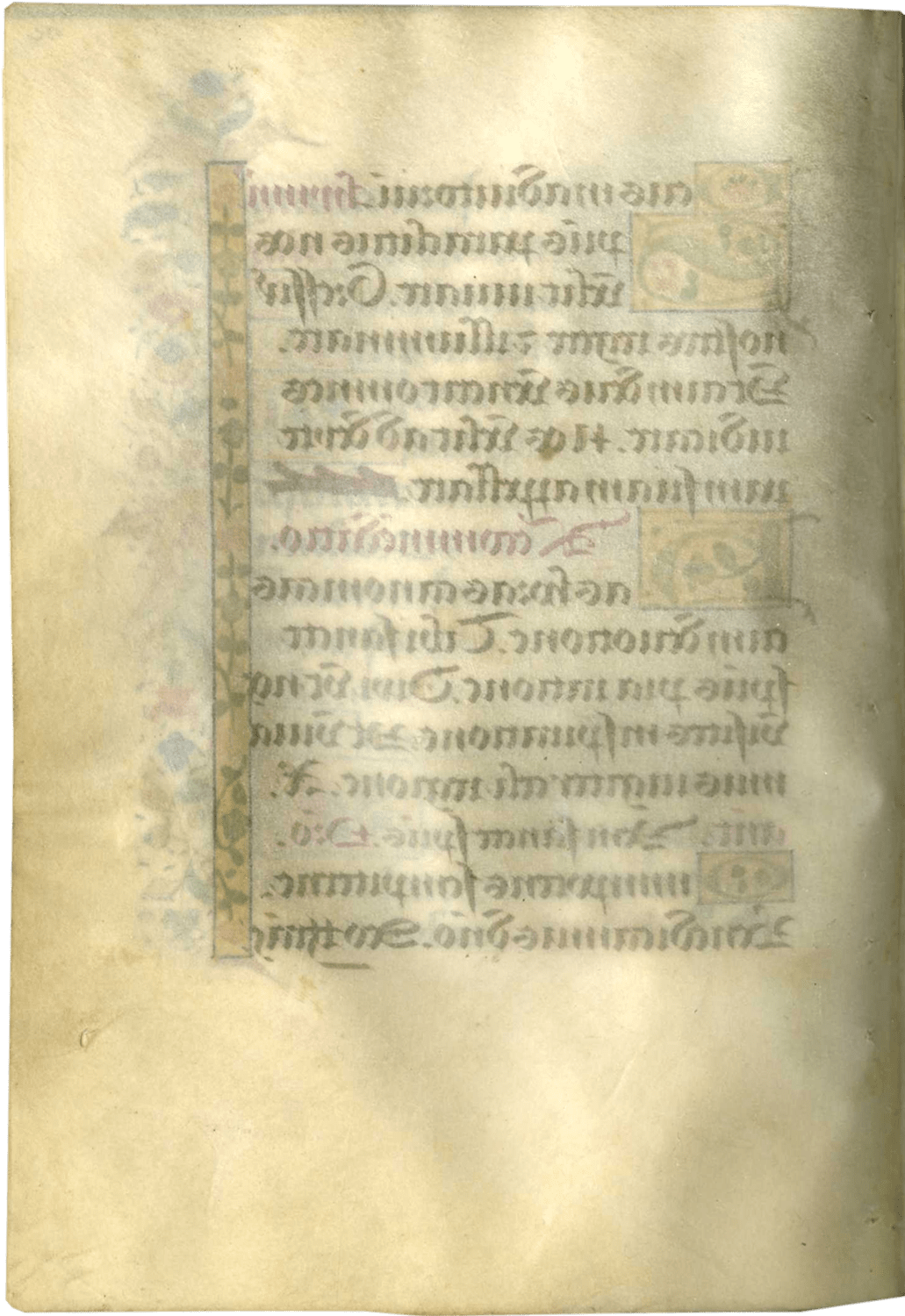

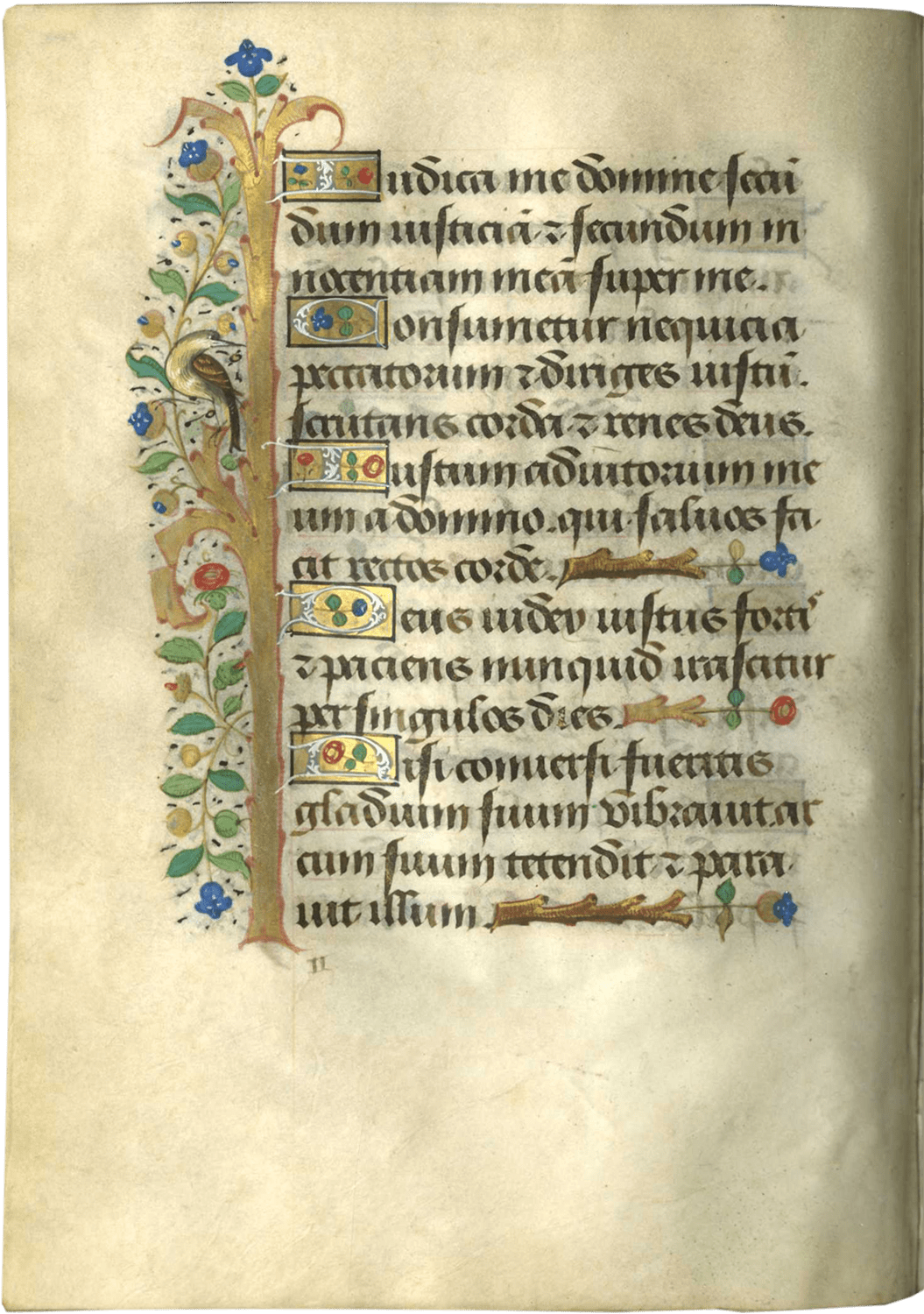
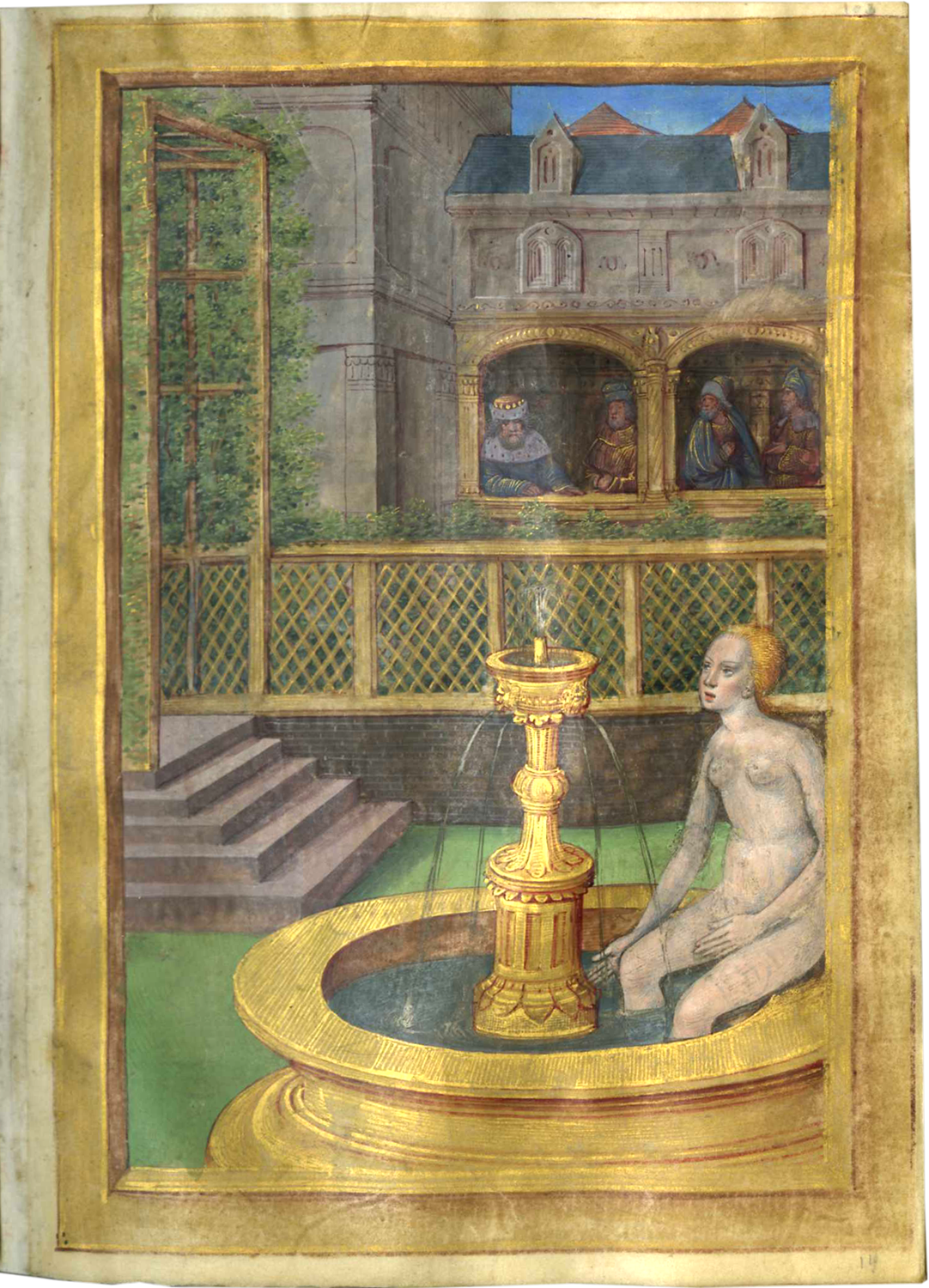

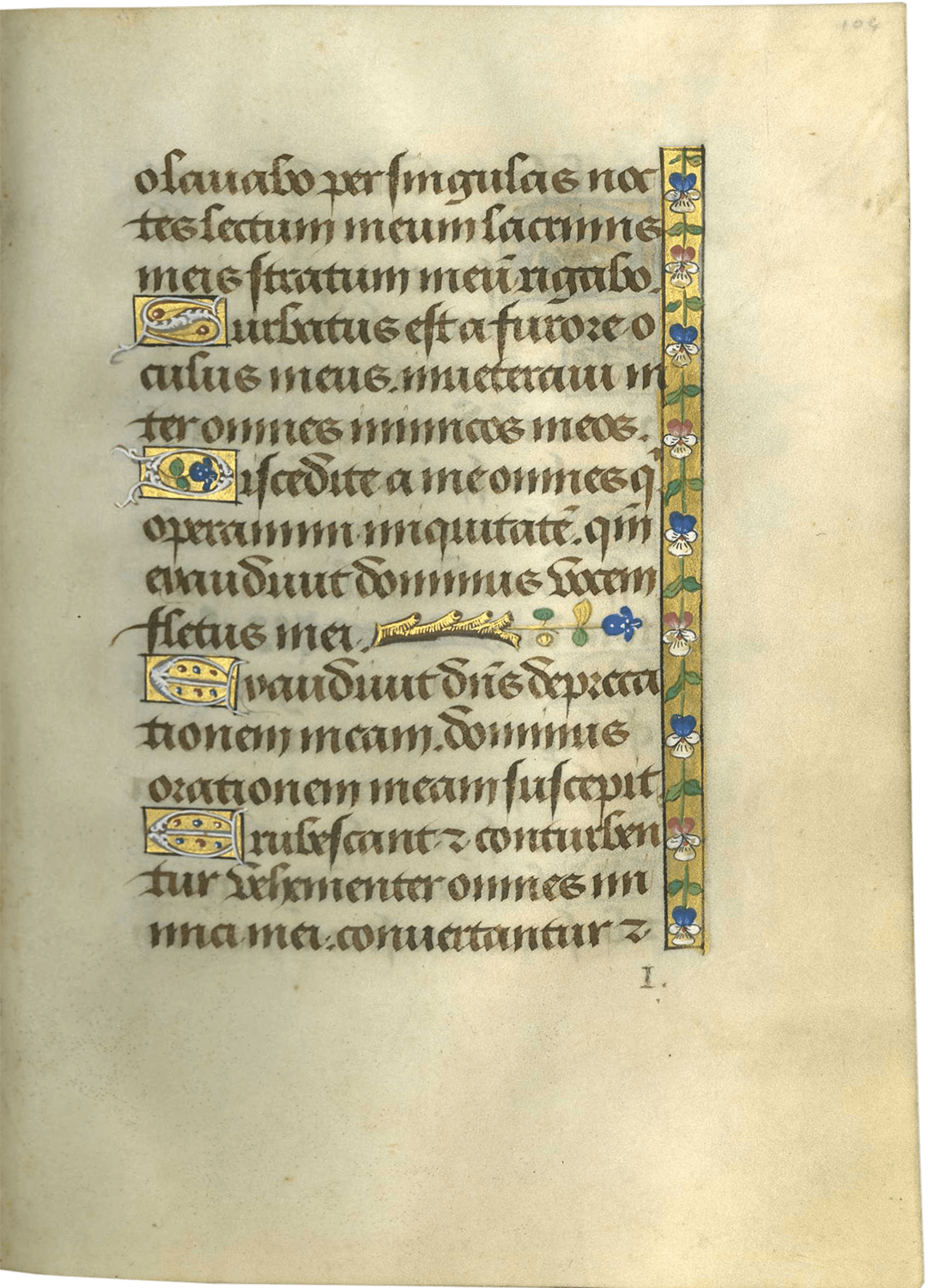

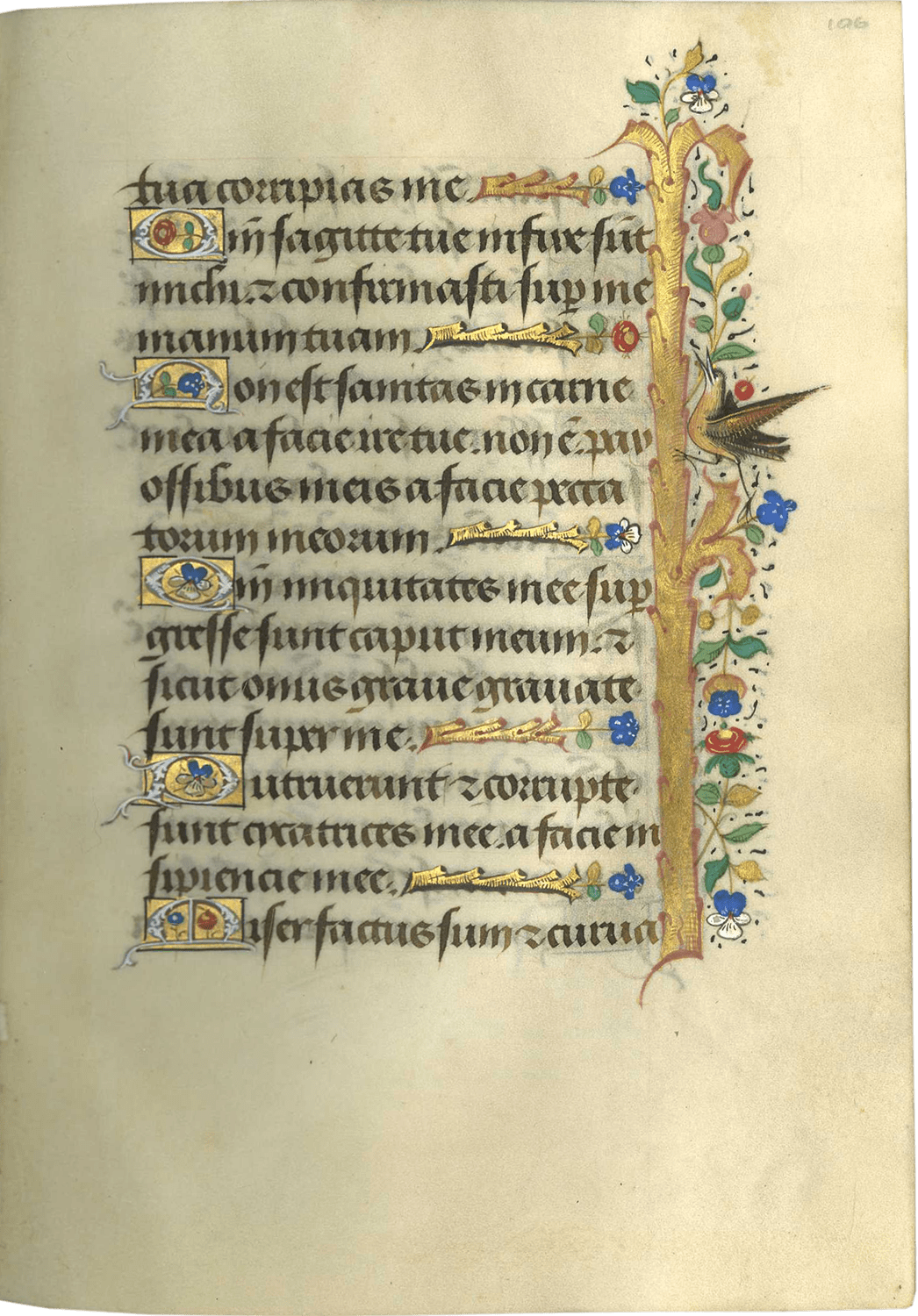

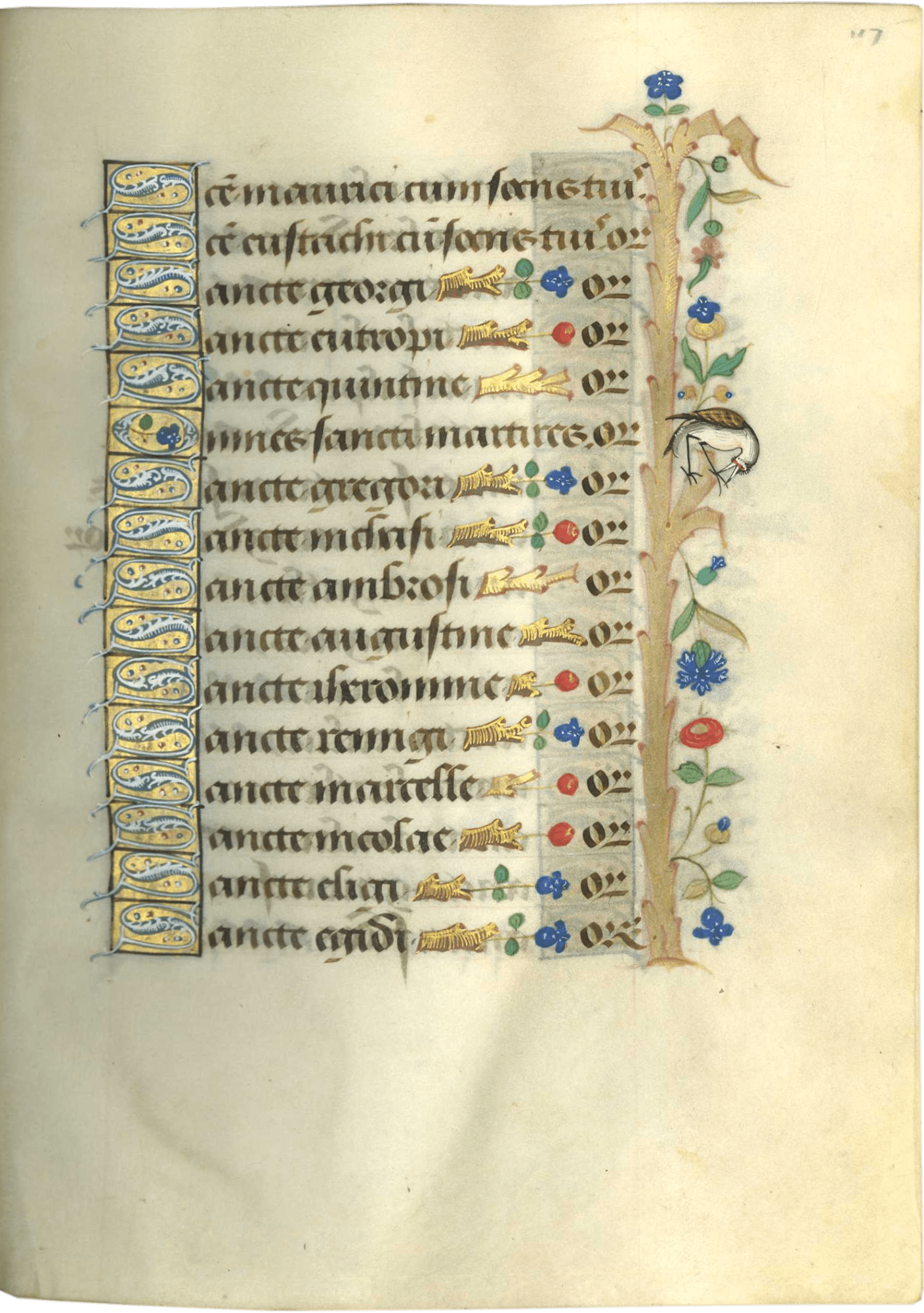

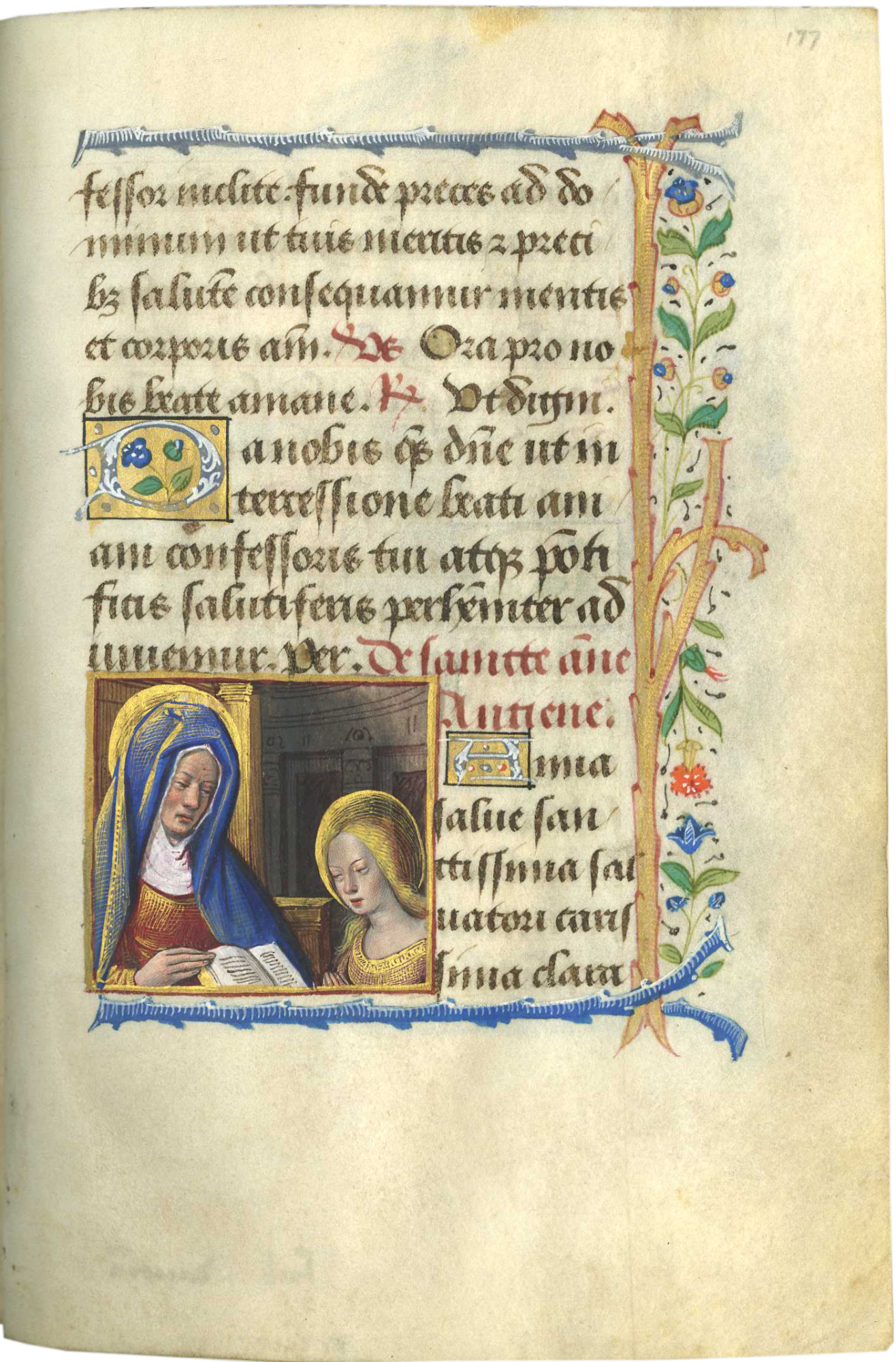

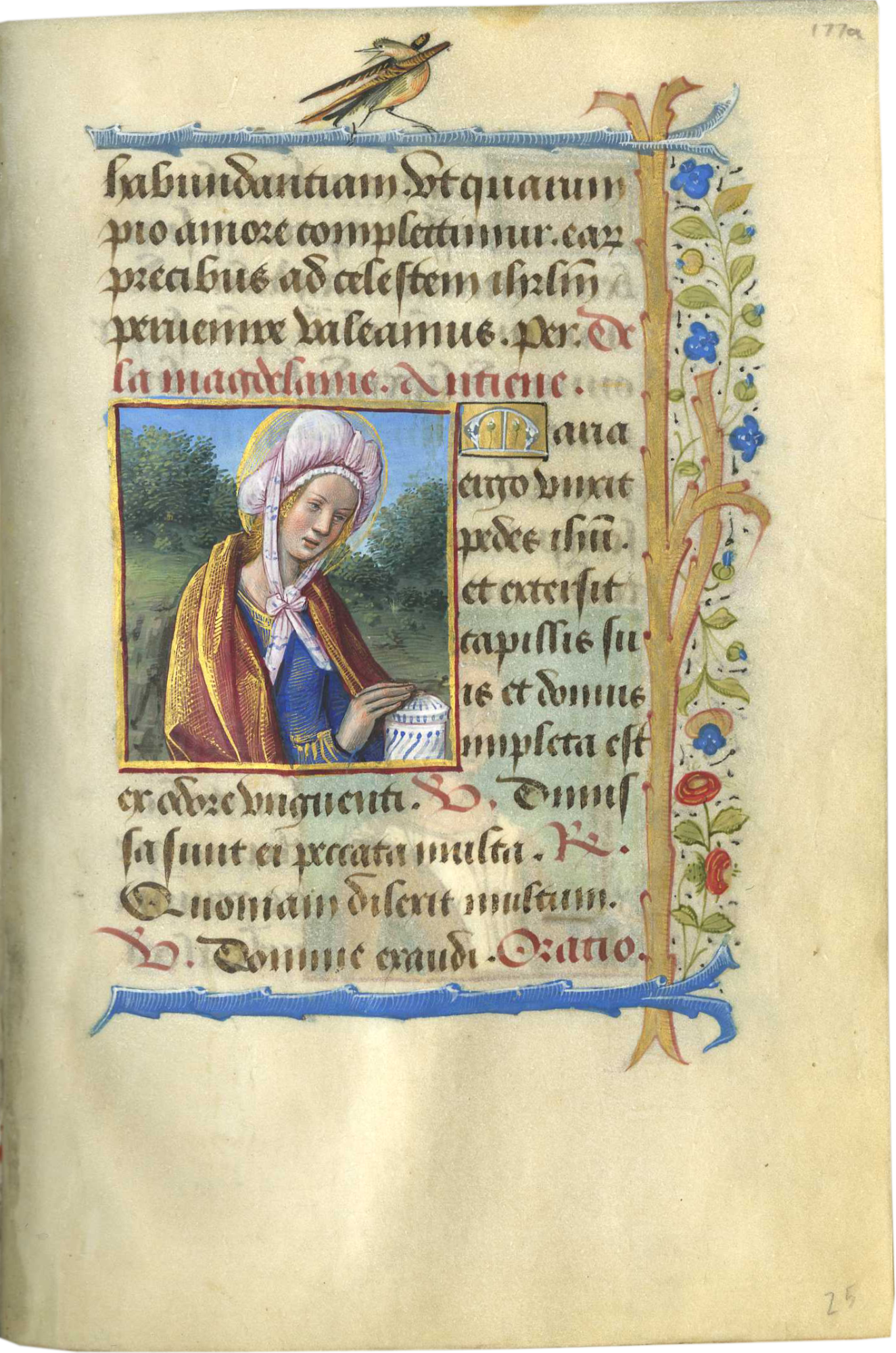
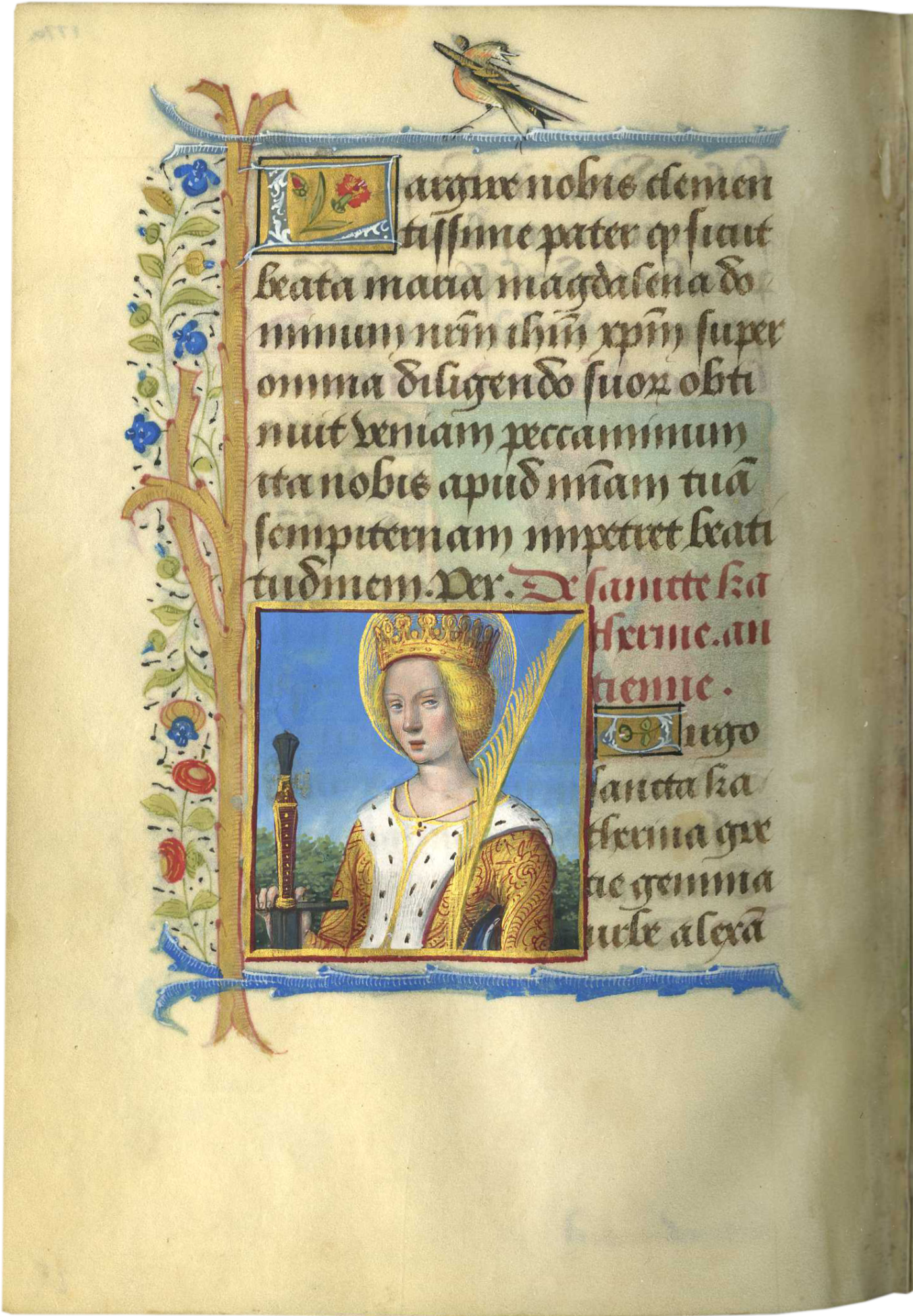
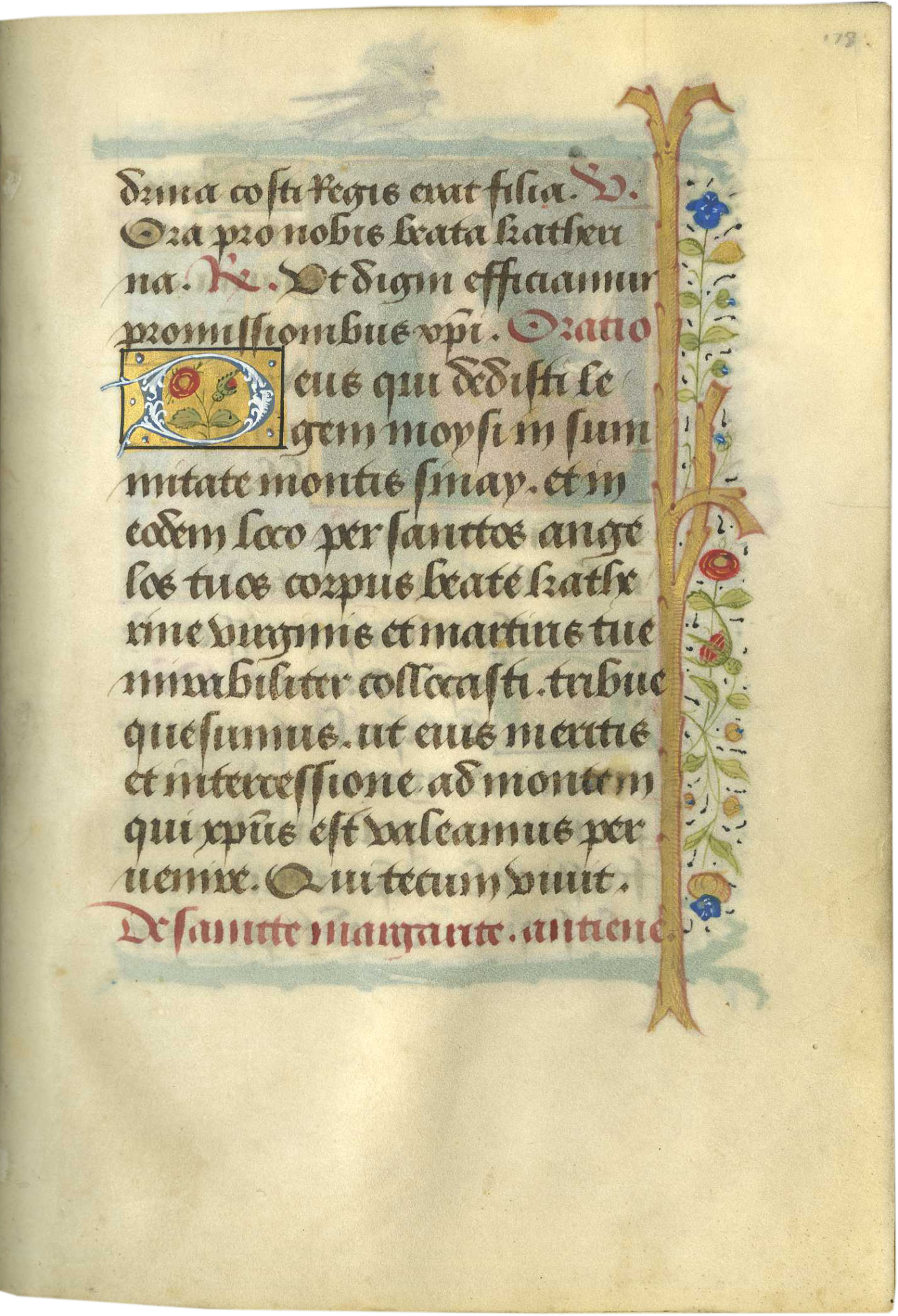
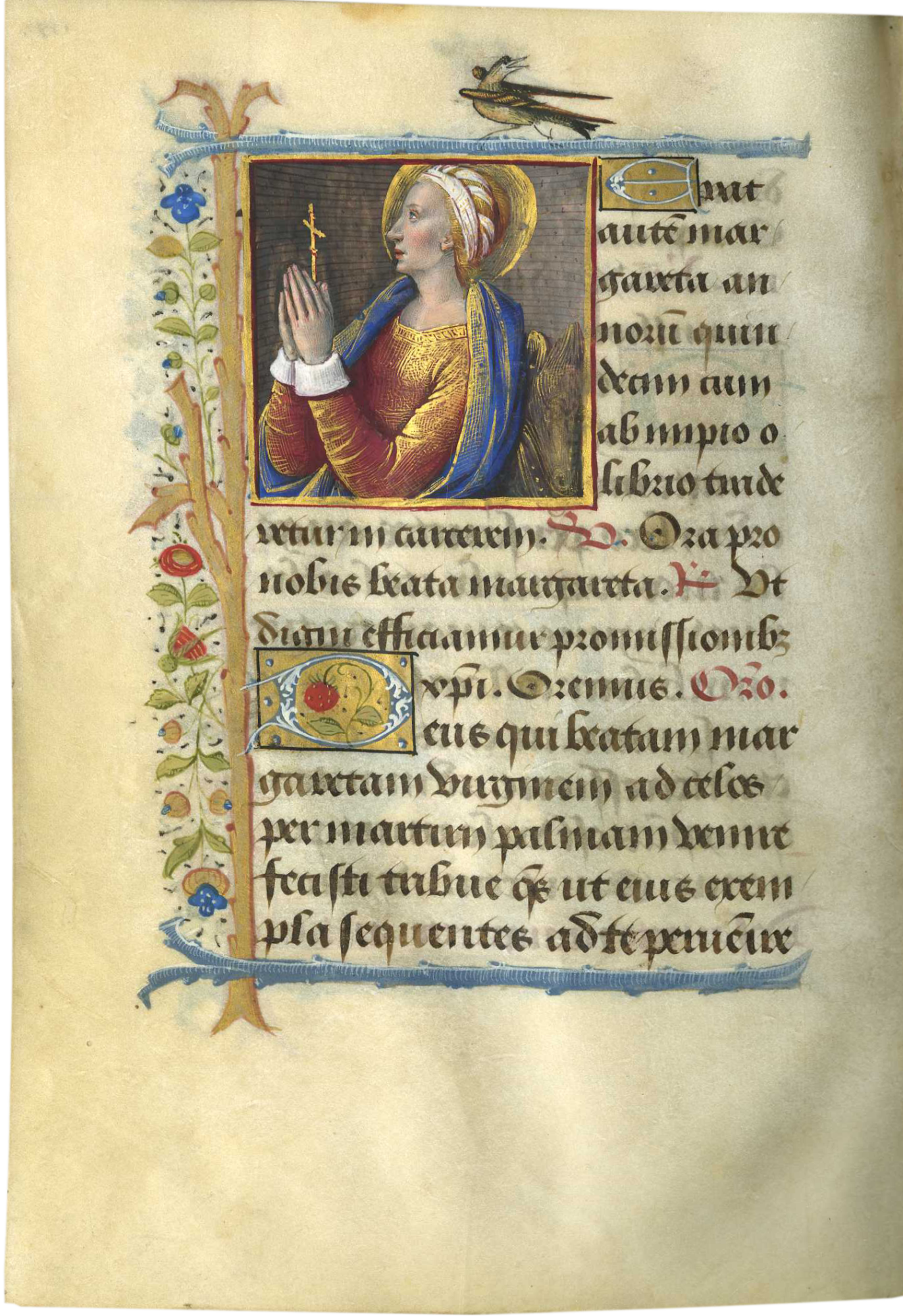
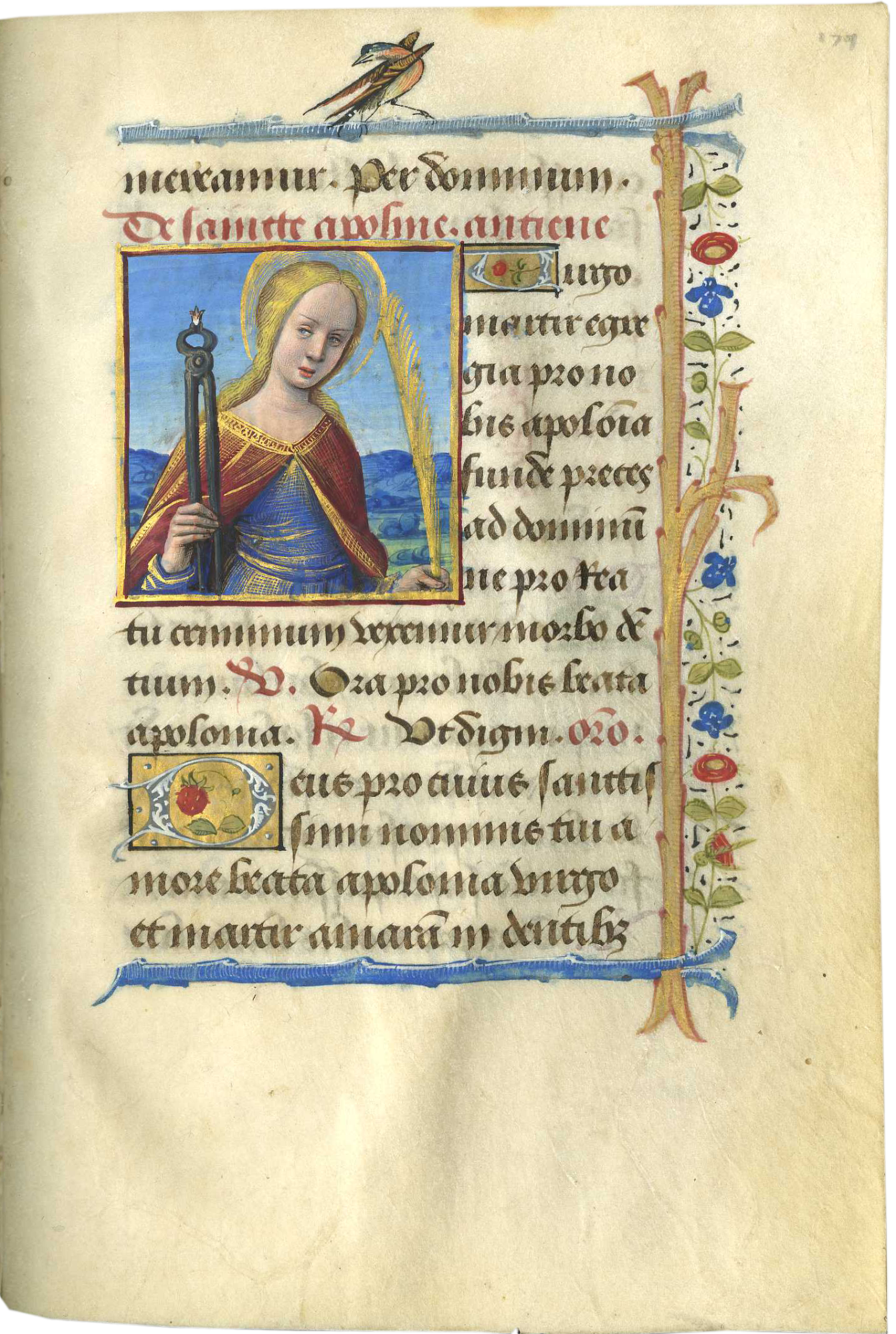

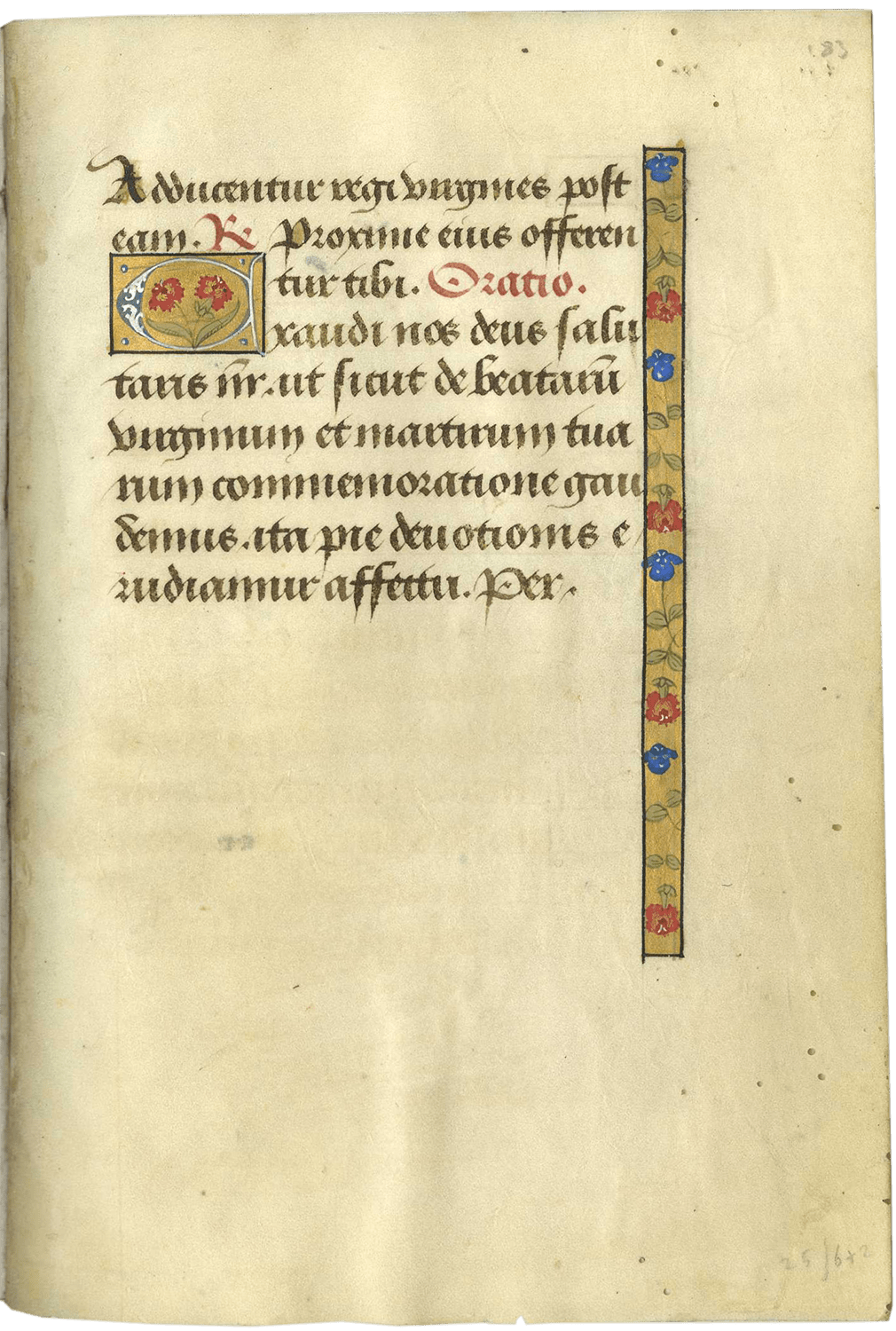
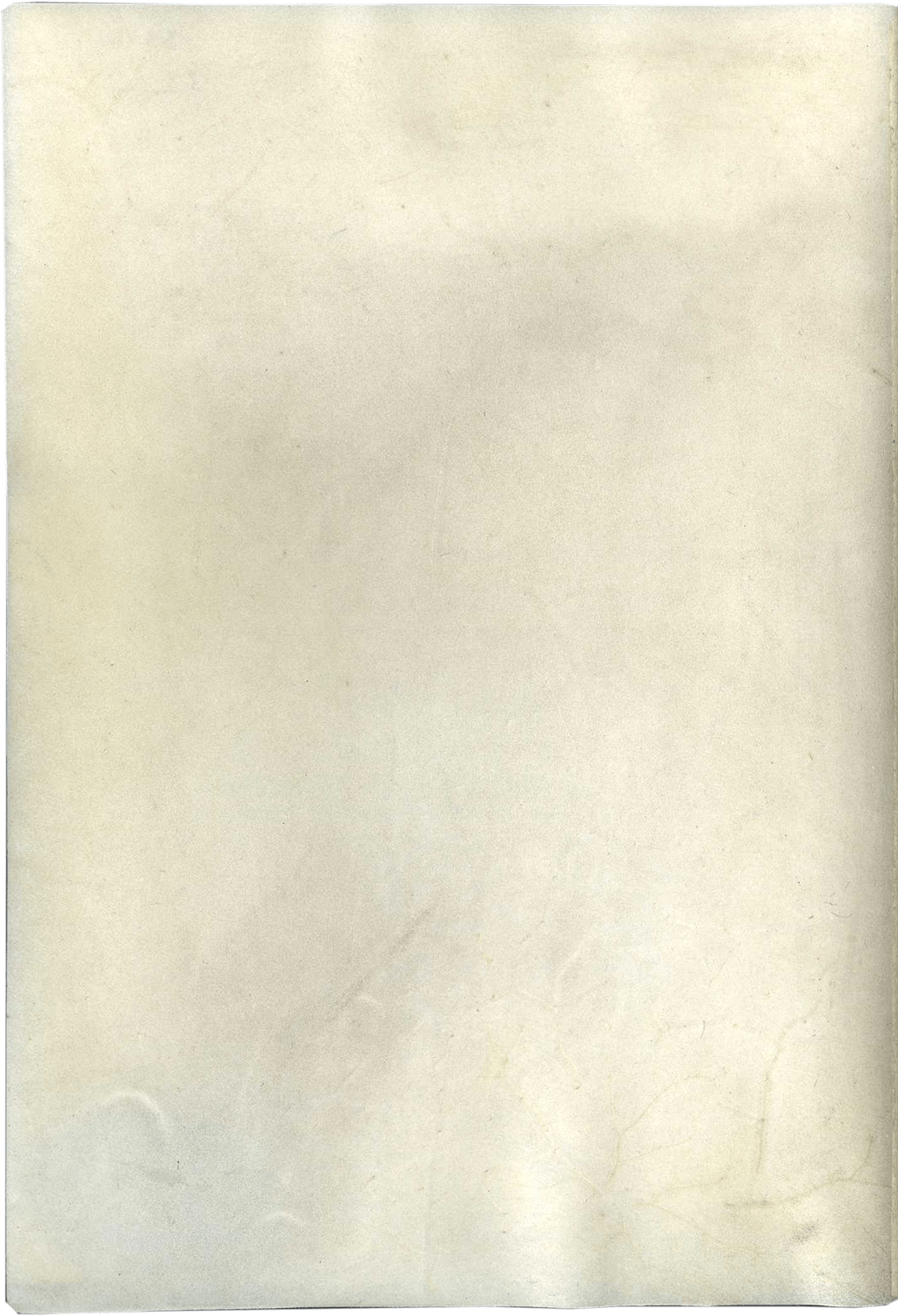
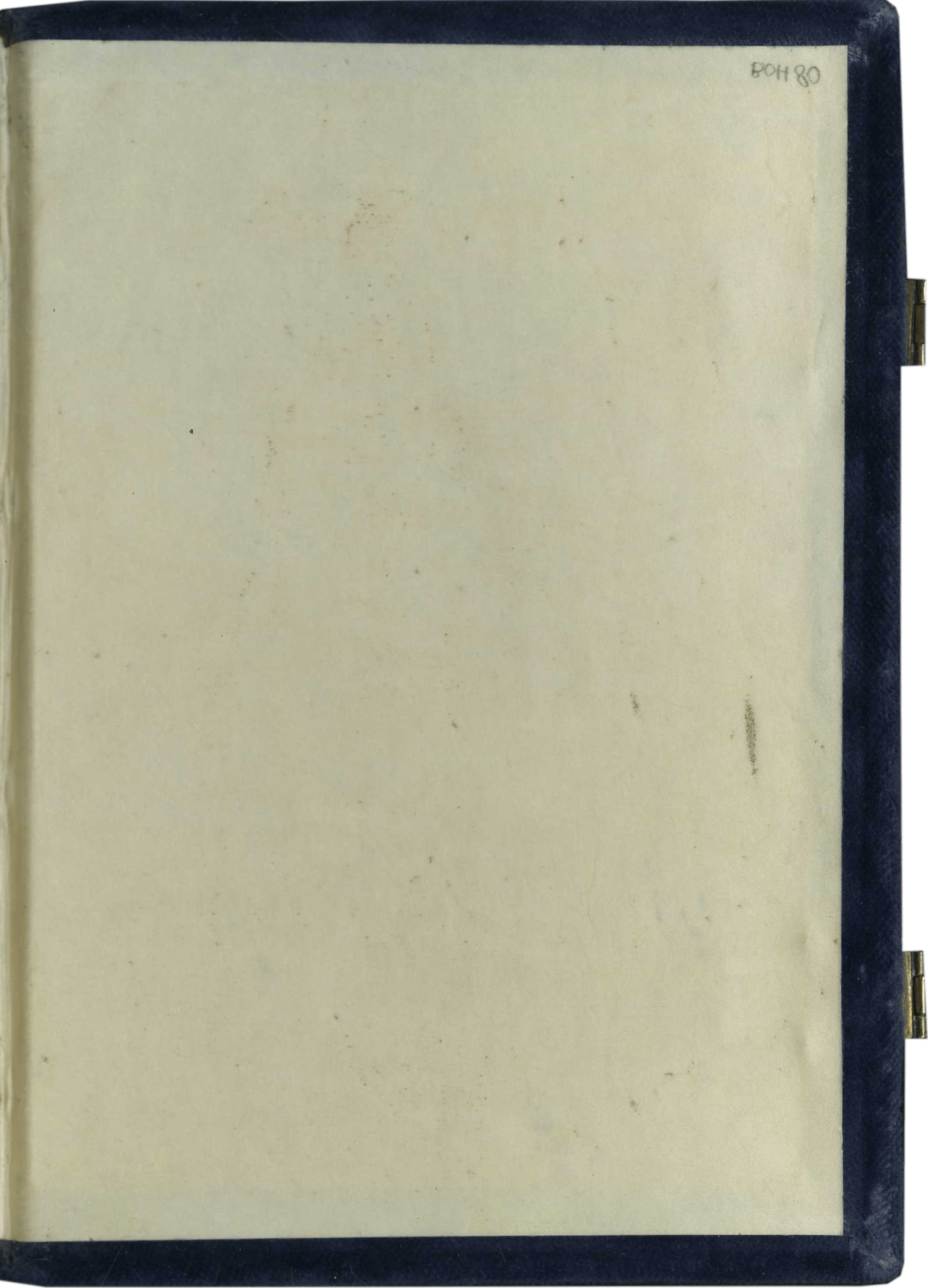
Description
An important manuscript produced at the height of the Renaissance in Jean Poyer's Workshop
This is an undeniably pretty and important manuscript, produced at the height of the Renaissance in Tours, and associated with an artist allied with one of the greatest of the exponents of the Tours style, Jean Poyer. Thanks to enthusiastic royal patronage, the influence of Paris, and the presence of Italian artists, Tours enjoyed an incomparable success as a center of French Renaissance art around 1500. Long considered a follower of the mythic Jean Bourdichon of Tours, Poyer has been rehabilitated in the past several decades. His style, employing clearly articulated figures, a frequent use of chiaroscuro, and daring color juxtapositions, is at once more complex and more subtle than that of some of his famous contemporaries, such as Bourdichon. Of grand format and in beautiful fresh condition, the present manuscript survives as a fine example of his style and that of his workshop. With its five large miniatures, its numerous smaller miniatures, and its rich unusual border decoration on all pages, the manuscript presents a visual tour de force.
184 ff. (including f. I 77a), preceded and followed by modern pastedowns and a single upper and lower flyleaf, lacking one miniature (Pentecost) at the beginning of the Hours of the Holy Spirit, today in Cleveland, Museum of Arts, inv. no. 24.426, also missing some text leaves (collation: i-ii6, iii-xi8, xii4, xiii6 (8-2 [lacking miniature and a text leaf]),xiv-xvi8, xvii5 [8-3, missing i, vii-viii, text leaves], xviii-xxiii8, xxiv6, xxv6+1 [lacking part of suffrages; added text leaf of suffrages]), first quire of Office of the Dead misbound as quire 14 (should follow after quire 17), a few catchwords, written in brown ink in a regular batarde script, on 16 lines (justification 108 x 70 mm), rubrics in red, I - and 2-line high initials in grey and modelled in white on gold grounds infilled with colored flowers, line-fillers of tree branch work (“bois écotés”) and flowers, a variety of outer borders on every page, mostly gold panels filled with colored flowers, blue panels decorated with knotted rope or tree branches, or tree branch work in gold or blue with floral decoration, similar three-quarter borders in calendar and surrounding small miniatures, 17 small and 5 full-page miniatures, two of them with overpaint (f. 61 v and f. 89). Bound in modern blue velvet over wooden boards, back sewn on 4 raised bands, brass catches and clasps, gilt edges. Dimensions 177 x 125 mm.
Provenance
1. Copied and illuminated in Tours based on script and stylistic elements. The Calendar in French is very full but does not provide any particular localization. The liturgical of the Hours of the Virgin and the Office of the Dead is the universal use of Rome.
2. Sold at Christie’s, London, 26 June 1991, lot. 39; see also E. Konig, in Tenschert, Leuchtendes Mittelalter V, XXX (1993), no. 28, pp. 470-489.
3. North American Private Collection
Text
ff. I- I 2, Calendar, in red, blue and gold;
ff. I 3v- I 9, Gospel Sequences;
ff. I 9-22v, Obsecro te;
ff. 23-25,0 intemerata;
ff. 26v-71v, Hours of the Virgin (Use of Rome), with Matins (f. 26v), Lauds (f. 36v), Prime (f. 48),Terce (f. 51 v), Sext (f. 55), None (f. 58),Yespers (f. 61 v), Compline (f. 68);
ff. 72-80, Psalms for days of the week, rubric, Tres psalmi sequentes dicuntur diebus martis et veneris;
ff.80-88v, Short hours for Advent, rubric, Per totum adventum dicitur hec antiphona;
ff. 89-91 v, Hours of the Cross (lacking end);
ff. 92-94, Hours of the Holy Spirit (lacking opening);
ff. 95v-102v, Office of the Dead (first quire misbound, the rest of the Office of the Dead found on ff. 124-147v);
ff. I 03v-123v, Penitential Psalms;
ff. I 24-147v, Office of the Dead (Use of Rome);
ff. I 48- 170v, Prayers;
ff. I 70v-183, Suffrages (with last leaf added out of sequence)
Early sixteenth-century literature on art in France praised Jean Poyer’s name together with such illustrious artists like Jean Fouquet, Jan van Eyck, Simon Marmion, Albrecht Dürer and Michelangelo (on Jean Poyer see esp. F. Avril, 1993, pp. 306-318; R. Wieck, et al., 2002; and M. Hofmann, 2004). A few documents from 1465 to 1498 sketch Poyer's career. In 1497, for example, he received payment for a “petites heures” for Anne of Brittany, a fragment of which may survive in a tiny single leaf in Philadelphia (Free Library, Lewis MS 11.15a). The real connection between Poyer’s name and a consistent body of work depends on matching this oeuvre with the personality of the artist who emerges from the documents. Although Jean Bourdichon has been described as Fouquet’s most important follower, Poyer, whose work was also greatly in vogue at court, was not only an exceptionally skilled painter but also, like Fouquet, an explorer of new artistic concepts. His style is marked by vibrant colours, increasingly dynamic figures, and amazing spatial effects that introduced Italian High Renaissance conceits to France at an early stage around 1500. A terminus ante quem for his death comes from Jean Lemaire de Belges’s Plainte du désire, composed before Easter 1504, when he praises Poyer among other famous dead artists.
Most works that have survived in Poyer’s style date from the last decade of the fifteenth century. Stylistic analysis reveals two main workshop collaborators who understood the master’s art to an exceptionally high degree. One of them was charged with decorating the present Book of Hours together with another otherwise unidentified painter. The central figure of the miniature with Job and his friends is dressed in a blue robe with a gold collar, decorated with red capitals. When the manuscript first became known in 1991, the script on the collar of this figure was deciphered as IOAN TURO[NEN]S[IS] standing for Johannes Turonensis or Jean of Tours. Basing himself on the inscription along with an analysis of the style, which shows undeniable “Poyetian” features, Eberhard König published the manuscript in 1993 as “the” autograph work by Jean Poyer. Apart from the fact that such inscriptions are difficult to decipher as they appear hidden among decorative fantasy letters, this manuscript cannot be linked to Poyer’s core body of work for stylistic reasons. However, it may well include his collaborator's name: Jean was a common name in Tours.
This artist of the full-page miniatures has now been established as the Painter of the “Signed Hours,” one of the major figures of Payer's workshop (see M. Hofmann, 2004, esp. pp. 47-55). We identify him as Jean of Tours. Close to the master is the fine modelling of faces with overall tiny dense brush strokes including the use of light blue to animate grey zones. Also typical is the use of dense gold hatching for selected materials to enforce the strong effects of light and shadow. The occasional use of light pink in contrast to bright red and blue is a signature of Poyer’s color scheme. On f. 26, the magnificent Annunciation is clearly based on the Poyer model from one of his most famous works, the masterful Briçonnet Hours (Haarlem,Teylers Museum, MS 78, f. 21). Although this master understands Poyer’s language in detail, he sometimes lacks Poyer’s anatomical fluency. Job, for example, is depicted in profile while his upper body is slightly turned towards us. This twist, however, does not convince us as the chest seems quite flat. This manuscript proves that Poyer’s collaborators worked under strict control of the master following a high standard of quality. The borders too are unusually inventive: slim gold panels filled with flowers alternate with blue panels partly decorated with knotted rope, or tree branches with floral decoration; dynamic birds perch on the branches.
Hofmann has distinguished a second hand in the “Signed Hours,” the hand responsible for many of the miniatures on the text folios, which she describes as “Bourdichonesque.” This artist executed many of the miniatures in a man uscript so-called the “J. de M. Hours” now on deposit in Basel (Historisches Museum, MS Com. Lat. 124, ff. 126v, 133v, 174, and 211 v), and his style is characterized by oval heads with high foreheads, the use of violet drawing for the faces with thin eyebrows, long noses, red cheeks and small heart-shaped mouths. The relationship between the Basel manuscript, the “Signed Hours,” and Poyer’s masterpieces, including the Hours of Henry VIII in New York (Pierpont Morgan Library, MS H.8), and the actual functioning of his workshop, still needs to be disentangled. A full study of the present “Signed Hours” will necessarily occupy a central place in such an investigation.
Illustration
There are 5 full-page miniatures: f. 13, St. John on Patmos, stony rocks rising from the blue sea, within narrow golden Renaissance-style frame containing putti and dragons (outer margin of frame cropped and lightly rubbed); f. 26, Annunciation, within narrow gold Renaissance style border, containing six angels playing musical instruments; f. 89, Crucifixion, with Mary Magdalene, her face hidden behind the Cross, her arms encircling the Cross, many soldiers at back, within architectural border (head of border cropped and outer margins rubbed; partly overpainted); f.95, Job, seated on a dungheap, with his three rich friends standing, in a gold frame surround (very lightly rubbed, head of frame cropped);f. I 03, Bathsheba bathing in a golden fountain, David and his companions gazing at her from the palace windows; within gold frame border (outer margin lightly rubbed).- There are 17 small miniatures: f. 15, St. Luke (45 x 43 mm); f. 16v, St. Matthew, with angel (52 x 48 mm);f. 18, St. Mark writing (52 x 45 mm); f. 19,Virgo Lactans, on gold ground (42 x 45 mm); f. 23,Virgin and John the Baptist at foot of the Cross (50 x 45 mm); f. 36v,Visitation, showing only half-length Virgin and head of Elizabeth, golden-green rocks behind (52 x 47 mm); f.48, Nativity.Virgin and Child, Joseph’s face at back (54 x 45 mm); f. 51v, Annunciation to the Shepherds, a group of Shepherds in brown robes holding staves (46 x 45 mm); f. 55, Adoration of the Magi, in the foreground the head of a white-haired bearded King, with Virgin and Child (53 x 45 mm); f. 58, Presentation in the Temple (53 x 45 mm); f. 61 v, Massacre of the Innocents, a soldier tearing a child from the woman’s arm (54 x 47 mm) (partly overpainted); f. 68, Coronation of the Virgin, two angels placing the crown (52 x 47 mm); f. 177, St. Anne teaching the Virgin to read (40 x 45 mm); f. 177a, Mary Magdalene. (45 x 45 mm); f. 177av, St. Catherine with crown and sword (48 x 45 mm); f. 178v, St. Margaret praying (50 x 45 mm); f. 179, St. Apollonia, holding a tooth with pincers (48 x 45 mm).
Literature
Published in Hofmann, 2004, p. 48, pl. 144-148. Exhibited Morgan Library & Museum, 2000. See also, Avril, F. and N. Reynaud. Les manuscrits à peintures en France, 1440-1520, Paris, 1993; Tours 1500. Capitale des arts, Paris (exh. cat.), 2012; Hofmann, Mara. Jean Poyer: Das Gesamtwerk,Turnhout, Brepols, 2004; Wieck, R., W. Voelkle and M. Hearne. The Hours of Henry VIII. A Renaissance Masterpiece by Jean Poyet, New York, 2000.
Online Resources
On Jean Poyer: http://fr.wikipedia.org/wiki/Jean_Poyer
Hours of Henry VIII at the Pierpont Morgan (New York) http://www.themorgan.org/collections/
Leaf from the “Signed Hours,” Pentecost in the Cleveland Museum of Art: http://www.cleveIandart.o rg/collections/
